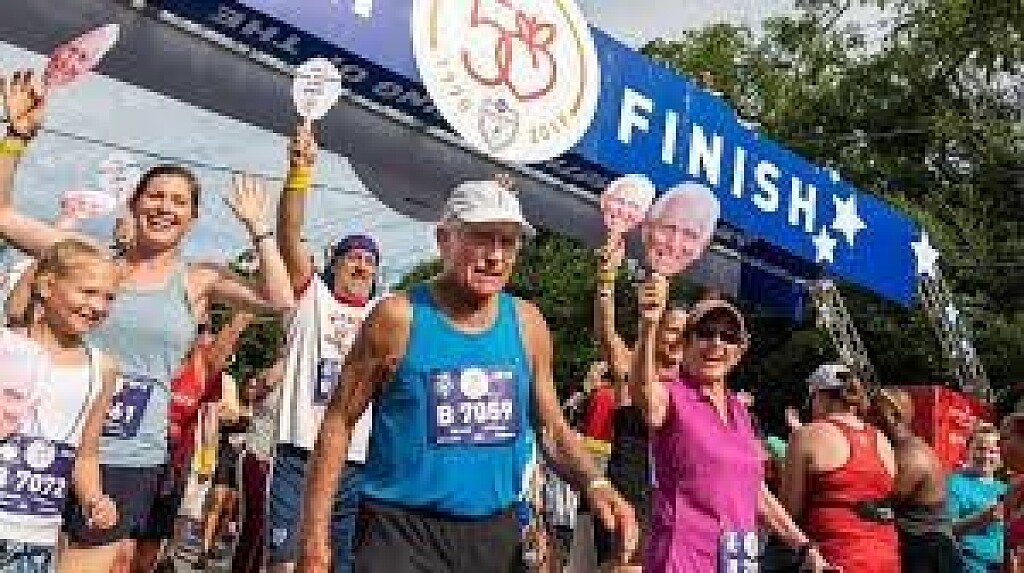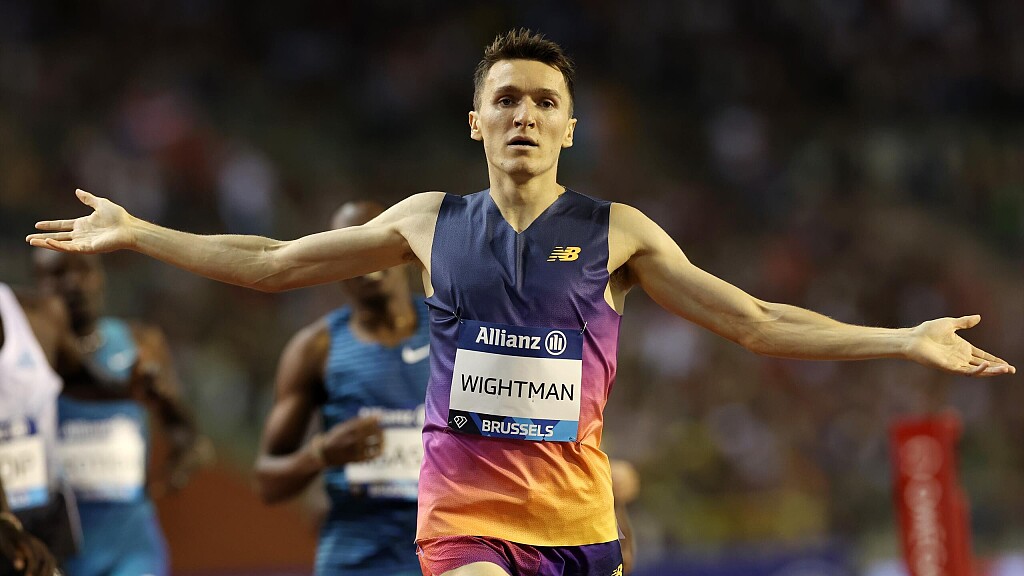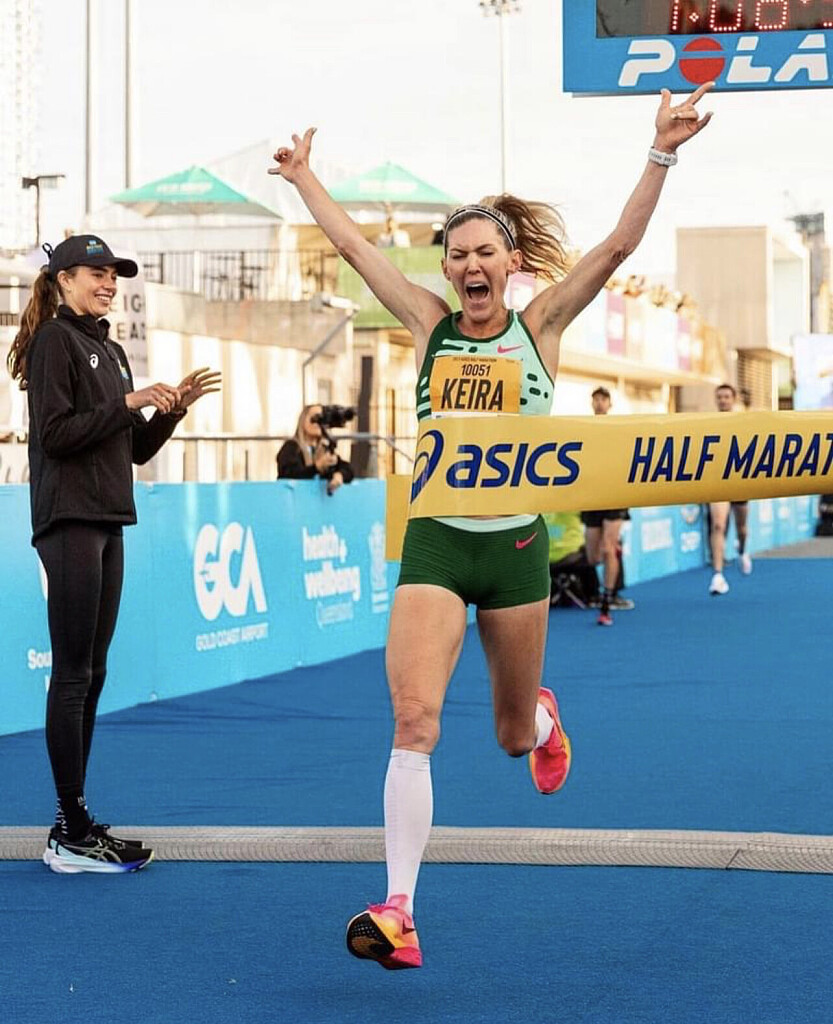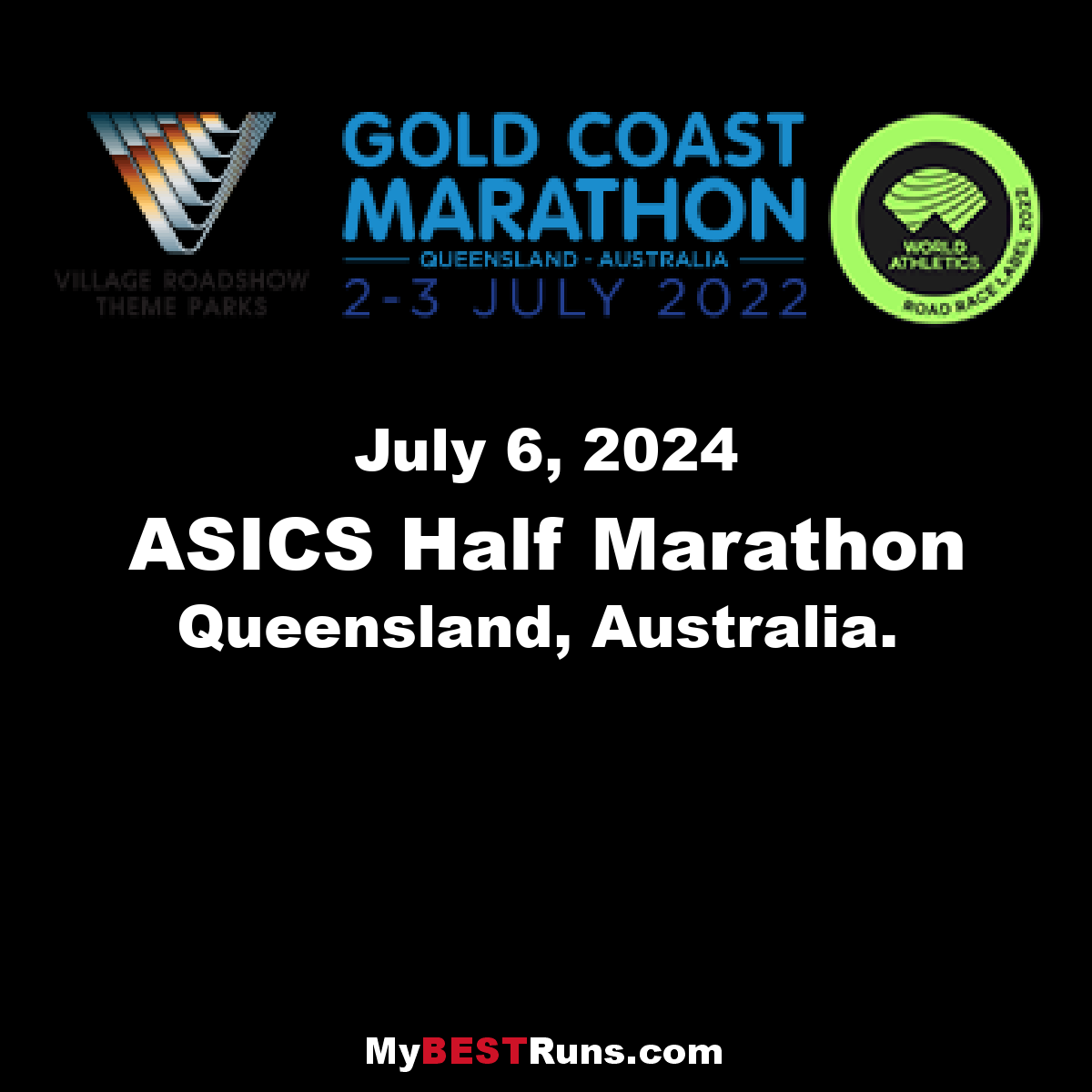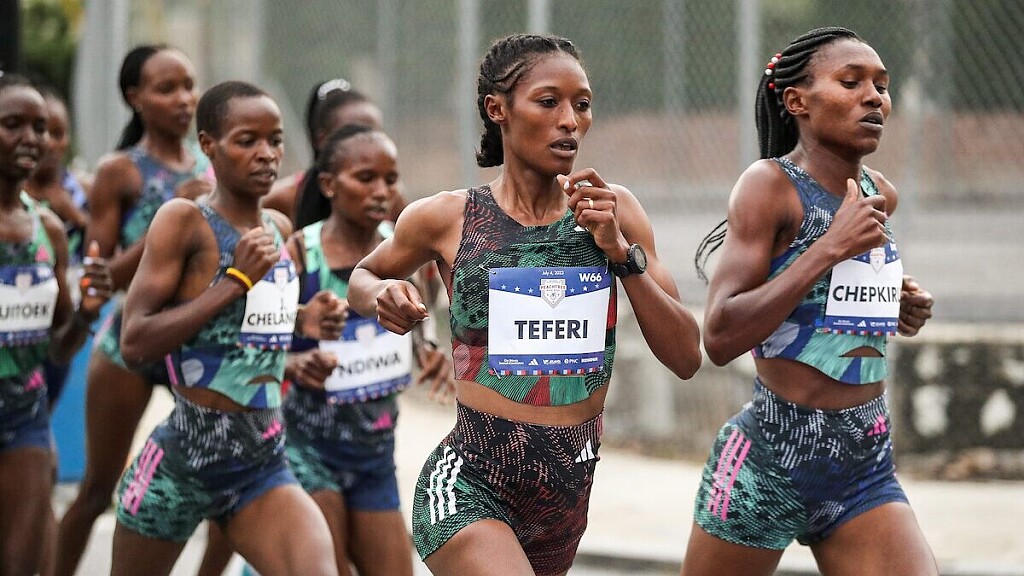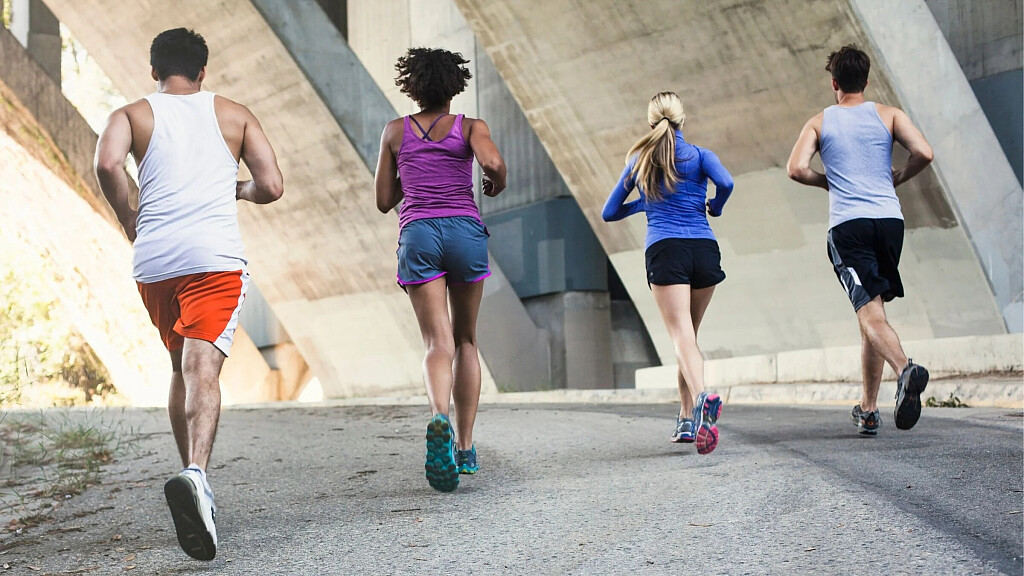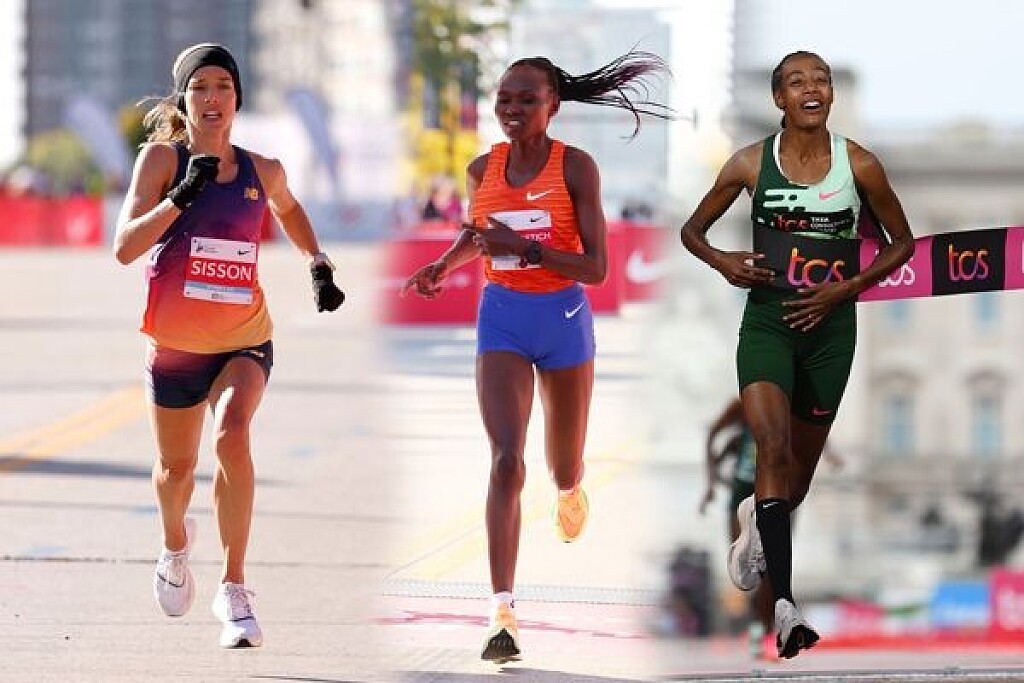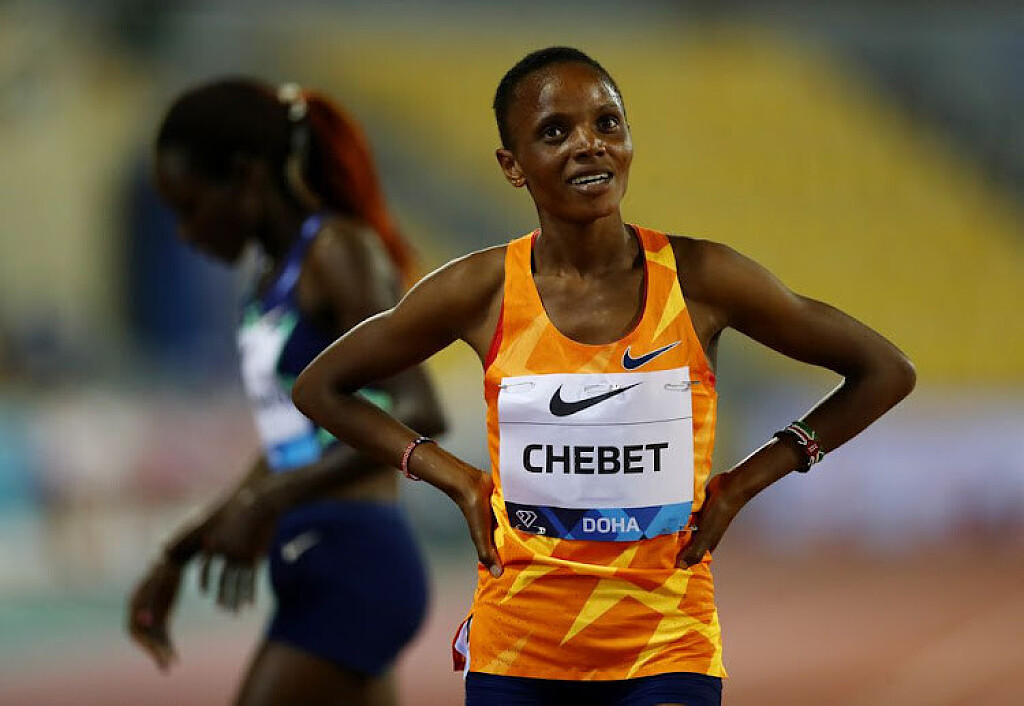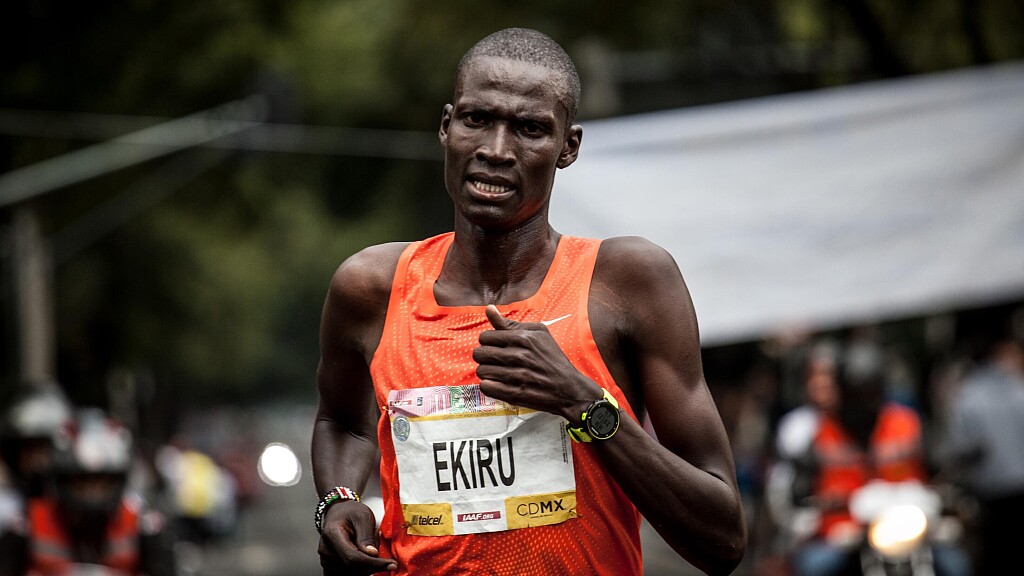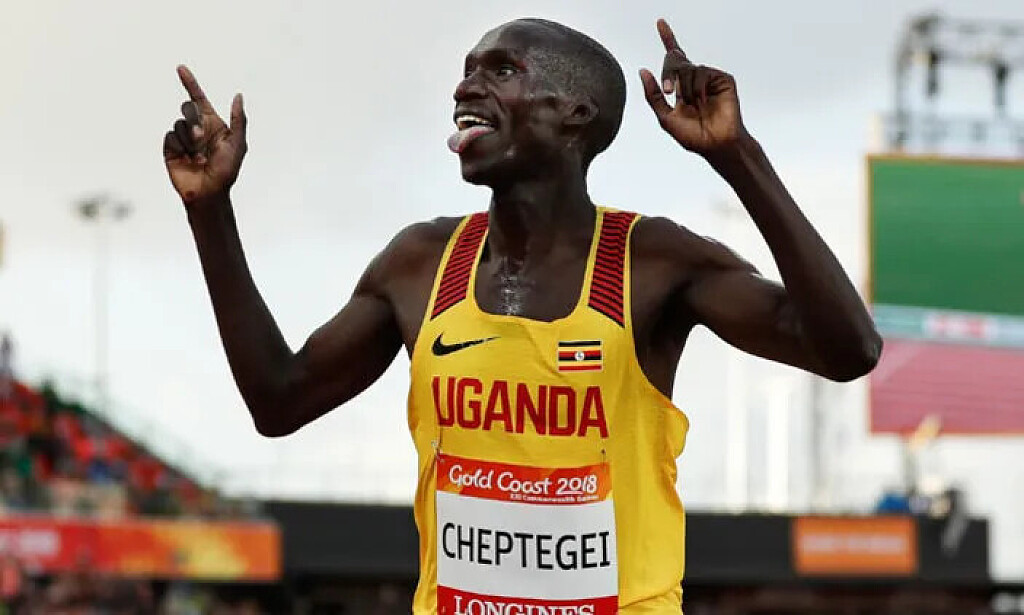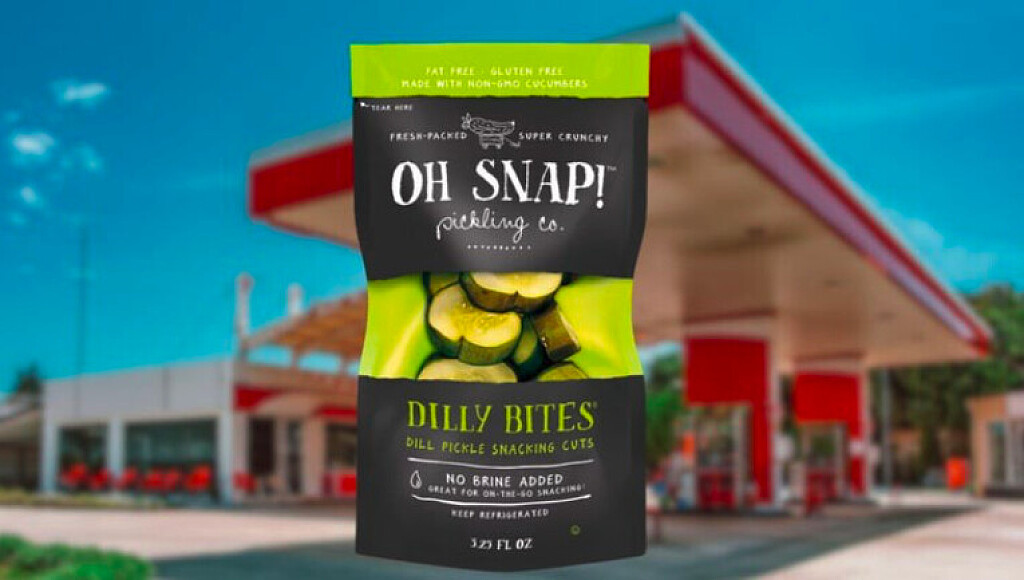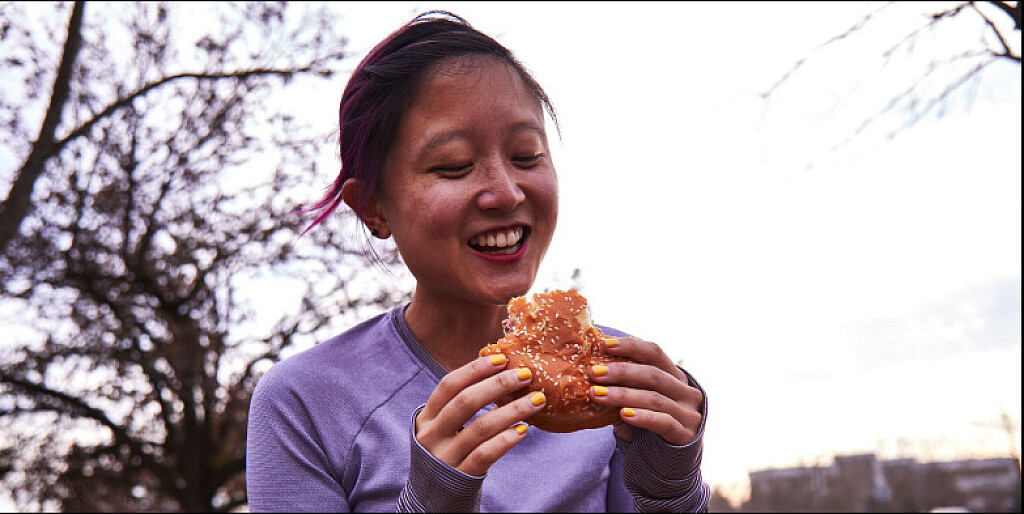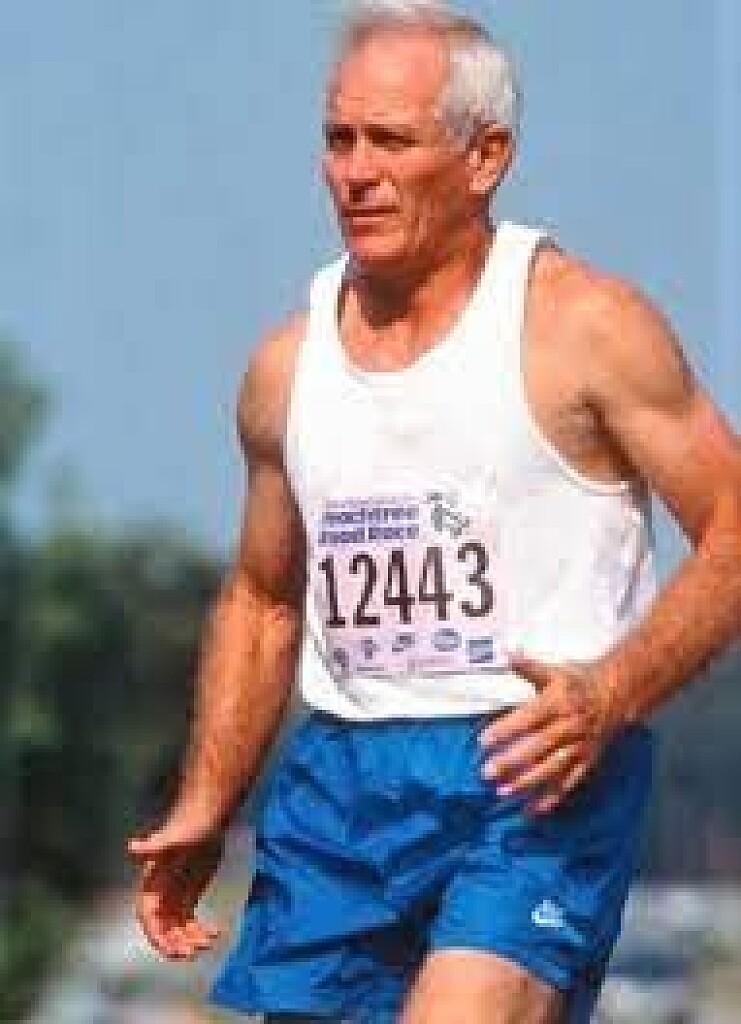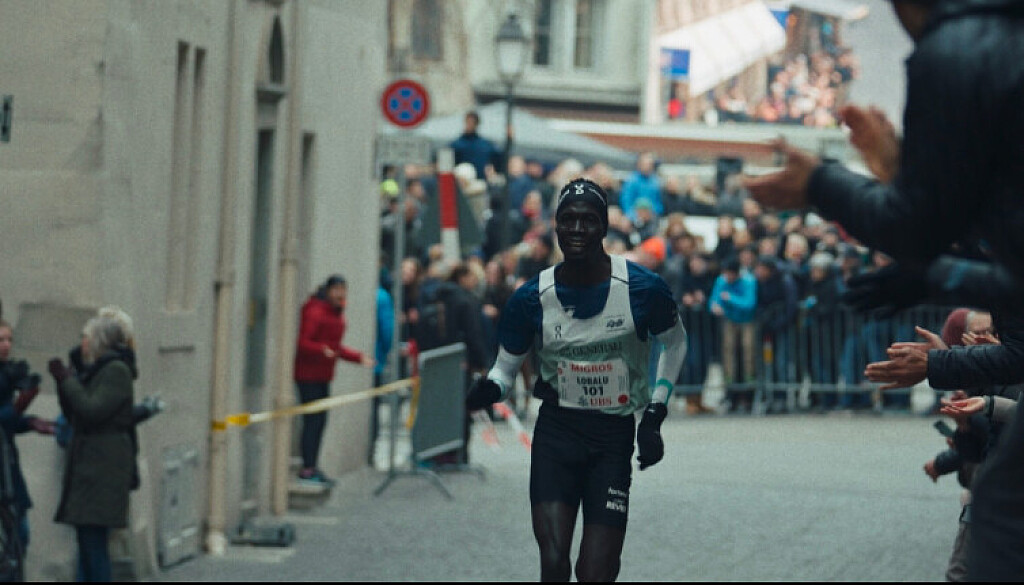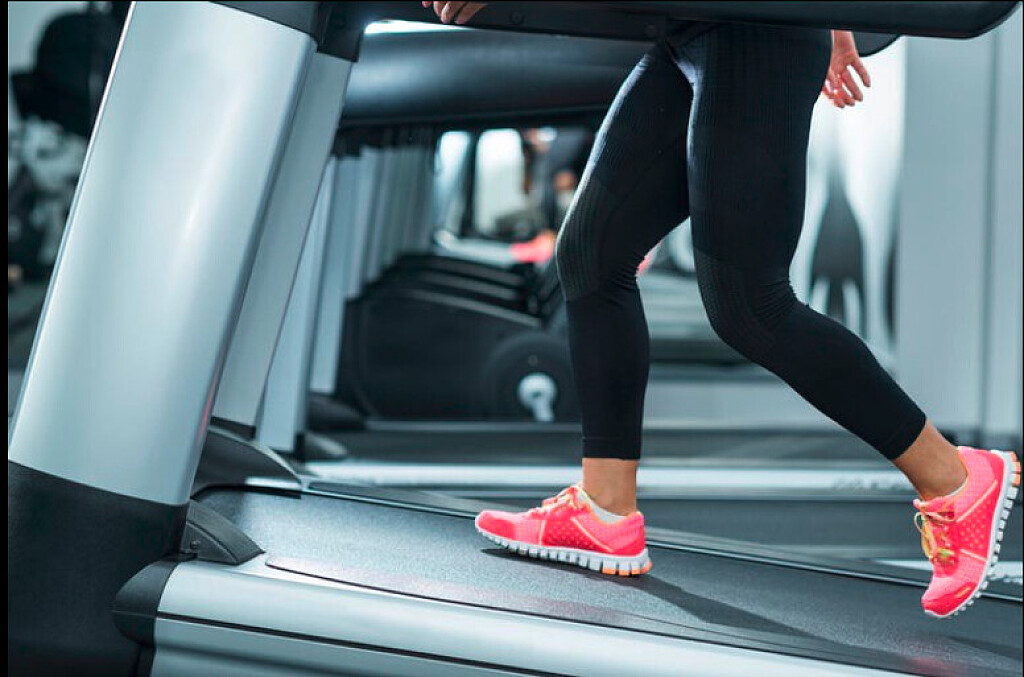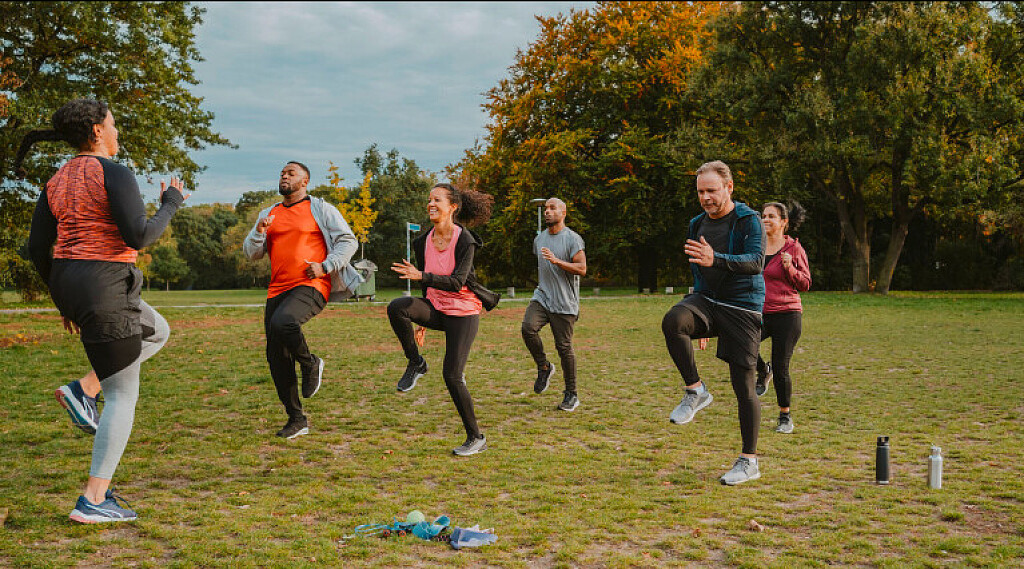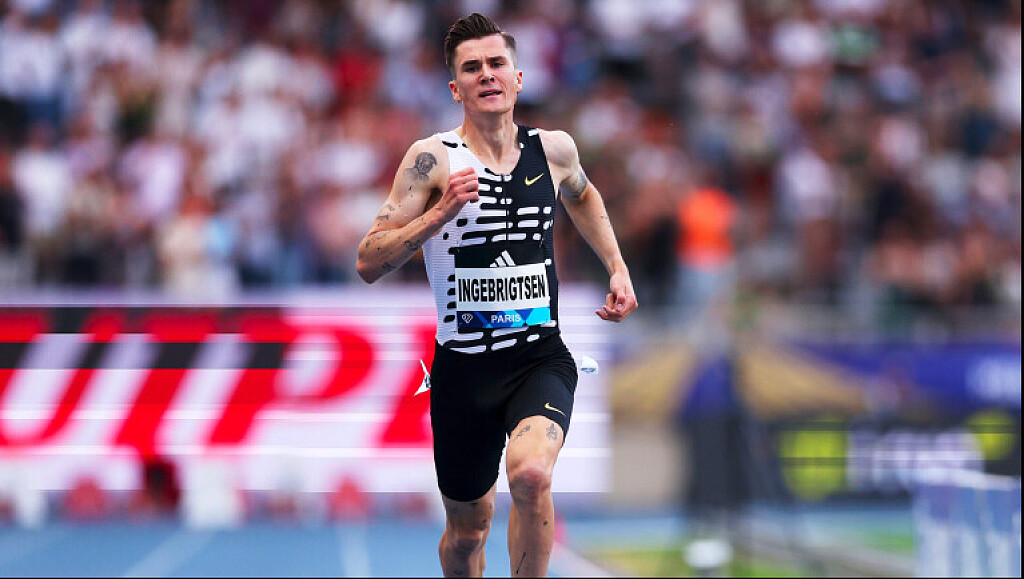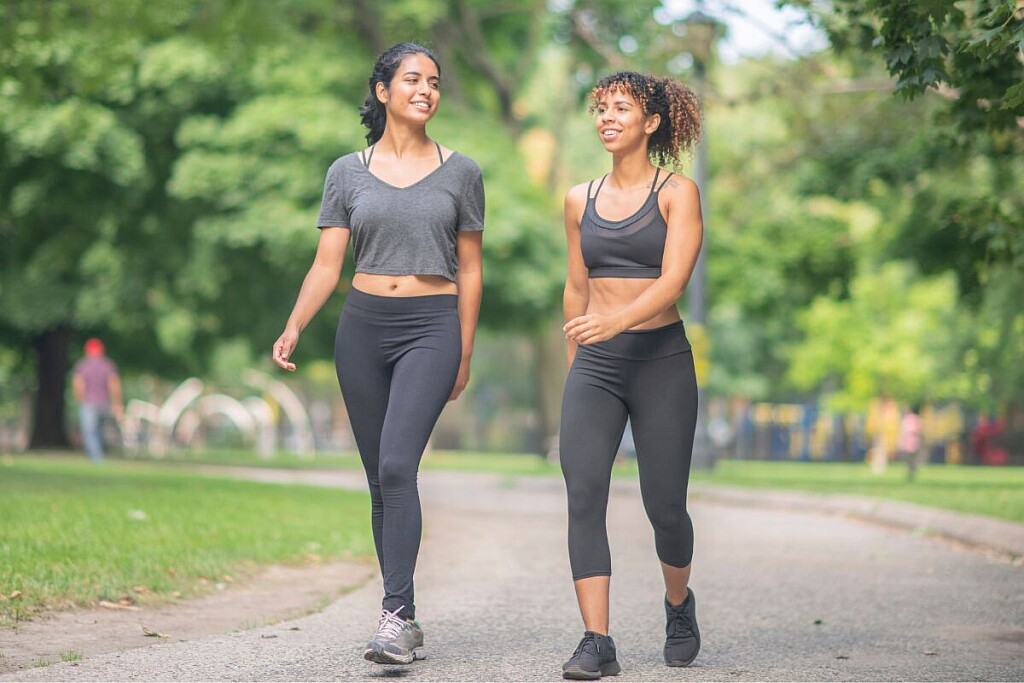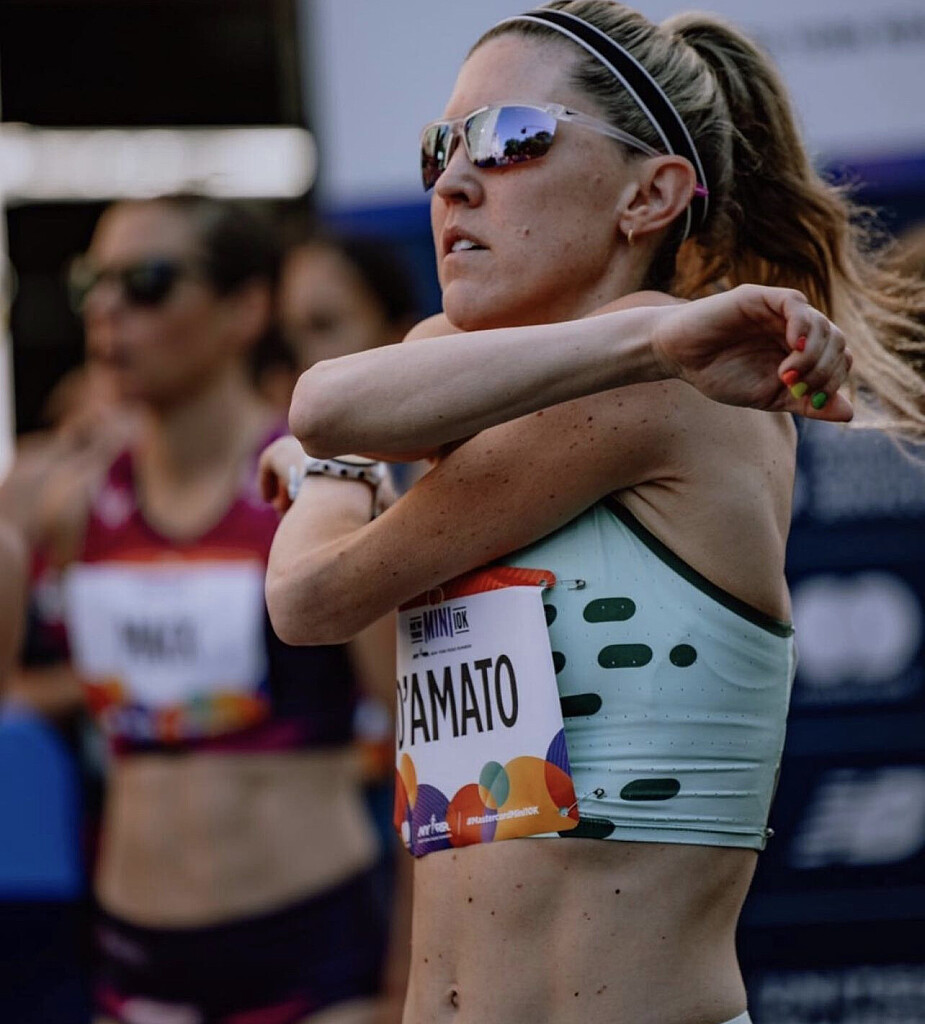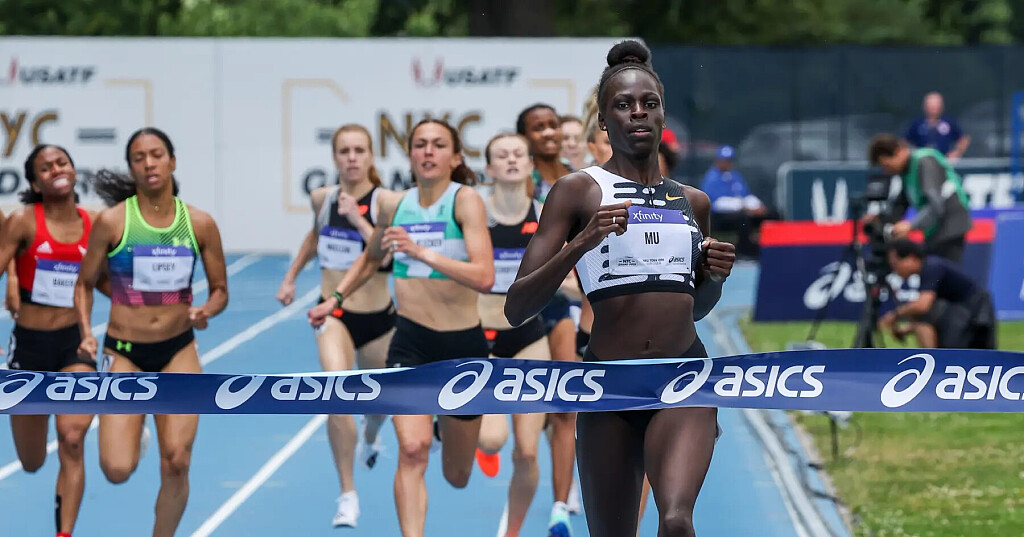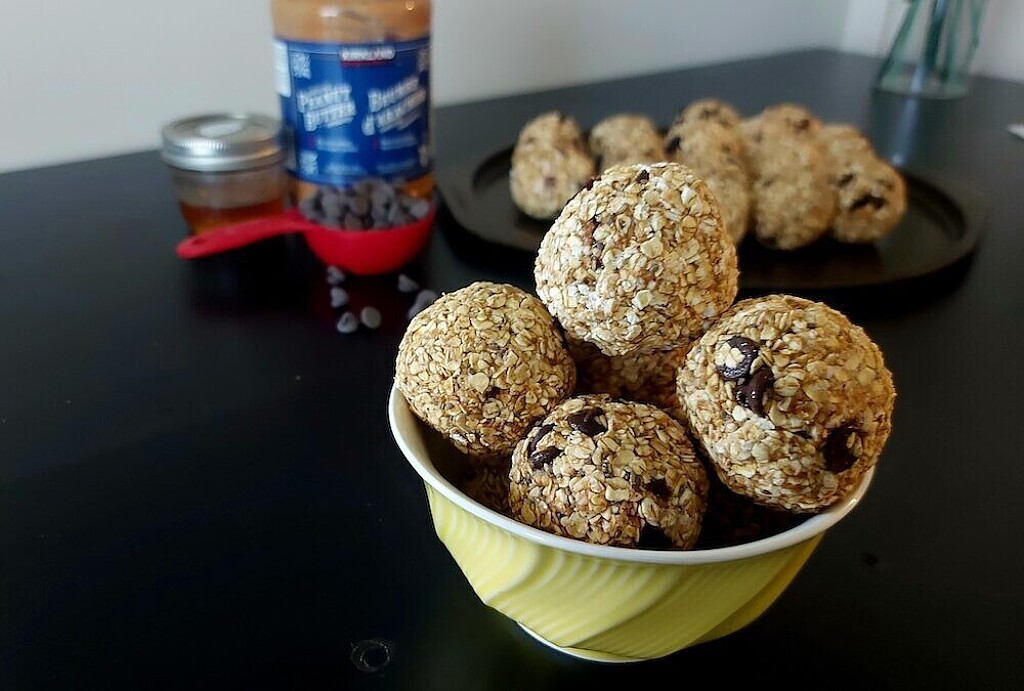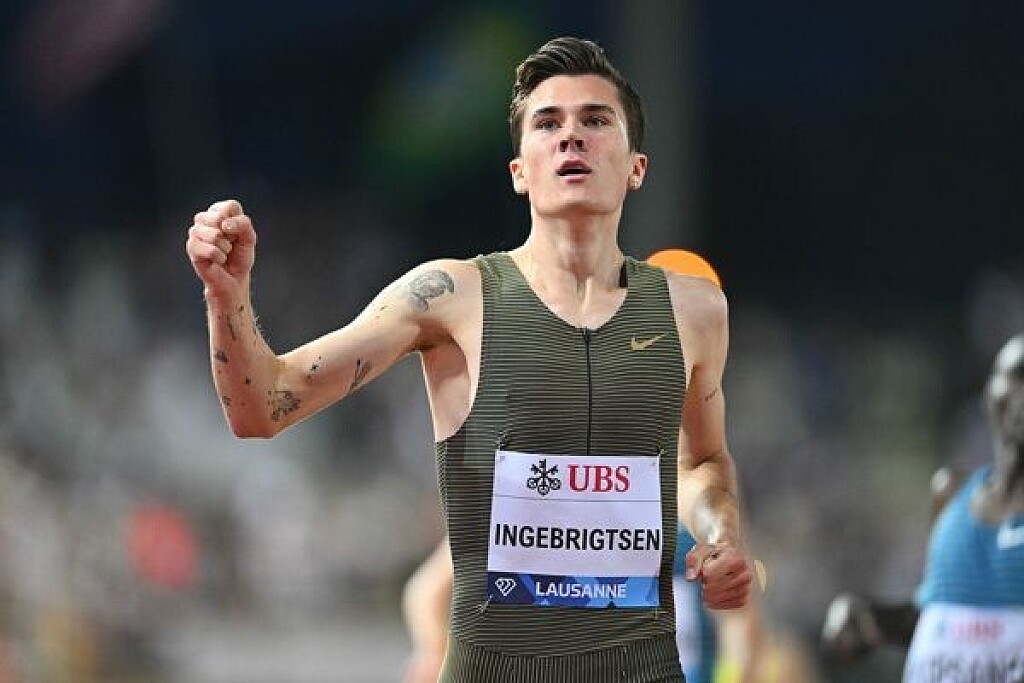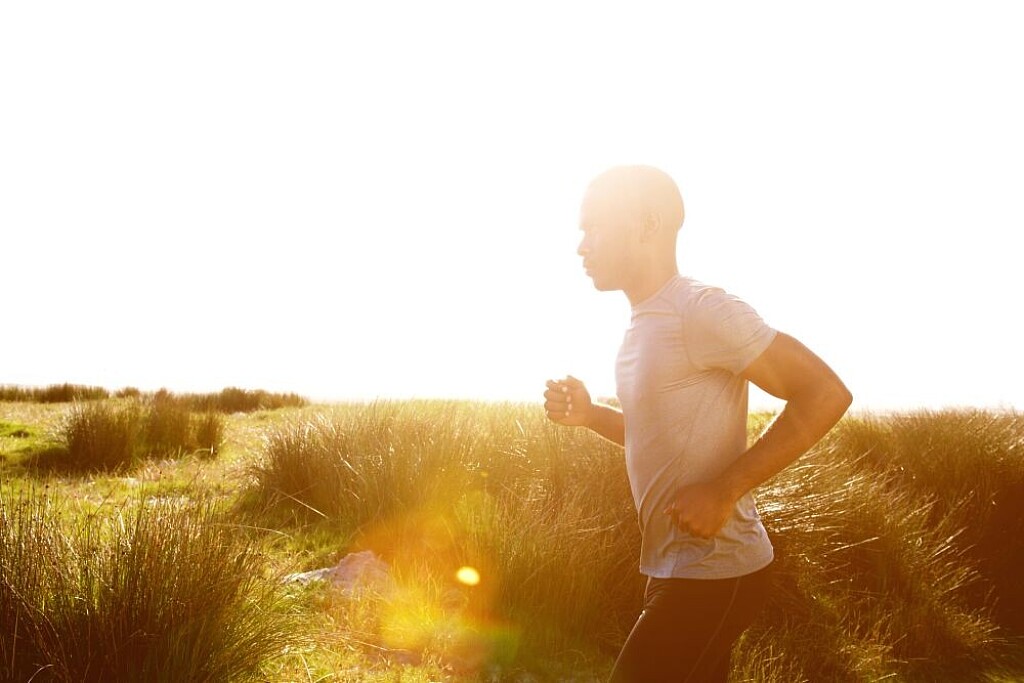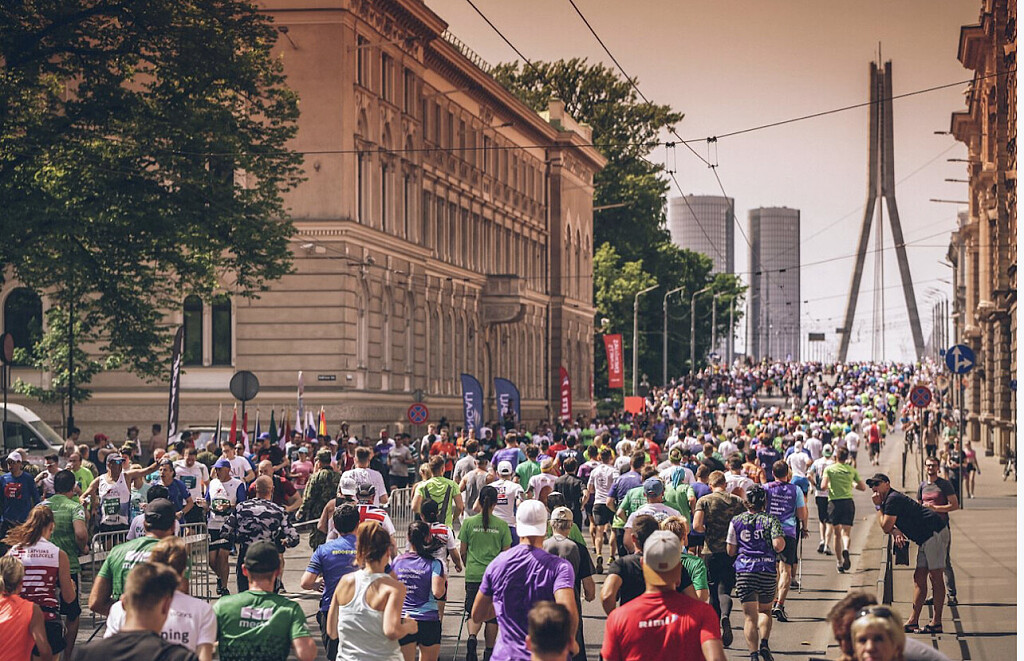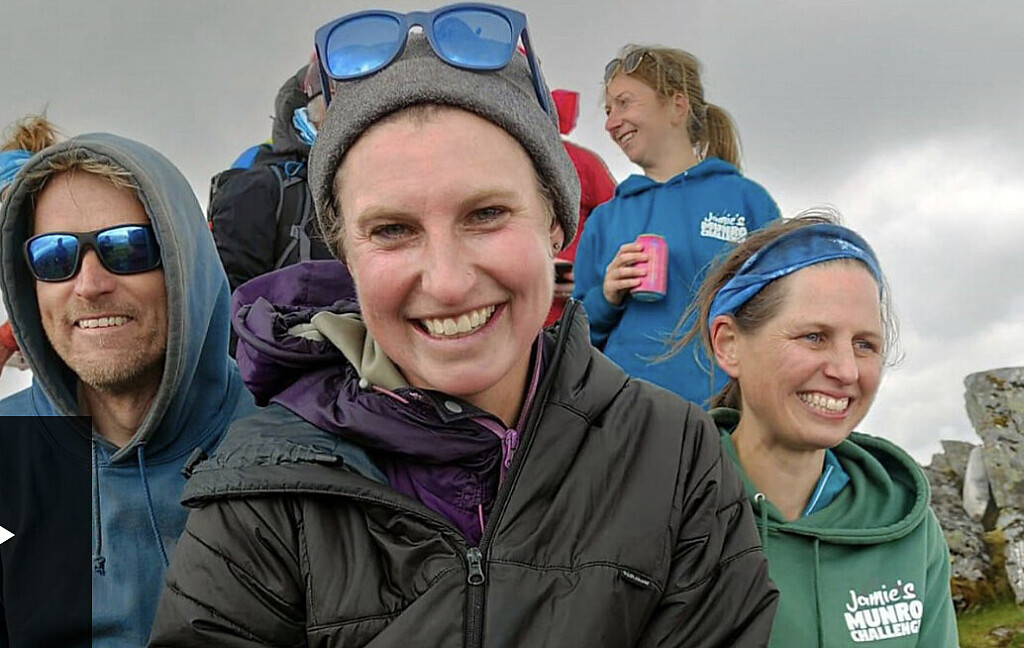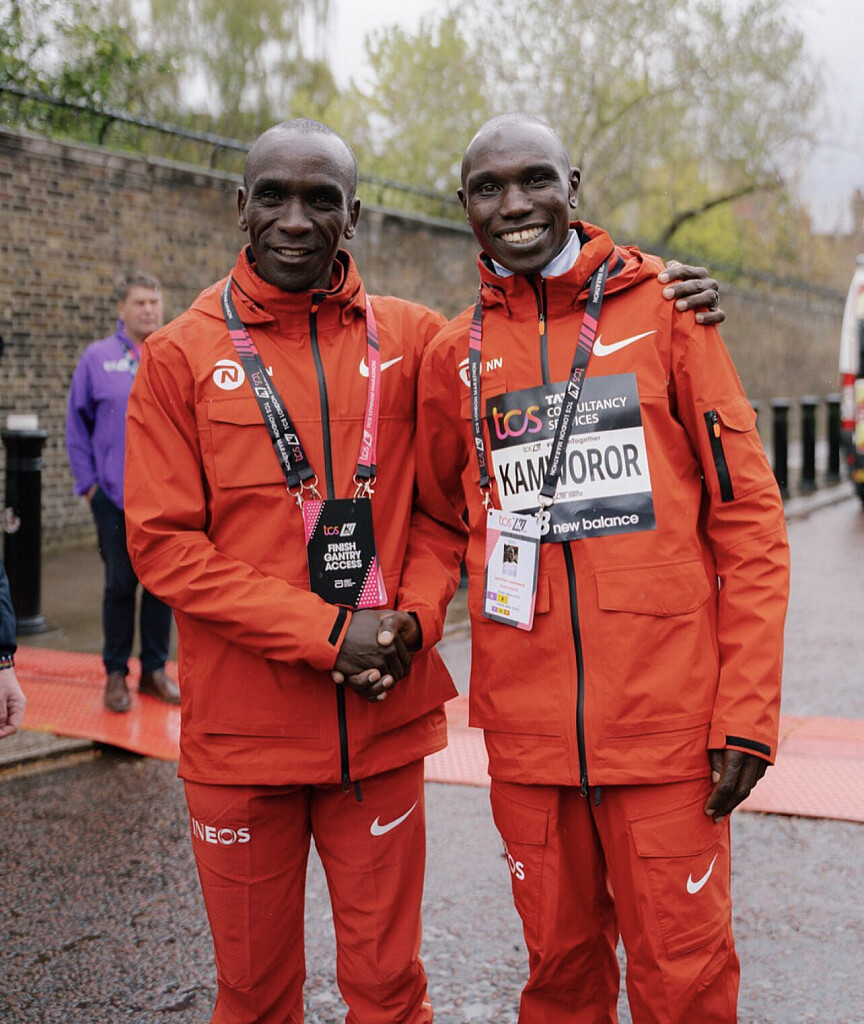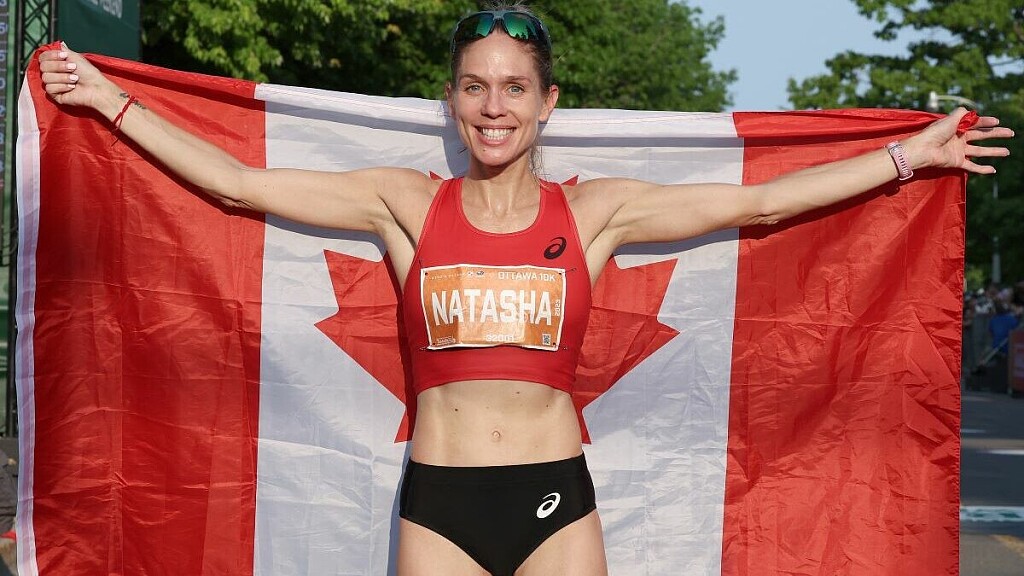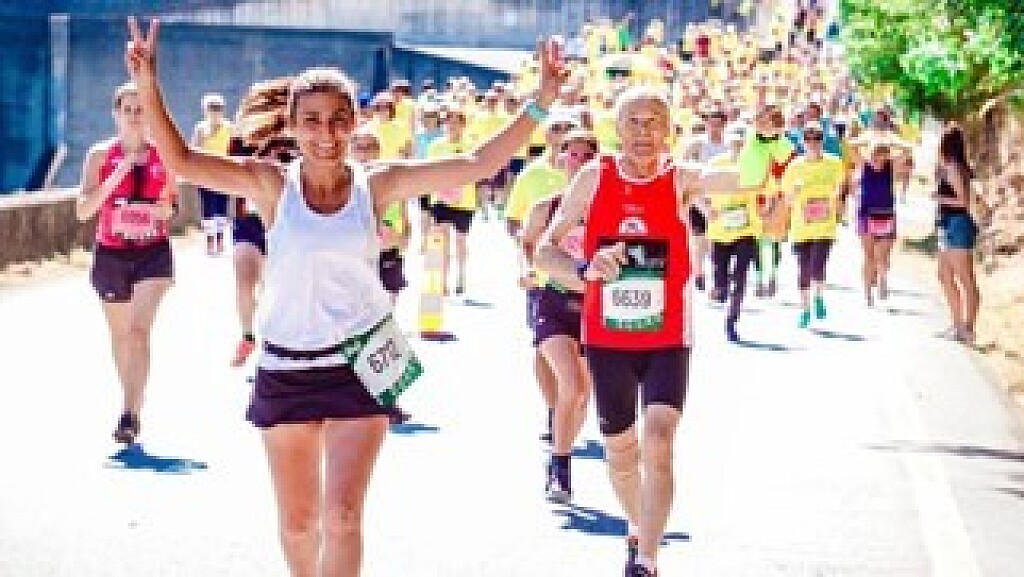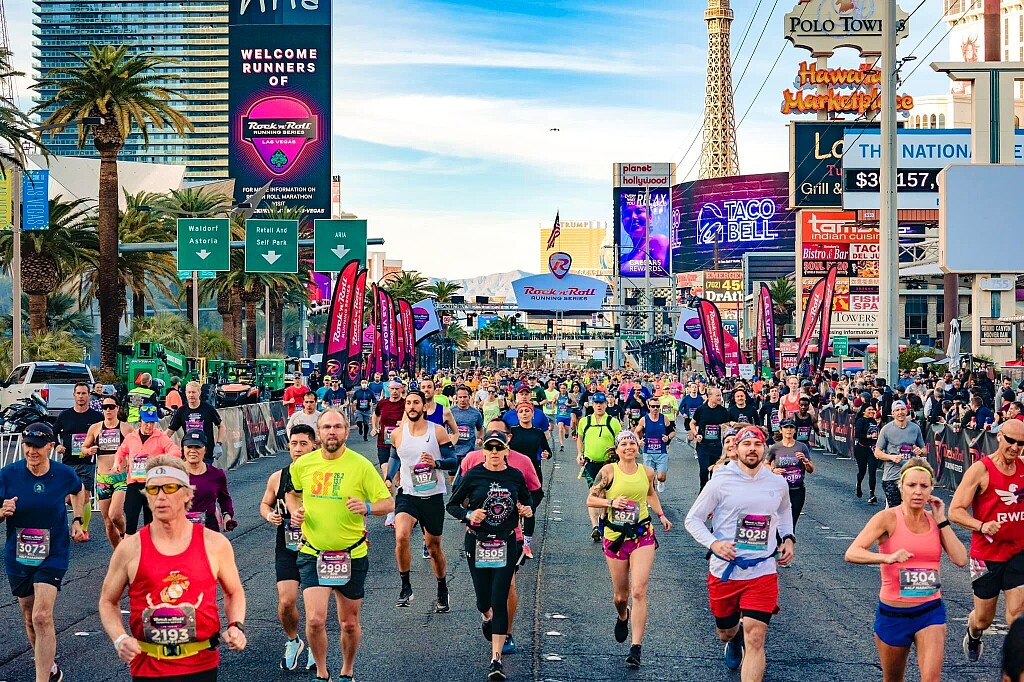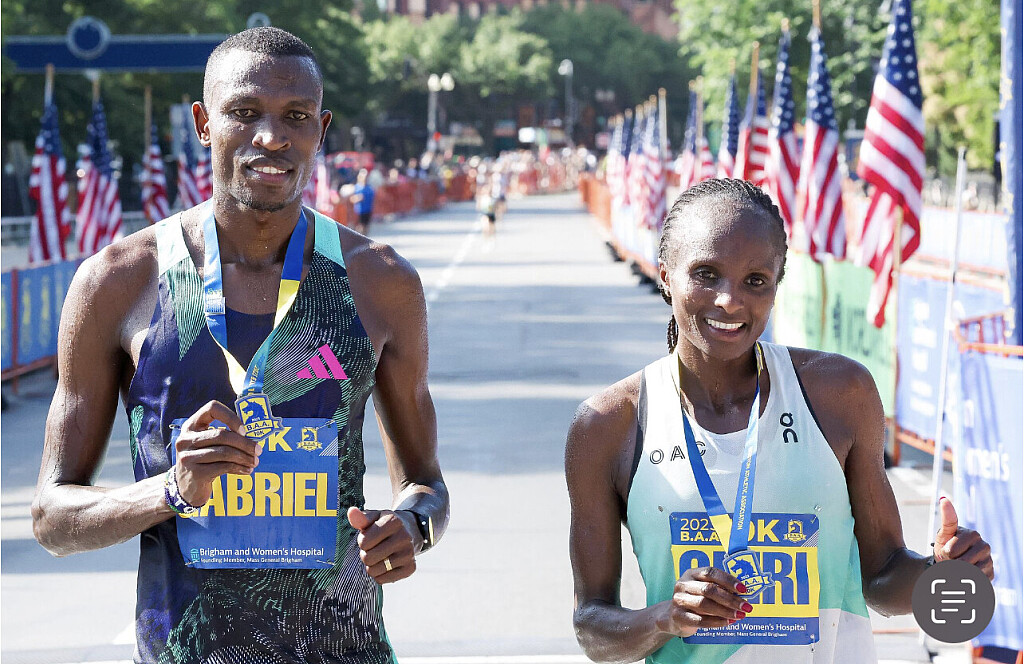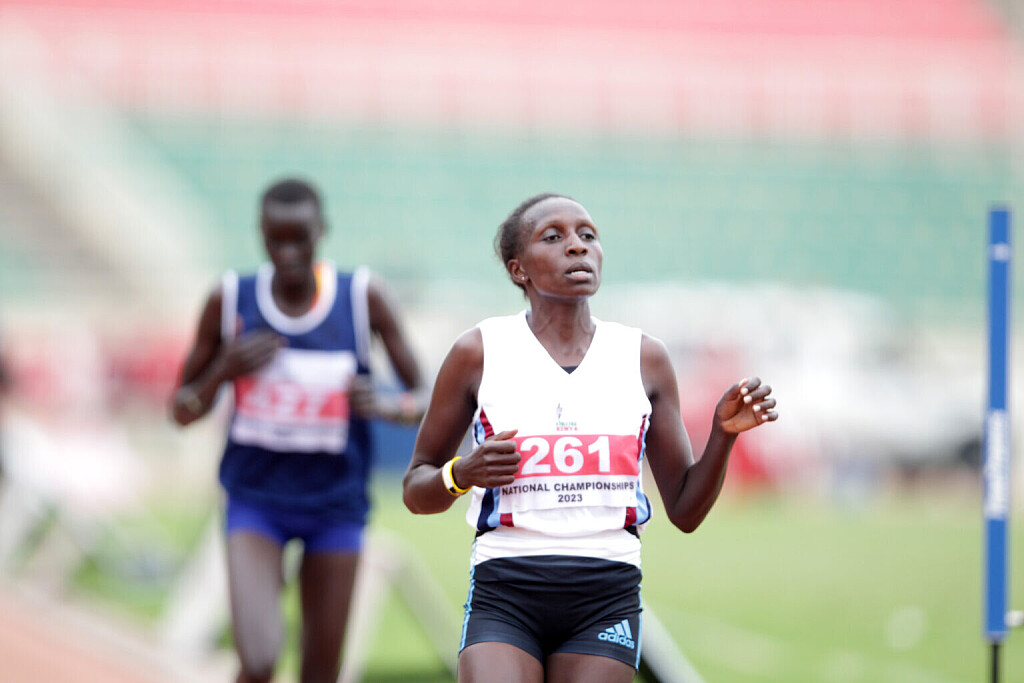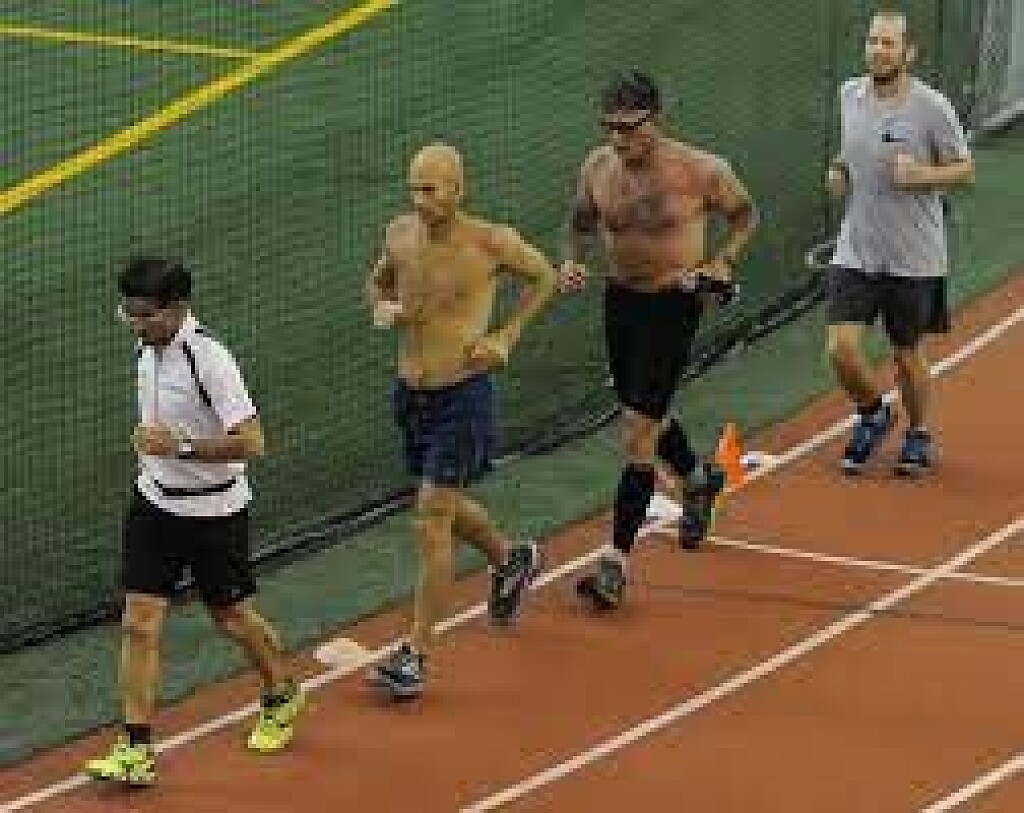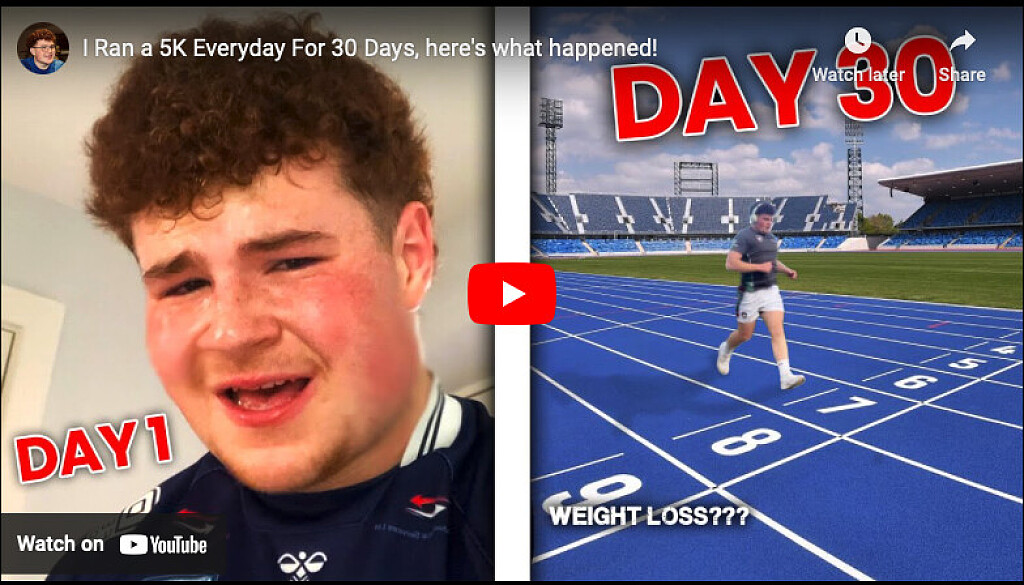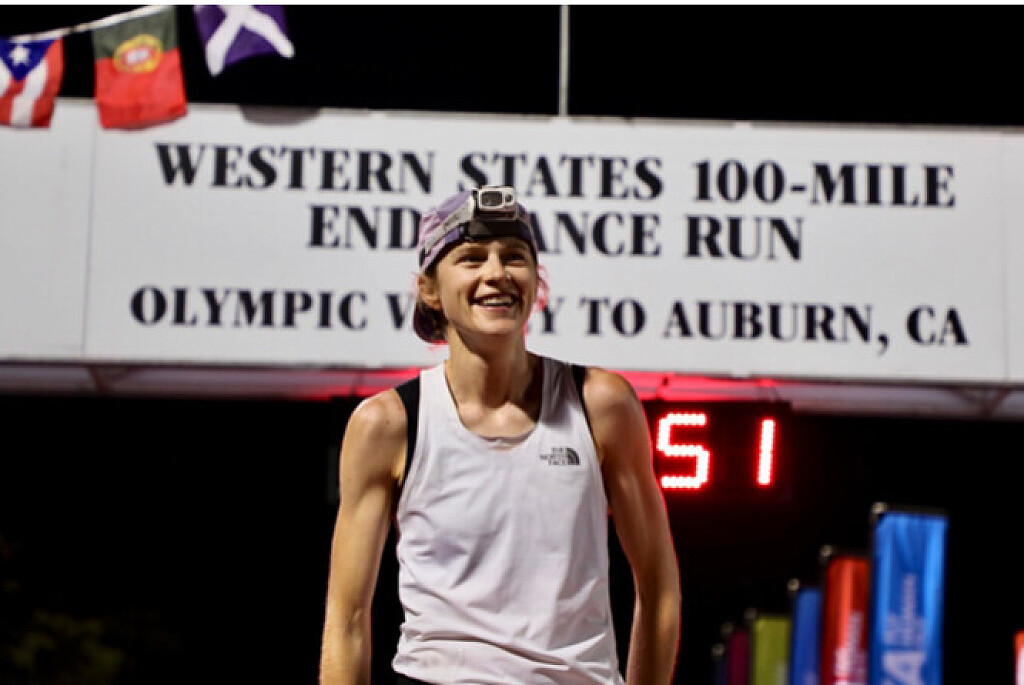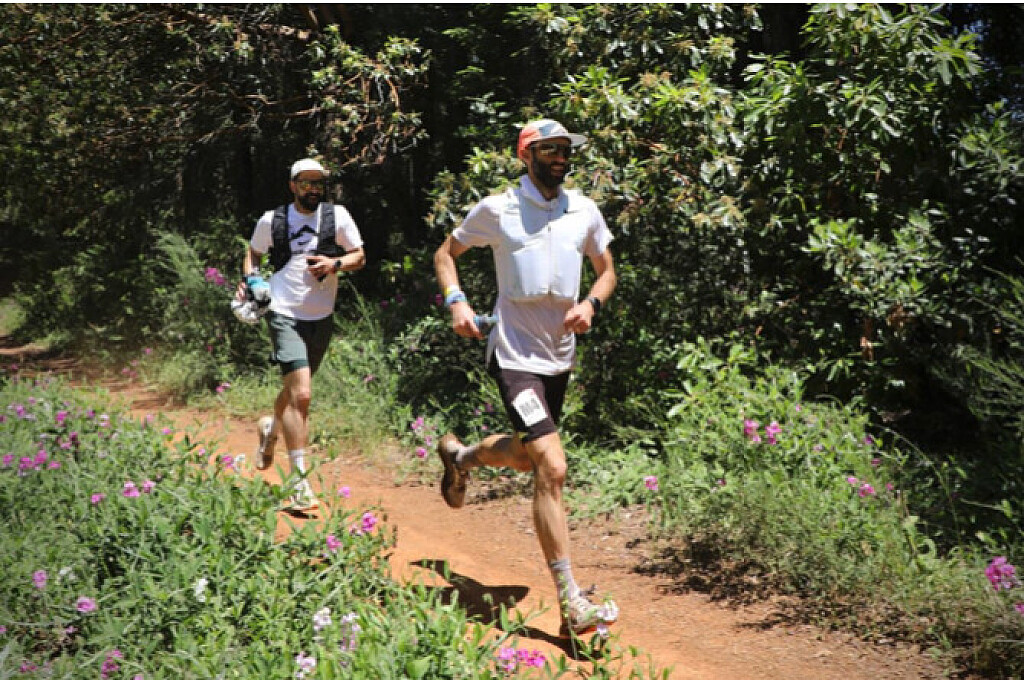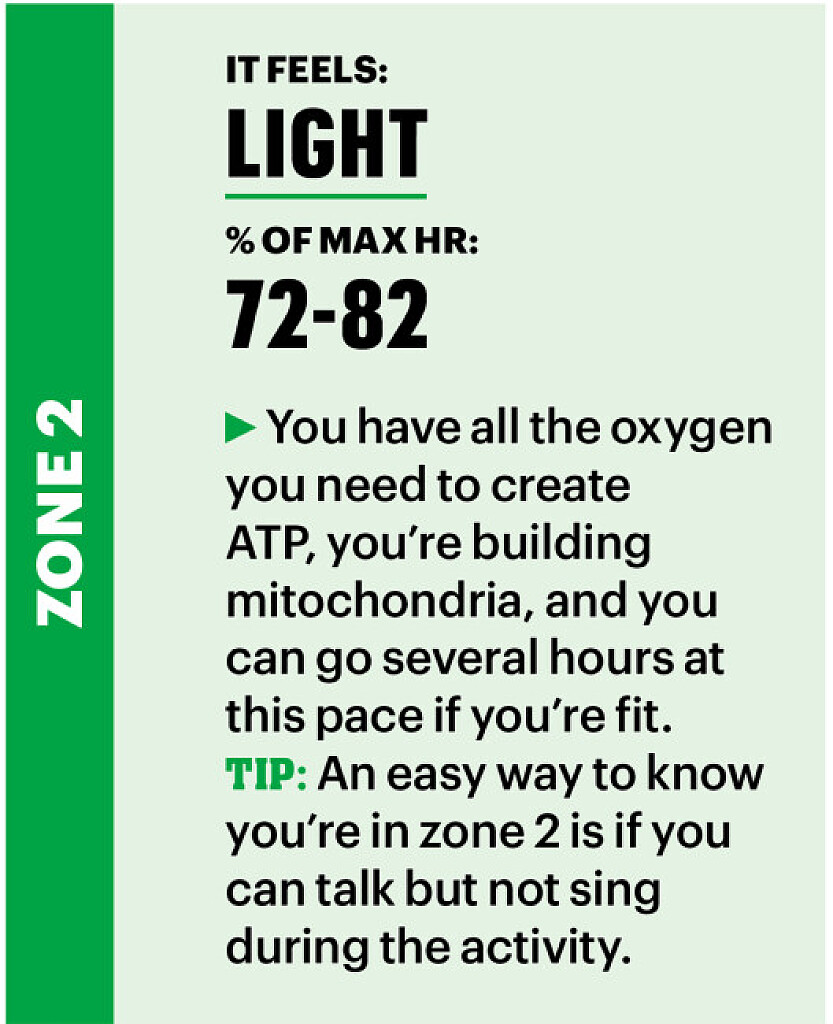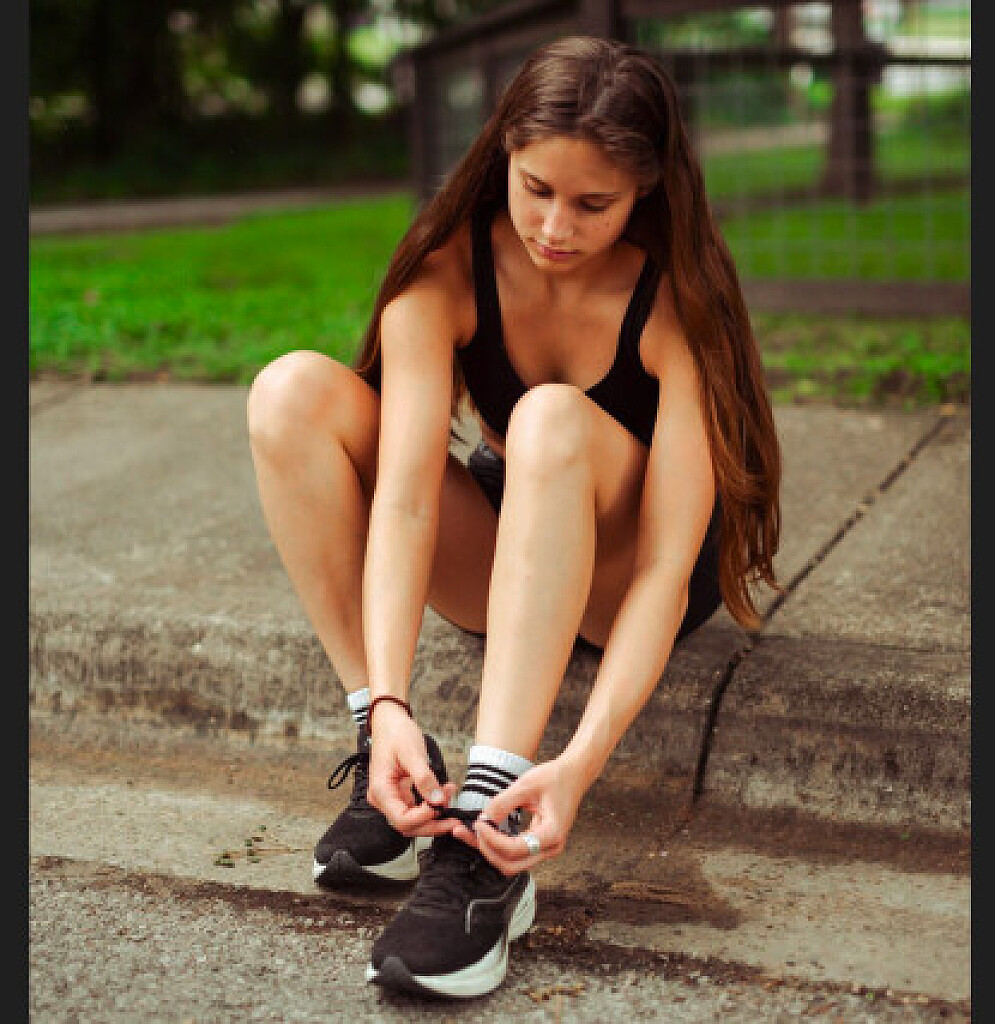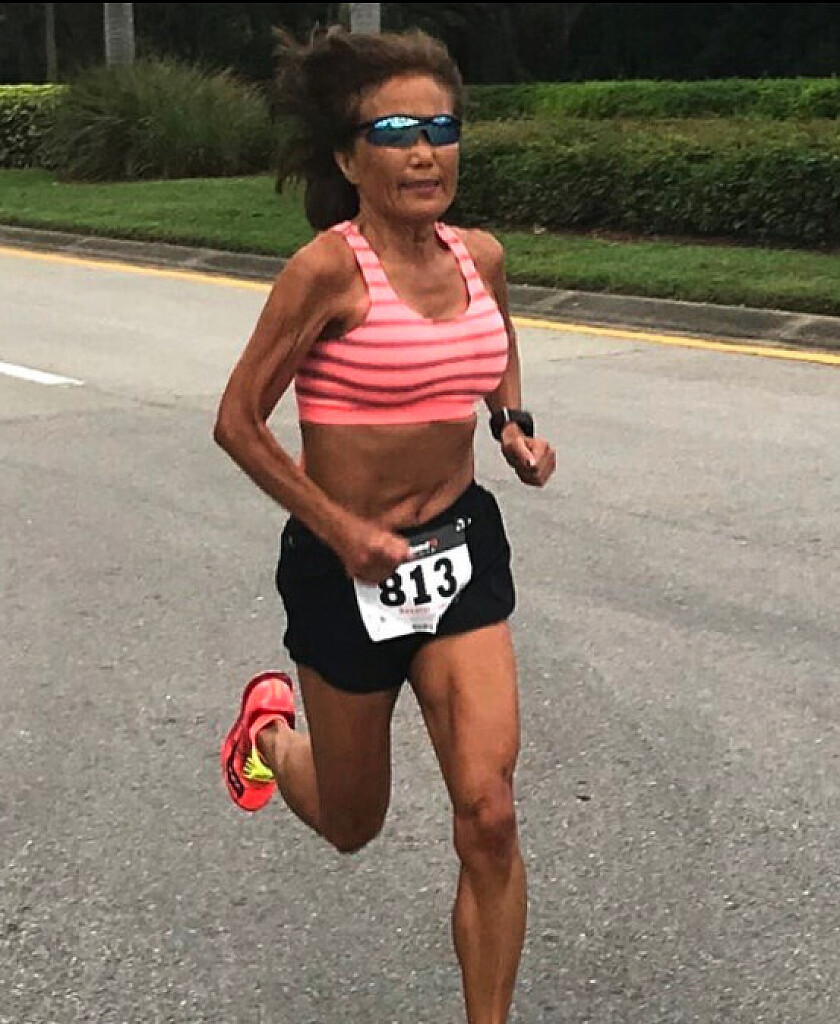Running News Daily
Running News Daily is edited by Bob Anderson in Mountain View, California USA and team in Thika Kenya, La Piedad Mexico, Bend Oregon, Chandler Arizona and Monforte da Beira Portugal. Send your news items to bob@mybestruns.com Advertising opportunities available. Over one million readers and growing. Train the Kenyan Way at KATA Running Retreat Kenya. (Kenyan Athletics Training Academy) in Thika Kenya. Opening in june 2024 KATA Running retreat Portugal. Learn more about Bob Anderson, MBR publisher and KATA director/owner, take a look at A Long Run the movie covering Bob's 50 race challenge.
Index to Daily Posts · Sign Up For Updates · Run The World Feed
Six-year-old competes 25K trail race in British Columbia
Jake Hishon and his six-year-old son, Emmett, needed a reason to escape the hustle and bustle of downtown Toronto and explore the outdoors. Jake booked a week-long adventure to British Columbia’s Okanagan region, where the two engaged in water sports, hiking and a 25K trail race.
While Jake was looking for things to do with his son at Silverstar, resort, he stumbled upon the Slay The Dragon 25K on ultrasignup.com. “I saw the race had a generous cut-off time, and the course didn’t seem too crazy,” says Jake. He told us that he has been wanting to get more into trail running, and has done many 5K races with his young son in the past. “25K seemed like a gentle distance for Emmett and me, and running has been a sport he has always liked,” says Jake.

Jake chatted with the race director before signing up, and explained their situation. “Our goal was to try it, and if we get tired, we’ll stop,” says Jake. “We were not trying to win–just to try it, see how we do, and take it from there.”
The 38-year-old entrepreneur and father of two fell in love with trail running because it provided a refreshing change to Toronto’s urban running environment. “There are so many different aspects to running in the trails that you don’t get to experience in the city,” Jake says. He believes his frequent trips out west with his wife and children provide an opportunity to immerse themselves in nature and find joy in being outdoors.
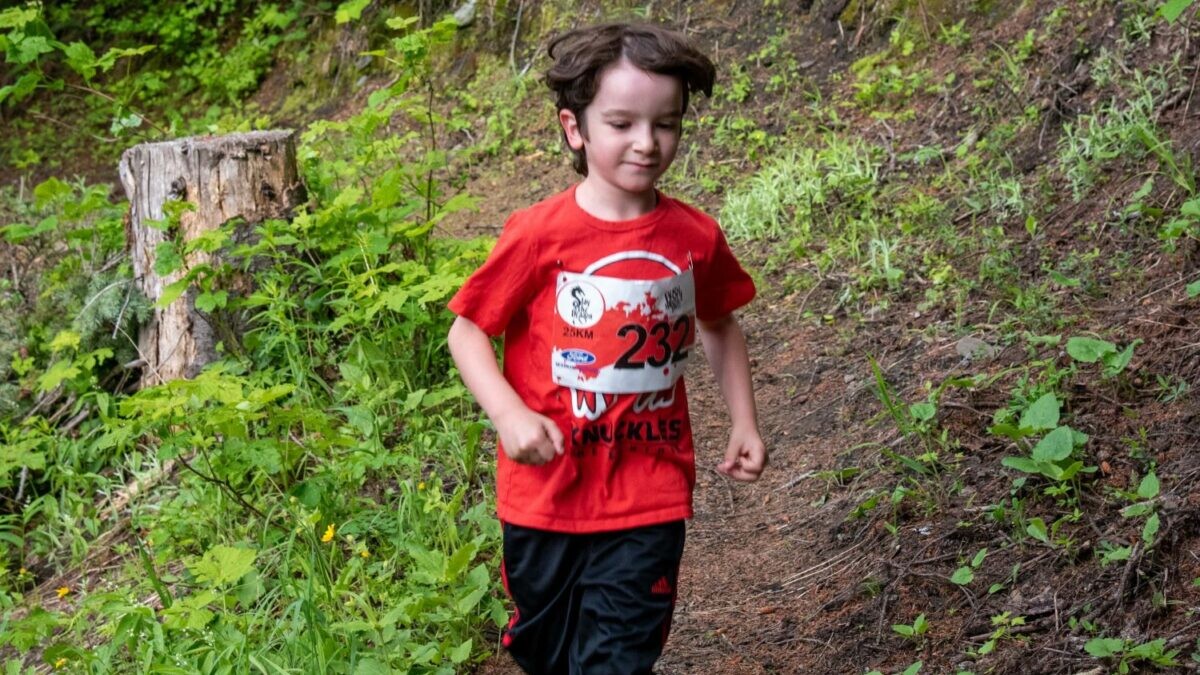
Heading into the 25K, Jake said Emmett was nervous, but they prepared for the race by hiking five kilometres the day before. Starting from the back of the pack, the duo maintained their pace throughout the race, embracing the occasional fall (no injuries reported) and aid stations filled with treats for Emmett. They completed the 25K trail race in six hours and 23 minutes, finishing last of all 84 participants.
Jake said the two took a lot of breaks, but stressed that he did not have to carry Emmett at any point. “I carried all the supplies. I was the pack mule,” says Jake. “Emmett never wanted to quit. He was excited to reach the aid stations, where they had snacks for him.”
Once the two returned to the village after covering 25 kilometres with 561 metres of elevation gain, Emmett was keen to receive his medal and show it off to everyone. When Emmett was asked what he had learned from the race, he said, “It was pretty fun.”
“I wanted it to be something he could look back on and be proud of,” says Jake. “Emmett would receive encouragement from total strangers, and it was a neat opportunity to see him receive gratitude.”
Jake was wary of the discouragement he might get from doing this activity with his son, but he found everyone at the race to be supportive. “We both looked at it as a fun way to spend a day outdoors,” says Jake.
The positive and encouraging environment inspired Jake and Emmett to plan future races. Emmett is eager to participate in the 6 km kids’ run at the Canadian Death Race in Grand Cache, Alta., this August, while Jake aims to tackle the 124K.
Reflecting on their adventure, Jake couldn’t help but recognize Emmett’s enthusiasm for the outdoors. “Even the next day, Emmett asked me if we could head out on another hike,” Jake laughs. “You give a kid an option to explore, and, odds are, they’ll take it.”
(07/05/2023) ⚡AMPby Marley Dickinson
92-year-old Bill Thorn crosses Peachtree Road Race finish line to end 53-year streak
Bill Thorn is the only runner to have participated in Atlanta's Independence Day race every year since it began in 1970.
92-year-old runner marked the end of an incredible 53-year streak at the Peachtree Road Race on Tuesday, as the only person to have run in Atlanta’s famed Independence Day 10K every year since it began in 1970 crossed the finish line one last time.
Bill Thorn, who served as grand marshal of this year’s race, officially ended the streak Tuesday when he ceremonially broke the tape in a short walk to the finish line as crowds cheered him on.
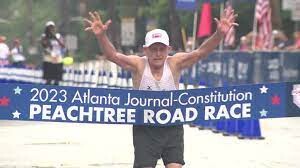
Although Thorn now uses a walker to get around, he took his final steps toward the finish line of Tuesday’s race unaided, raising his hands triumphantly as he broke the tape.
The former high school track coach told Atlanta’s 11Alive the decision to stop running the race was “hard” but that he was “definitely at peace” with putting the streak to bed. “To be honest, I’m kind of relieved,” he said.
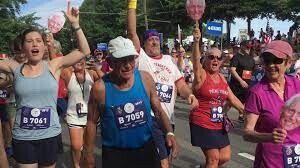
For Thorn, who was inducted into the Peachtree Road Race Hall of Fame in 1994, keeping the streak alive wasn’t always easy. One year, he ran the race with a sprained ankle. He also once finished the race during treatment for prostate cancer. But with his balance becoming more of an issue in recent years, Thorn said he agreed with his family that it was time to celebrate his record streak by officially bringing it to a close.
Thorn was one of 150 runners who ran the first Peachtree Road Race in 1970, and among the group of only 110 to finish that first race. He told 11Alive that the idea of a streak never occurred to him before it ballooned to the quarter-century mark. “I would just show up every year; no one said anything (about the streak) until the 25th year,” he said.
In 2019, to celebrate the 50th running of the race, Thorn crossed the finish line with four generations of his family and Julia Emmons, former executive of the Atlanta Track Club, which organizes the run. “It could’ve been just a fad,” Thorn said of his streak that year. “But as you go along through the years, people like Julia say to me every once in a while to ‘keep going’ and that was really encouraging, and so it just became a year-after-year thing.”
Since the pandemic, Thorn has completed the virtual edition of the Peachtree, running the distance around his neighbourhood.
Saying he still works out six days a week, Thorn told the Atlanta Track Club that “it’s been really exciting over the years, but there comes a time when you have to let go,” adding that “no one else will be able to say they did the first 50.”
(07/05/2023) ⚡AMPby Paul Baswick
AJC Peachtree Road Race
The AJC Peachtree Road Race, organized by the Atlanta Track Club, is the largest 10K in the world. In its 48th running, the AJC Peachtree Road Race has become a Fourth of July tradition for thousands of people throughout the metro Atlanta area and beyond. Come kick off your Fourth of July festivities with us! If you did not get...
more...World champion Jake Wightman out of defending his title in Budapest next month
After sustaining a freak injury to his foot in January during a gym session in South Africa, Jake Wightman’s recovery has not been straightforward and the 28-year-old says he has “run out of time” and is out for the summer.
This means he will be unable to defend his world 1500m title in Budapest in August just 12 months after claiming gold ahead of Jakob Ingebrigtsen at the World Championships in Eugene.
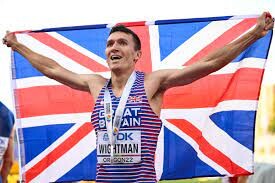
Wightman sustained the injury to the right foot when landing awkwardly doing plyometrics. He spent five weeks in a protective boot and missed the indoor season, but kept fit cross-training and then eased back into running in the spring.
But further injury-related complications have hindered his progress and he has been forced to withdraw from a number of races in recent weeks. He did not have to battle for World Championships qualification by running the UK Championships in Manchester this weekend because he already has a “wild card” entry to Budapest as a reigning champion.
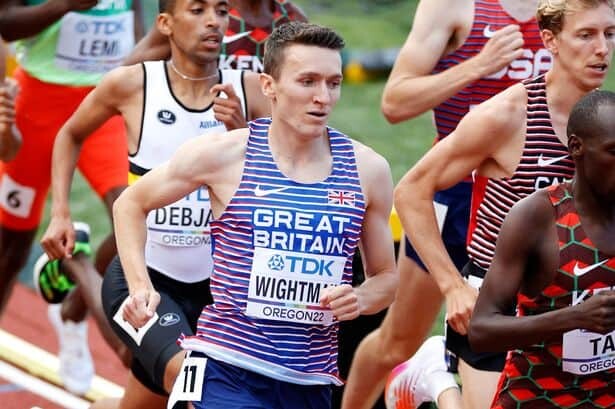
But nevertheless he feels time has run out for him to get fit for the biggest event of the year and he is now looking at a return to running in late August with his sights set on 2024 instead.
“As a result of my injury, I’ve had to deal with several more set backs as I prepared to race this Summer,” he said on Instagram.
“I’ve always felt as though time has been on my side to overcome my problems fully, however it has finally run out. This means I’m sadly going to be unable to compete at Worlds which has been really gutting to come to terms with.”
Wightman, who was also one of the biggest attractions due to compete at the Diamond League in London on July 23, has had to watch in frustration this season as ten men from eight different countries have run inside 3:30 for 1500m so far this summer, led by Ingebrigtsen’s European record of 3:27.95 at the Bislett Games.
He added: “Although I’m very disappointed not be able to try and defend my title, my focus has to be on getting my body rested and ready for 2024, to ensure I’ll be back performing at my best. The are some risks I could’ve taken to be on that Budapest start line, however the potential to jeopardise my Olympic year makes this the obvious decision.
“I’m currently taking some down time before starting my rehab, ready to be back running safely and pain free by the end of August. Big thanks to all my team and British Athletics who have worked really hard to try and give me every chance of competing. I’ll see you back on the start line soon.”
(07/05/2023) ⚡AMPby Jason Henderson
World Athletics Championships Budapest 23
From August 19-27, 2023, Budapest will host the world's third largest sporting event, the World Athletics Championships. It is the largest sporting event in the history of Hungary, attended by athletes from more than 200 countries, whose news will reach more than one billion people. Athletics is the foundation of all sports. It represents strength, speed, dexterity and endurance, the...
more...Should runners take a collagen supplement?
Collagen supplements have gained significant popularity in recent years for their potential benefits, which range from stronger skin, hair and nails to improved joint health and even relief from arthritis. Runners who are looking to prevent injuries or gain a performance edge might be considering adding collagen to their current supplement routine, but is it necessary? We spoke with registered dietitian Megan Kuikman (who writes the “Fuel Station” column in Canadian Running magazine) to find out.
What is collagen?
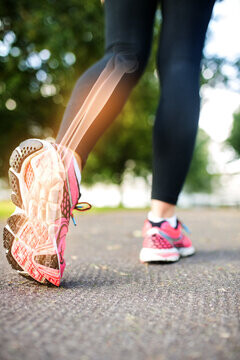
Collagen is the most abundant protein in our bodies and plays a role in maintaining the health and integrity of various tissues, including tendons, ligaments, cartilage and skin. You can consume collagen through animal foods in the diet, or through foods that contain added collagen, like Jell-O or candies.
What are the potential benefits of collagen supplements?

Kuikman says that research in this area is still new, so it’s difficult to say definitively whether collagen supplements are beneficial. Still, she says supplements may increase collagen production, which can thicken your cartilage and decrease joint pain associated with osteoarthritis. It is possible this could be beneficial for runners, whose daily mileage places a lot of repetitive stress on their knees and other joints, but more research is needed to fully understand the effects of collagen on joint health, especially in athletes.
“It may be beneficial for an injured runner who’s recovering from a tendon or ligament injury or for a runner who is prone to these sorts of injuries,” says Kuikman, “however, as per above, research in this area is still needed.”
It’s also important to note that collagen is a complex protein, and oral supplementation may not guarantee that it will reach the specific target tissues in significant quantities. The body’s natural collagen production is regulated by various factors, including diet, exercise and genetics, so if you’re trying to target a specific area (for example, an injured knee), supplementing with collagen may not necessarily lead to increased collagen synthesis in that specific tissue.
It’s worth mentioning that a well-rounded diet that includes protein-rich foods will provide the necessary amino acids for collagen synthesis in the body. Consuming a variety of protein sources, such as lean meats, fish, poultry, dairy, legumes, and plant-based proteins, can support overall tissue health, including the production of collagen.
Are collagen supplements safe?
“Collagen is a low-risk supplement, but there is not much data available to support its use in athletes,” says Kuikman. “Like all supplements, you can definitely take too much, and there is the risk that supplements may be contaminated with banned substances. This is a concern, as it could potentially lead to a \ if it were to contain a banned substance.”
How to choose the right supplement
If you are interested in adding a collagen supplement to your diet, you may want to consider consulting first with a dietitian or sports medicine provider, who can evaluate your individual needs, assess any potential deficiencies and provide personalized recommendations based on your goals and health status.
Collagen supplements are usually taken in the form of hydrolyzed collagen or gelatin (collagen extracted from animals), which means they are not suitable for vegan athletes. There are some vegan products available that claim to mimic animal-sourced collagen, but more work is needed to determine their effectiveness.
Kuikman adds that since vitamin C is important for collagen synthesis, the diet needs to be sufficient in vitamin C to get the most out of your supplement. You can also find some supplements that include vitamin C along with collagen.
The bottom line
Collagen supplements may be beneficial for runners who tend to suffer from joint pain and injuries, but we still don’t have very much research to support this. It is a relatively safe supplement, so if you do choose to add it to your daily regime, consider speaking with a dietitian or sports medicine practitioner who can help you make an informed choice.
No supplement can replace a well-balanced, healthy diet, so before you add any vitamins or supplements to your daily routine, make sure you’re doing your best to get all of your essential vitamins and minerals through natural food sources first.
(07/05/2023) ⚡AMPby Brittany Hambleton
Keira D’Amato tells us more about her new Half Marathon American record
(On July 1 Keira D'Amato clocked 1:06:37 at the Gold Coast Half Marathon setting a new American record. This is her story as it unfolded posted on FB)
I don’t know why this post has been so tough for me to write. There was so much emotion in my reaction to crossing the finish line and I think it boils down to one thing: hope.

Earlier this year, I was injured, I had to scrap my spring racing plans, but I was in the pool everyday hoping it would heal so I could get back to my goals.
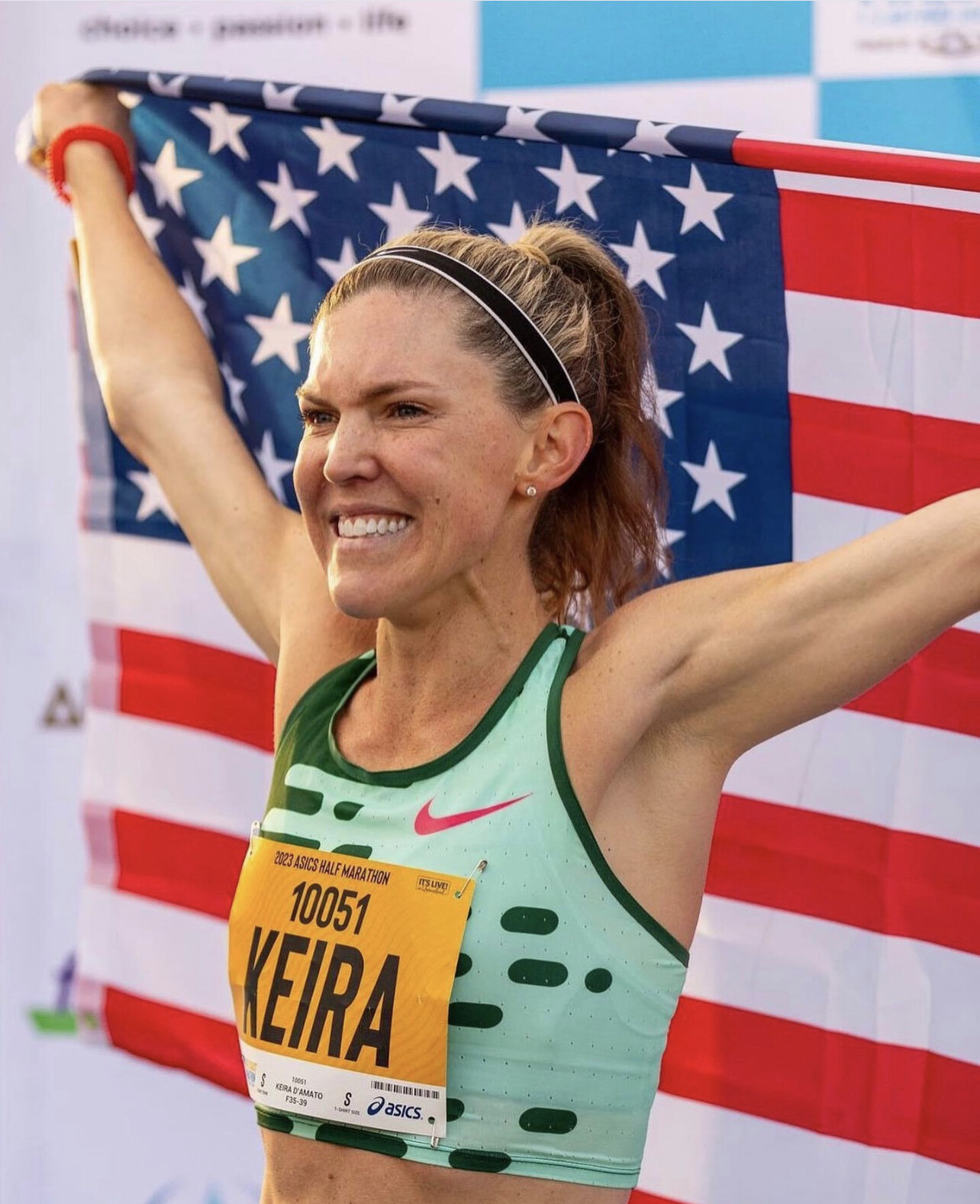
Once I was healthy, the year started off slow. It always does when you are starting something. It takes a few months for me to really start feeling like my buzzsaw self. I had hope that if I stayed patient, I could build back to an even higher level.
My flights got cancelled, and delayed, and cancelled again. But I hoped if I pushed through the travel, I would make it to the starting line.
My daughter wasn’t exactly thrilled I was going to away for a week. That stings the heart. But I hoped, I could show her what it is to chase a dream and why the family has worked to hard to support my running.
I hoped for good enough weather, I hoped my legs would feel good enough despite the travel, and I hope I could find sometime new within myself, that I wasn’t even certain was there.
Then, with about 100 or meters to go, I saw the clock and all that hoping was actually coming true. We all know it doesn’t always workout like that. In fact, most of the time, it feels like it doesn’t. But on Saturday, July 1 in Australia at the @gcmarathon half marathon it did for me.
So that’s why I look crazy crossing the finish line.
I hope everyone has an excuse to make a crazy face like this too. Here’s to hoping. ❤️
Photos by: @caseysims_ and @beyondtheroad
(07/04/2023) ⚡AMPby Keira D’Amato
ASICS Half Marathon
Run before the sun in the ASICS Half Marathon (21.095km) at 6am on Saturday 1 July. Enjoy the good times on our world-standard course while soaking up the beautiful broadwater on your return journey from Southport to Paradise Point. Enjoy scenic sunrise views over the water as you run through Labrador to Runaway Bay before being championed to the finish...
more...Ethiopian runner misses Peachtree Road Race victory due to last-minute detour
In an unexpected turn of events during the AJC Peachtree Road Race 10K on Independence Day, Ethiopia’s Senbere Teferi, the reigning champion, was poised to claim victory and the USD $10,000 prize. However, a wrong turn in the final 200m foiled her plans, resulting in a third-place finish and causing her to miss out on a large sum of money.
Teferi was closely following a leading police motorcycle as it suddenly veered off the course with 200m to go. Without hesitation, Teferi followed suit, mistakenly believing that the race course took an unconventional right turn.
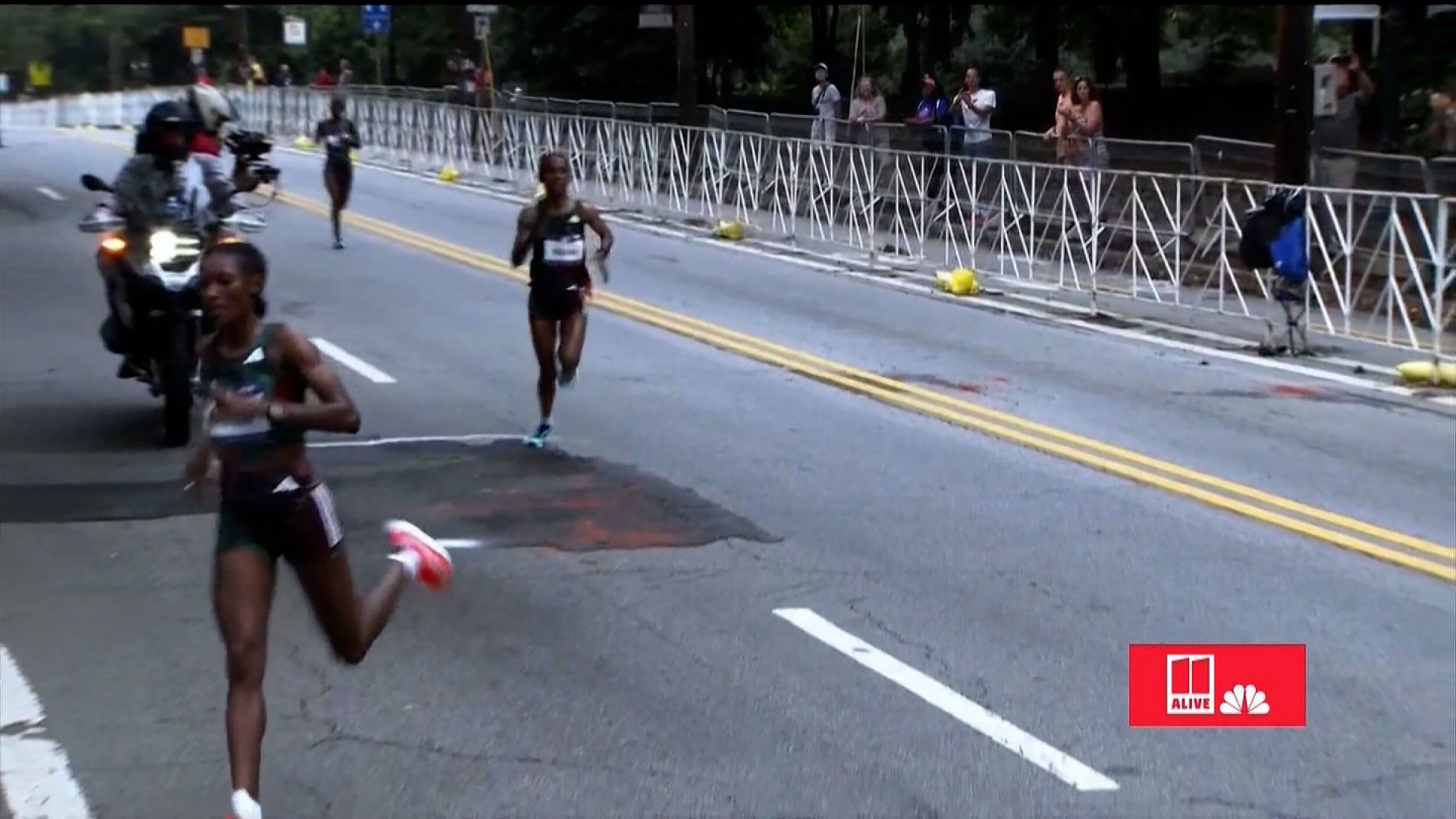
Despite having a nearly 10-second lead over her compatriot, Fotyen Tesfay, Teferi’s confusion led to her sprinting back to the course and finishing third, with a time of 30:47. She was only two seconds short of second place, which went to Kenya’s Jesca Chelangat in 30:45. Tesfay seized the opportunity and claimed victory, finishing four seconds ahead of Teferi in 30:43.
Tesfay also briefly followed Teferi’s detour before swiftly correcting herself and surging ahead to win the 10K title and the USD $10,000 prize.
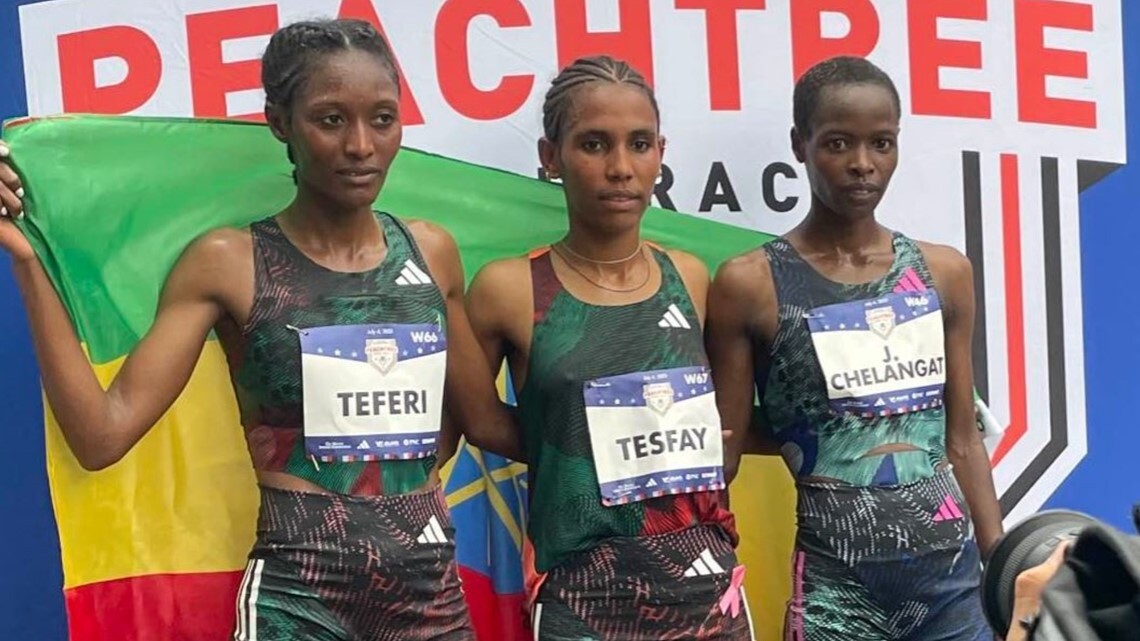
While it’s not uncommon for runners to take wrong turns near the finish line, it is surprising that it happened to someone who won the race just last year. This a reminder that even professional runners make mistakes.
The AJC Peachtree Road Race is held annually in Atlanta on Independence Day. It is currently recognized as the world’s largest 10K race, with over 60,000 participants. Canada’s own Rory Linkletter finished 17th overall in this year’s race, posting a time of 29:12.
(07/04/2023) ⚡AMPby Marley Dickinson
AJC Peachtree Road Race
The AJC Peachtree Road Race, organized by the Atlanta Track Club, is the largest 10K in the world. In its 48th running, the AJC Peachtree Road Race has become a Fourth of July tradition for thousands of people throughout the metro Atlanta area and beyond. Come kick off your Fourth of July festivities with us! If you did not get...
more...Get lightning-bolt legs: try a fartlek session to spice things up
Adding a fartlek workout to your regular training is a fabulous way to switch up your routine and give your legs a speedy boost. Fartlek (a Swedish word meaning speed play) involves injecting your workout with varied paces that can range from a sprint to an easy jog. Because these sessions are based on effort, rather than specific paces, they work for roads or trails. You can make these workouts more challenging by cutting back on recovery time between faster sections, or by adding repeats.
Goal-based fartlek
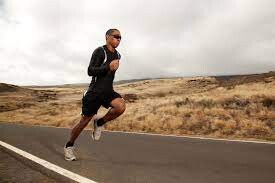
Using landmarks to split up your speedy segments will make your workout go by quickly. Focusing on your surroundings can add a boost of mindfulness to your training, upping your mental game.
Warmup: 10–15 minutes easy running.
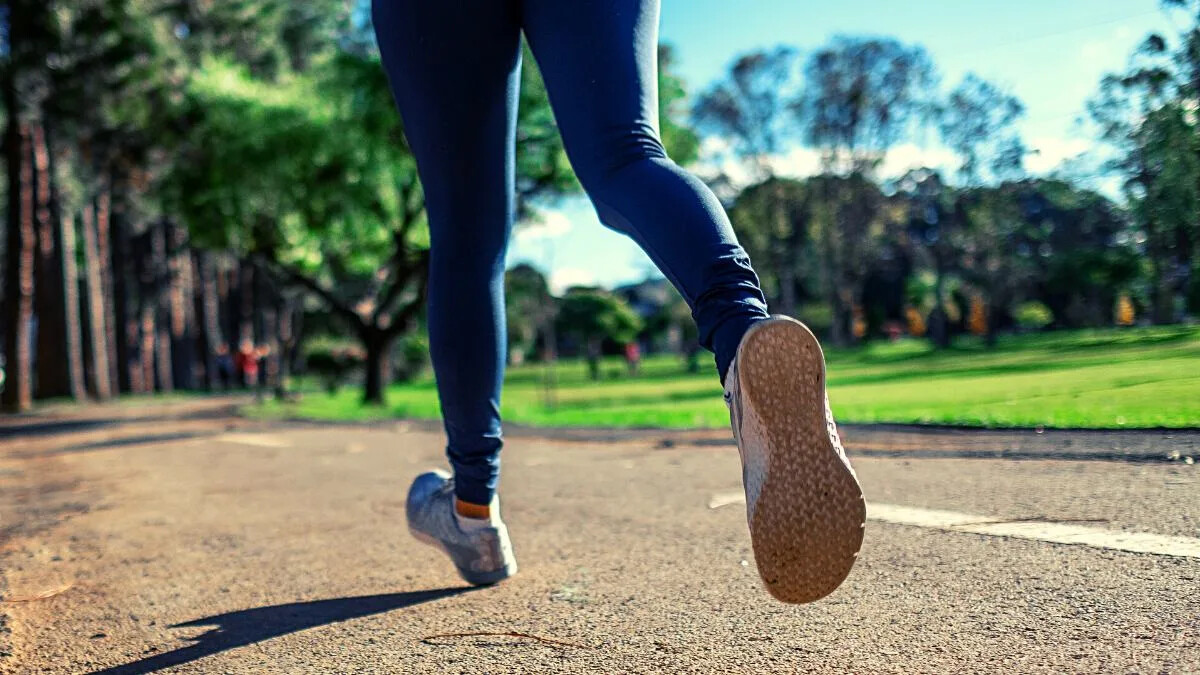
Workout: Pick an object in the distance: a telephone pole, tree or building works. Run toward it with an increased effort until you reach that landmark, then pick another object ahead to run easily toward to recover. Start with three to five fartlek segments, adding one or two per week or as you want more challenge.
Cool down: 10 minutes easy running.
Time-based fartlek
For this workout, you’ll use your watch to keep track of time, but will keep your attention on your effort rather than your pace.
Warmup: 10–15 minutes’ easy running.
Workout: Run faster segments of one, two or three minutes with equal amounts of easy running to recover. Begin with three to five faster sections and add one or two per session as you feel stronger.
Cooldown: 10 minutes’ easy running.
Remember to follow a more challenging workout with an easy recovery or rest day, and hydrate often during the warm summer months.
(07/04/2023) ⚡AMPby Keeley Milne
Chepngetich, Hassan and Sisson to clash at Chicago Marathon
Ruth Chepngetich returns to defend her title at the Bank of America Chicago Marathon, a World Athletics Platinum Label road race, and will face a field that features London Marathon winner Sifan Hassan and US record-holder Emily Sisson.
Chepngetich won last year’s race in 2:14:18 – just 14 seconds shy of the world record and the second-fastest women’s marathon performance of all time.
Kenya’s 2019 world champion will be back in Chicago on the hunt for her third consecutive victory on October 8, following her inaugural win in the US city in 2021, when she ran 2:22:31.
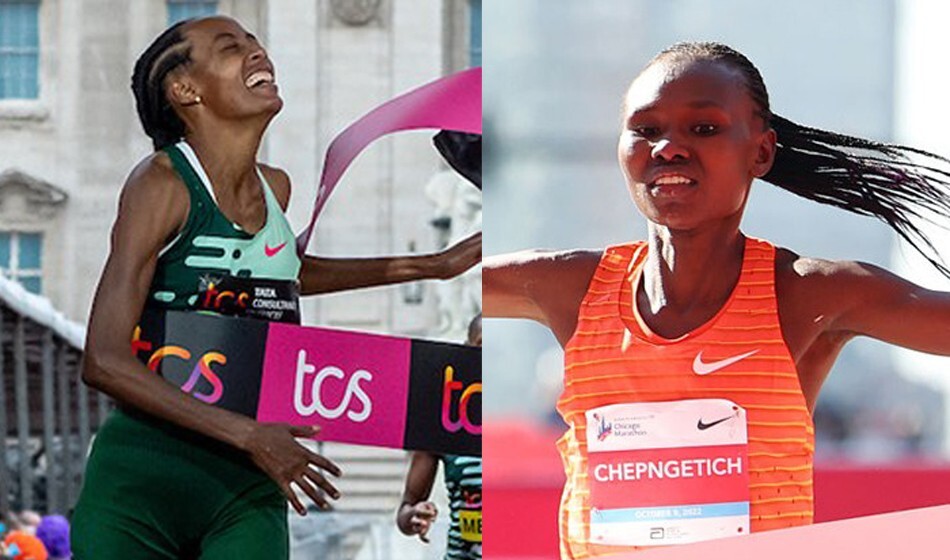
“I am planning to defend my title and improve my time,” said Chepngetich. “There's no better race in the world than the Bank of America Chicago Marathon.”
To do so, she will have to defeat double Olympic gold medallist Hassan of the Netherlands. Hassan made her marathon debut in London in April when, despite stopping to stretch twice, she closed a 25-second gap on the leaders to win and set a national record of 2:18:33.
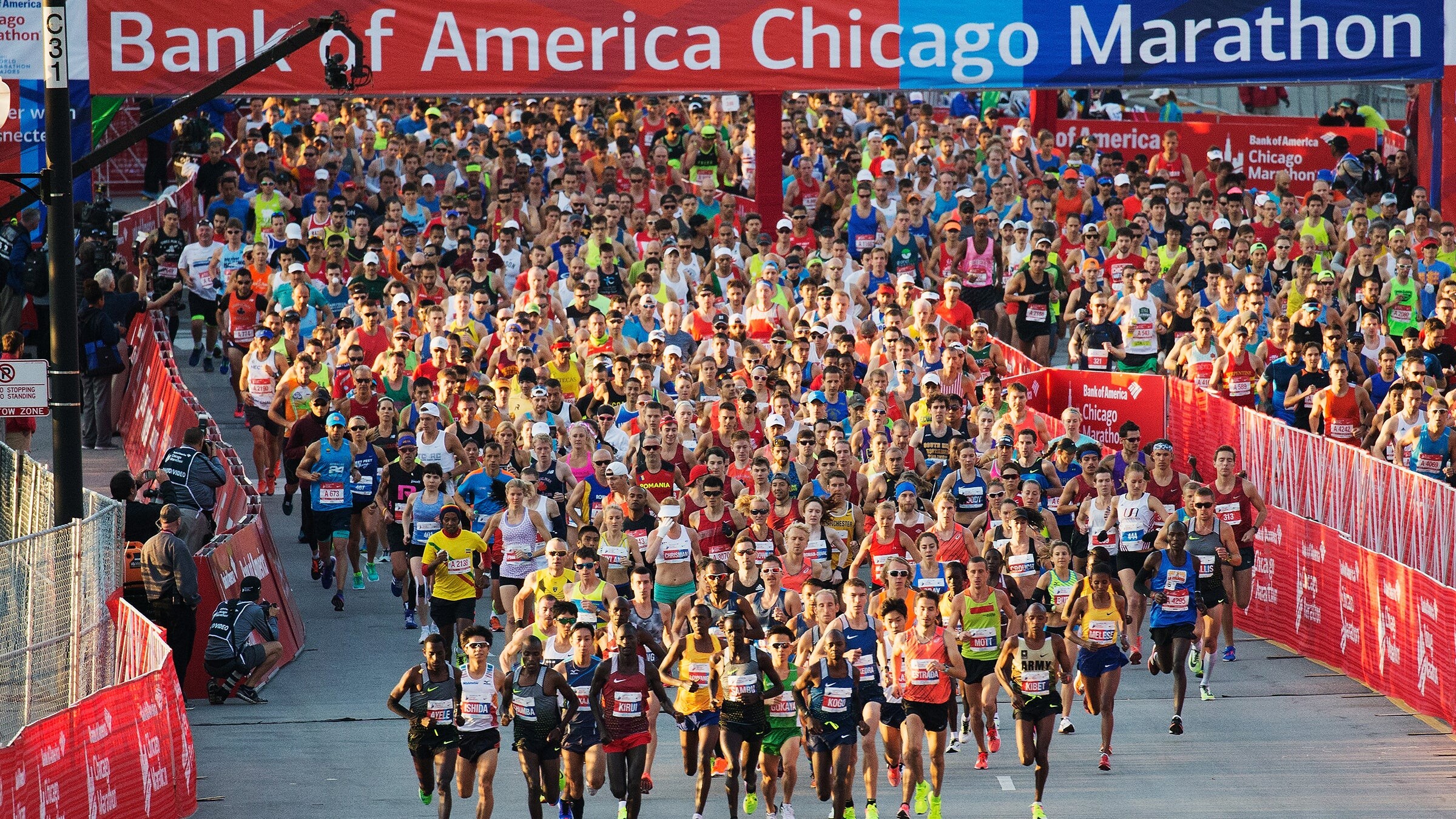
Hassan plans to compete on the track at the World Athletics Championships Budapest 23, less than six weeks before returning to the roads to race in Chicago.
“At the moment, my focus is on the World Championships in Budapest, so my marathon preparation will be very short, but as most people know, I like to be challenged,” said Hassan.
“I will see how my body responds and how my mind handles it. The good thing is that I have the experience from London so I'm looking forward to Chicago, to see what the marathon can teach me this time.”
Unlike Hassan, Sisson will skip the track season to focus on getting ready for Chicago. Last year’s runner-up, Sisson finished in 2:18:29, demolishing the US record by 43 seconds. Sisson, who also holds the US record in the half marathon, said the deep field improves her chances of running even faster this year.
“Chicago is where I set the American marathon record last year,” said Sisson. “I am really looking forward to coming back for another great race in October.”
Legendary matchups have long made for thrilling finishes in Chicago.
In 1985, a gruelling duel between Olympic champion Joan Benoit Samuelson and then world record-holder Ingrid Kristiansen saw Benoit Samuelson outlast her Norwegian competitor and set a US record.
In 2002, British world champion Paula Radcliffe defeated Kenya’s Catherine “The Great” Ndereba and shattered Ndereba' world record in the process. And in 2017, three-time Olympic gold medallist Tirunesh Dibaba took down rising star and future world record-holder Brigid Kosgei.
Chepngetich and Hassan have clashed once before, in the 2018 Copenhagen Half Marathon where Hassan broke the European record with 1:05:15 in what was her first serious attempt at the distance and Chepngetich finished fifth in 1:07:02.
The sole clash between Chepngetich and Sisson so far came at last year’s Chicago Marathon, while Hassan and Sisson have raced each other on four occasions, in the 5000m and 10,000m, with the record so far 4-0 in Hassan’s favor.
(07/04/2023) ⚡AMPby William Njuguna
Bank of America Chicago
Running the Bank of America Chicago Marathon is the pinnacle of achievement for elite athletes and everyday runners alike. On race day, runners from all 50 states and more than 100 countries will set out to accomplish a personal dream by reaching the finish line in Grant Park. The Bank of America Chicago Marathon is known for its flat and...
more...Charles Langat wins 2023 AJC Peachtree Road Race
Charles Langat won The Atlanta Journal-Constitution Peachtree Road Race’s men’s elite division Tuesday with a time of 27:43.
Tanzanian Gabriel Geay and Ethiopian Nimbret Melak finished second and third, respectively. Langat, Geay and Melak all finished at near identical times, officially recorded as 27:43. Race organizers later remarked that the finish may have been the closest in AJC Peachtree Road Race history.
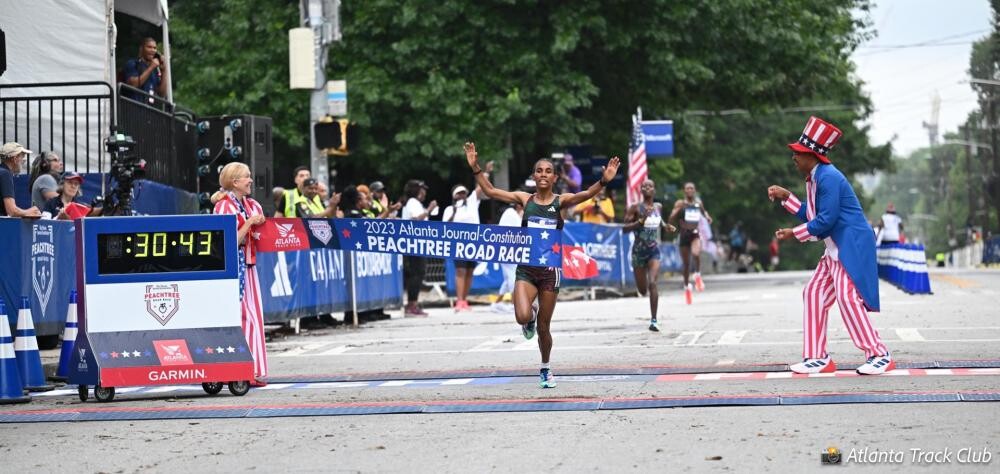
Following his victory, Charles Langat expressed his confidence in winning the race after discussing it with his manager beforehand.
“Yesterday, I talked to my manager, and I told them that I would win the race,” Langat said after his winning performance.
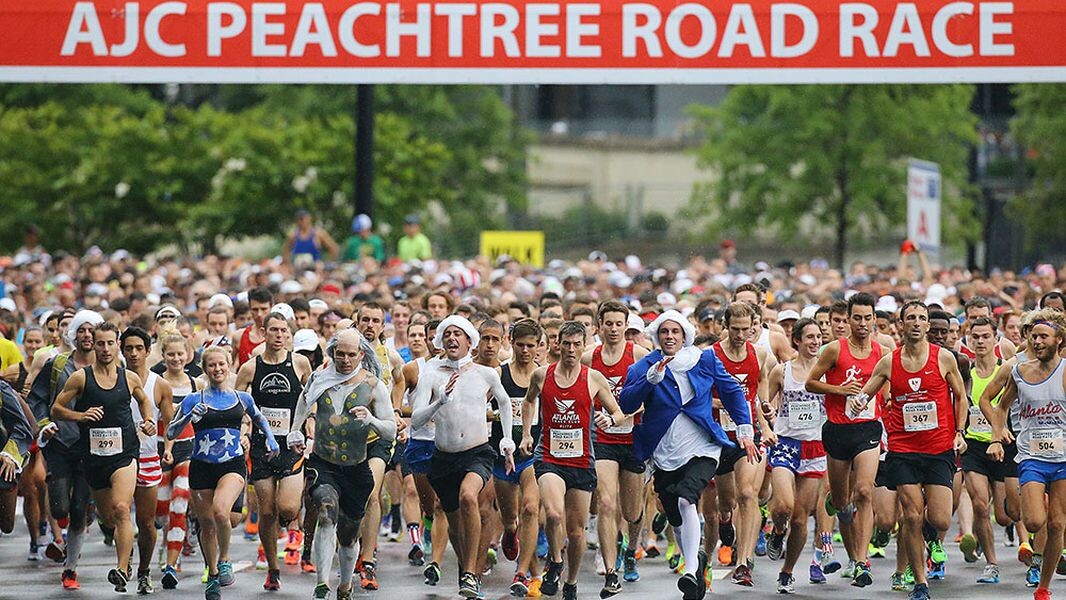
Meanwhile, Andrew Colley was the top US finisher in 28:47 for 13th place.
In the women’s race, Senbere Teferi appeared to be on track to defend the title she won at the 2022 AJC Peachtree Road Race, but she took a wrong turn in the final moments, allowing Haiylu to seize on the instant and overtake the defending champion.
Jesca Chelangat from Kenya secured second place with a time of 30:46, while Teferi managed to recover and take third place with a time of 30:47.
The top American finisher in the race was Annie Frisbie, who clocked a time of 32:20 for 15th place, with Emma Grace Hurley running 32:28 to take 16th.
(07/04/2023) ⚡AMPby Glen Andrews
AJC Peachtree Road Race
The AJC Peachtree Road Race, organized by the Atlanta Track Club, is the largest 10K in the world. In its 48th running, the AJC Peachtree Road Race has become a Fourth of July tradition for thousands of people throughout the metro Atlanta area and beyond. Come kick off your Fourth of July festivities with us! If you did not get...
more...Carbs and runners: friends or foe?
Runners create many reasons for limiting their intake of seemingly “evil” carbohydrates: I don’t like sandwiches … Pasta is so “heavy” … I’m staying away from gluten … I avoid any foods with added sugar … I prefer to eat two veggies at dinner instead of a veggie and a carby food. And, most often I hear: Bread is fattening!
Anti-carb sentiment has pervaded my entire career as a sports nutritionist. While some fads have come and gone, the “carbs are bad” fad remains ingrained in the brains of even elite athletes. I am (again) encouraging you to reconsider your stance.

• Despite popular belief, carbohydrates are not inherently fattening. Excess calories of any kind are fattening. Excess calories of bread, bagels, and pasta are actually less fattening than excess calories of cheese, butter, and olive oil. That’s because converting excess calories of carbs into body fat requires more energy than does converting excess dietary fat into body fat. That means, if you want to be gluttonous yet suffer the least weight gain, indulge in fat-free frozen yogurt instead of gourmet ice cream!
• To allay any confusion, let’s clarify what carbs actually are. Carbohydrates include both sugars and starches. Carbs are in fruits, vegetables, grains, and milk (lactose). Sugars and starches all digest into the simple sugar glucose. Glucose travels in your blood and, with the help of insulin, gets taken into muscles and stored as glycogen for fuel. Runners who restrict carbs commonly complain about “dead legs.”

• Sugars and starches are biochemically related. For example, an unripe fruit, such as a banana, is starchy. As it ripens, it becomes sweeter; the starch converts into sugar. Similarly, vegetables, such as peas, are sweet when young. Their sugar converts into starch as they mature.
• All carbs—both sugars and starches—are excellent sources of fuel. Both “carby” bagels and sugary candy end up as glucose in your blood and feed your muscles as well as your brain. Whether you are running or lifting weights, a carb-rich sports diet (with adequate protein) can enhance your performance.
• Quality carbs, such as whole grains, fruits, and veggies, offer abundant vitamins, minerals (electrolytes), and other health-promoting nutrients. Refined sugar, however, offers little nutritional value. Yet, dietary guidelines say 10% of daily calories can come from added sugar. That’s at least 50 grams of sugar for most runners and allows for some “fun foods.”
• Sugar-avoiders please note: the 3 grams of added sugar in 2 tablespoons of peanut butter will not negate peanut butter’s health-promoting fiber, protein, and anti-inflammatory fats. Nor will the sugar in chocolate milk diminish its value as a helpful recovery fluid after a hard workout. Please look at the vitamins, minerals and protein that come along with the added sugar, not just the sugar itself.
• Sports drinks, gels, and sports gummies are little more than refined sugar. That’s not bad; it’s exactly what the body wants during extended hard exercise. Even though refined sugar adds “empty calories” to a sports diet, runners need not eat a perfectly sugar-free diet to have an excellent diet. There’s a time and a place for sweets.
• The messages that carbs are inflammatory, fattening, and bad for you is targeted at sedentary people who consume excessive calories, often from highly processed foods. For those unfit (often unhealthy) people, excess carbohydrate can contribute to elevated blood glucose, which triggers the body to secrete extra insulin. Consistently high insulin can be inflammatory and lead to nasty health issues. Yet, most runners can handle carbs with far less insulin than the average American—and without carbs causing “sugar crashes” or weight gain.
• The most common reason for “sugar crashes” (hypoglycemia) among runners relates to running out of fuel. The shakiness and sweats are because the athlete did not eat enough carbs to maintain normal blood glucose levels and the brain has to demand a quick fix—sugar! One marathoner credited the sugary gel he took at Mile 16 to cause him to “crash.” More likely, he needed more just one gel to meet his energy needs.
• For runners who routinely train hard 3 to 5 days a week, carbs should be the foundation of each meal. The International Olympic Committee’s recommendations for a performance diet include far more carbs than many runners consume via fruit, salads, and cooked veggies.
Baseline targets for a 150-pound runner are:
375 g carb/day for ~1 hour of moderate exercise
450 g carb/day for ~1-3 hours of endurance exercise
525 g carb/day for >4-5 hours of extreme exercise
This comes to about 100 to 150 grams carb per meal, which equates to about 400 to 600 calories of grains, fruits, and/or veggies per meal.
If your daily menu lacks starchy foods, experiment with adding grains to each meal and snack. You just might discover how much better you can feel and perform!
(07/03/2023) ⚡AMPby Colorado Runner
Kenyan Beatrice Chebet eyes podium finish in Budapest after Stockholm victory
The world cross country champion Beatrice Chebet has her eyes trained at setting a personal best and a podium finish in the 5000m race in world championships in Budapest, Hungary next month.
Chebet's sentiments come on the back of winning the Diamond League meet in Stockholm on Sunday where she cut the tape in a time of 14:36.52.
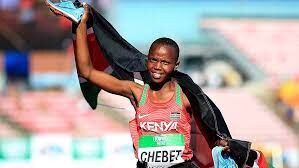
"My main goal now is the new PB at 5000m, so maybe in London, if the conditions are good, I can try to do it. My body is in perfect shape so anything is possible,” said Chebet in a post-race interview.
The world silver medalist turned up the heat in the final lap beating the Ethiopian duo of world indoor 3000m champion Lemlem Hailu (14:38.06) and 18-year-old Medina Eisa (14:40.02) to second and third respectively.
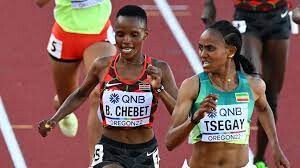
This was the second consecutive Diamond League victory for Chebet following her 3000m triumph in Oslo, Norway on June 15.
The 23-year-old said she was undeterred by the wet weather conditions at the Olympic Stadium.
‘The first thing was to get the win. The second was to fight the tough conditions. Yes, the weather was not really good but you need to run in any conditions. It was not easy to finish the race,” she added.
On the World Championships she said: "I am already thinking about Budapest where my main target is to get on the podium in my specialty."
(07/03/2023) ⚡AMP
by Samuel Nganga
World Athletics Championships Budapest 23
From August 19-27, 2023, Budapest will host the world's third largest sporting event, the World Athletics Championships. It is the largest sporting event in the history of Hungary, attended by athletes from more than 200 countries, whose news will reach more than one billion people. Athletics is the foundation of all sports. It represents strength, speed, dexterity and endurance, the...
more...Sixth fastest marathoner Ekiru latest Kenyan athlete suspended over doping
Kenyan marathoner Titus Ekiru has been provisionally suspended by Athletics Integrity Unit (AIU) for the presence of a prohibited substances (Triamcinolone Acetonide and metabolite; Pethidine and metabolite).
The AIU said on Monday that the 31-year-old marathoner faces two charges for doping and two more for tampering.
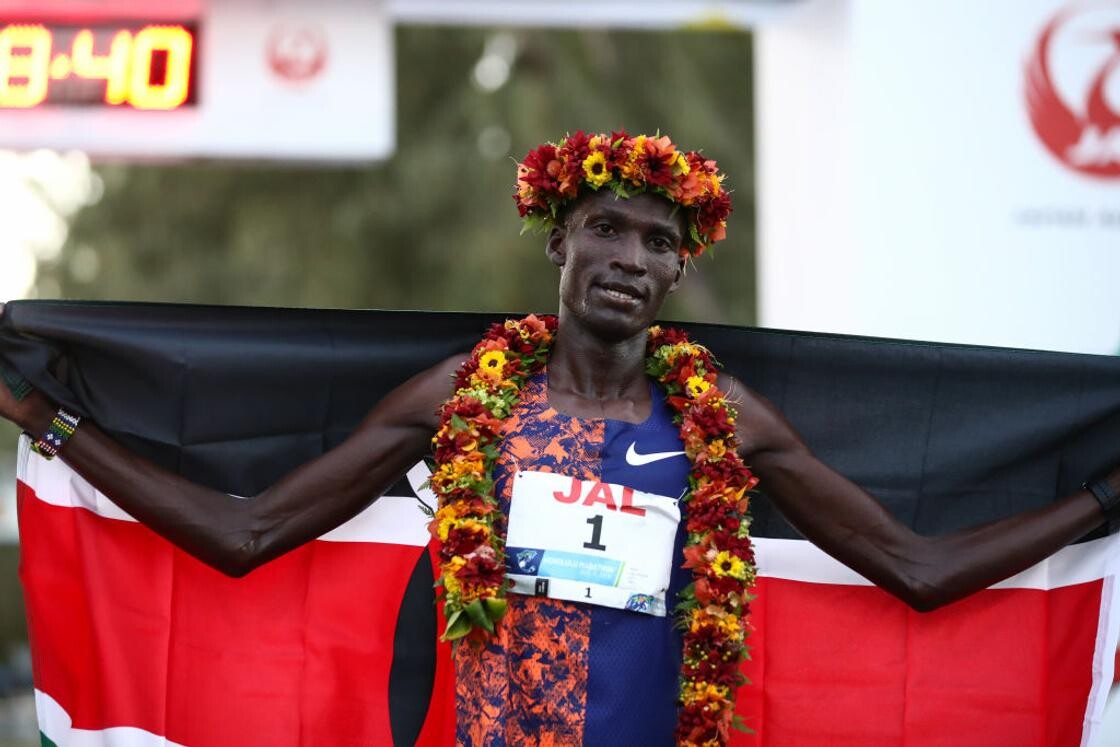
The sixth-fastest marathoner of all time, Ekiru now faces a 10-year ban but has the right to defend himself before the Disciplinary Tribunal.
Ekiru ran a time of 2 hours, 2 minutes, 57 seconds to win the Milan Marathon in May 2021 to place him in sixth in history. The current record is 2:01:09 by Eliud Kipchoge in Berlin last year.
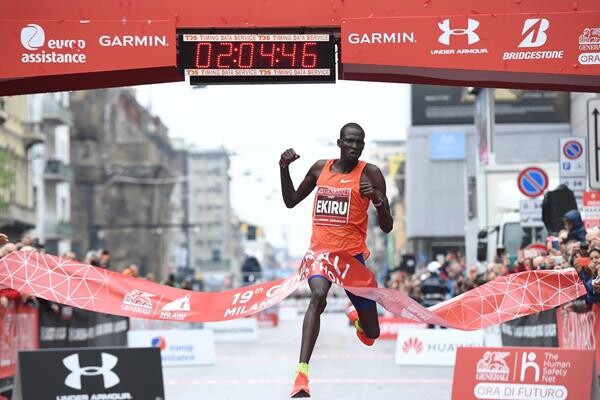
Ekiru tested positive at the Italian race for the corticosteroid triamcinolone acetonide, which is prohibited for use in-competition unless an athlete is granted an exemption for medical use.
The AIU said a first investigation into the Milan positive test was closed, then reopened when Ekiru also tested positive for a synthetic opioid while winning in Abu Dhabi in November 2021.
“The athlete tested positive for pethidine after winning in Abu Dhabi, and again claimed the outcome resulted from legitimate medical treatment,” the AIU said.
Ekiru was provisionally suspended one year ago and was later charged with suspected doping violations in March and April, the AIU said.
Two more charges of tampering have now been added for the runner “submitting falsified medical explanations and documentation to the AIU for both positive tests,” the AIU said.
(07/03/2023) ⚡AMPby Samuel Nganga
Uganda’s Joshua Cheptegei will run debut marathon in Valencia
Uganda’s Joshua Cheptegei is already the 5,000-meter Olympic champion and a two-time world champ in the 10,000 meter distance and the world record holder at both distances, but it seems he’s just getting started. Cheptegei, 26, one of only ten men to ever hold both records concurrently, says he feels it’s time to step up his distance–and will be doing so in Valencia, Spain on Dec. 3.
The Valencia Marathon, known for its fast and flat course, is familiar ground for the 26-year-old athlete. “I have run 2 of my world records there and they organized the NN Valencia World Record Day for me in Covid-times,” Cheptegei told World Athletics. “Now they have given me the opportunity to run my first marathon. I already know the track in Valencia and I am very excited to explore the roads here.” Cheptegei runs with the world’s fastest marathoner, Kenya’s Eliud Kipchoge on the NN Running Team.
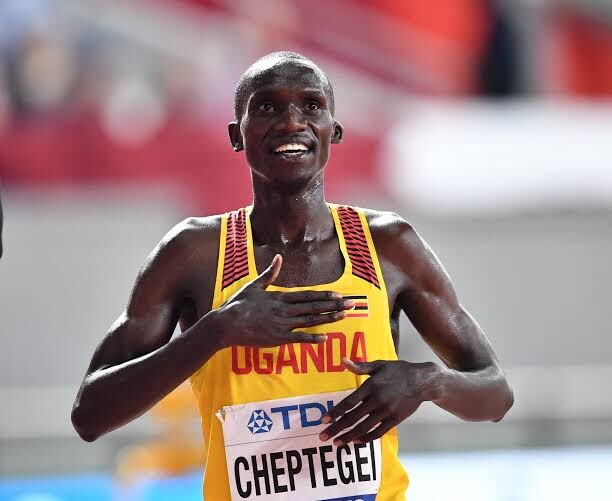
While Cheptegei says his main focus for the next year will be the 2024 Paris Olympics, he hopes his marathon debut will be a good experience–and it will help determine what direction his racing will head in post-Olympics.
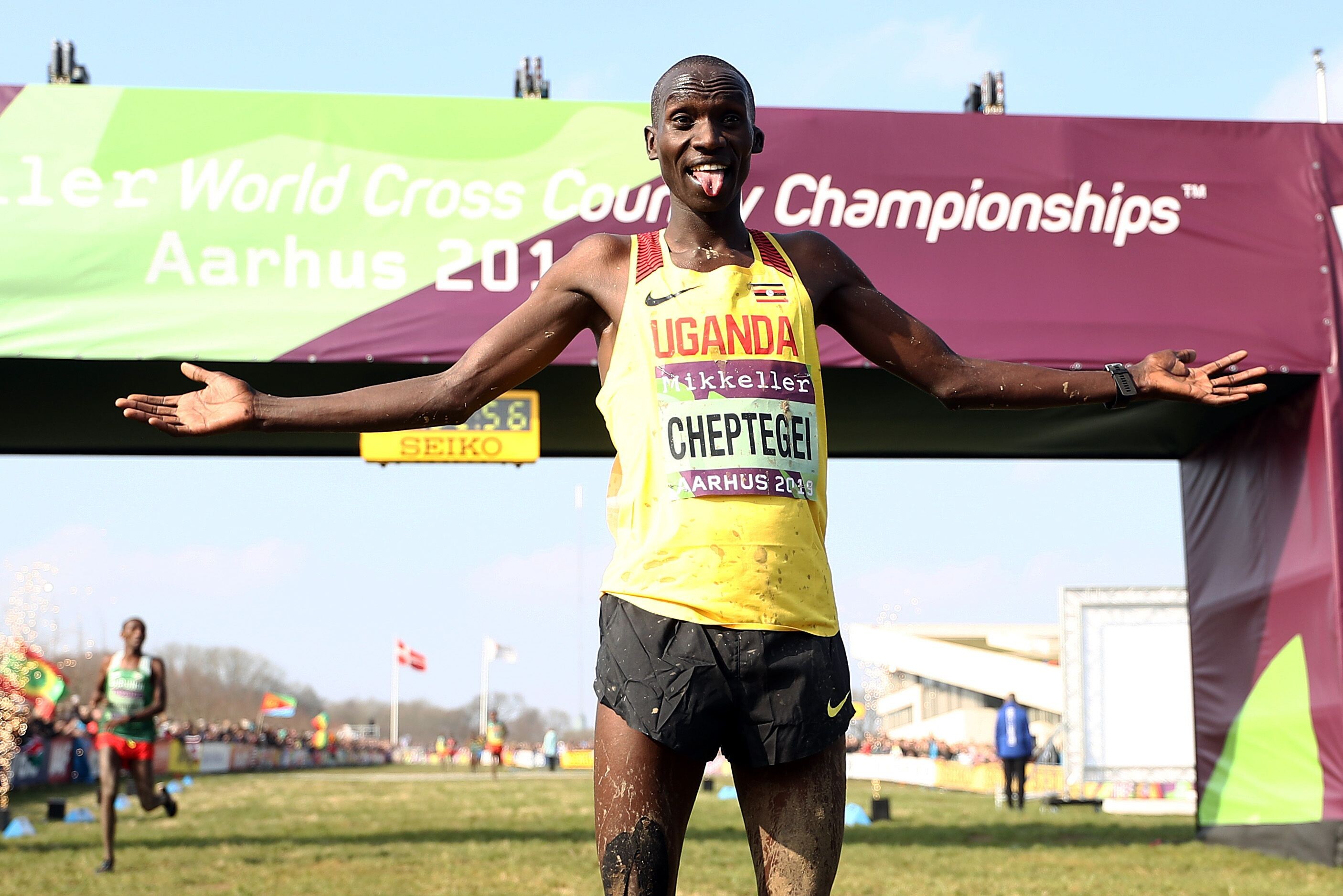
Cheptegei finished second at the New York Half Marathon in March (his second-ever attempt at the distance), and ran a PB of 59:21 at the World Half Marathon Champs in 2020.
The current course record in Valencia is a scorching 2:01:53, set in 2022 by Kenyan runner Kelvin Keptum, also in his marathon debut. The last four editions of the race have been won in sub-2:04 times, and Cheptegei’s debut at such a remarkably quick race will be greatly anticipated.
(07/03/2023) ⚡AMPby Keeley Milne
VALENCIA TRINIDAD ALFONSO
The Trinidad Alfonso EDP Valencia Marathon is held annually in the historic city of Valencia which, with its entirely flat circuit and perfect November temperature, averaging between 12-17 degrees, represents the ideal setting for hosting such a long-distance sporting challenge. This, coupled with the most incomparable of settings, makes the Valencia Marathon, Valencia, one of the most important events in...
more...The Best Gas Station Running Snacks
In a pinch, these on-the-go eats are nutritious fuel
Imagine this scenario: You’re running a race out of state and are two hours into your road trip when lunch time hits. You meant to pack a lunch box of snacks before you left this morning, but you were too busy running around getting your hydration gear, sunglasses, shoes, sweat-resistant socks, patella band, and everything else, so you forgot. The next exit off the highway advertises a gas station, so you reluctantly pull off and get ready to decide between a mushy banana or trail mix that’s 90% chocolate, 10% sugar-coated peanuts.
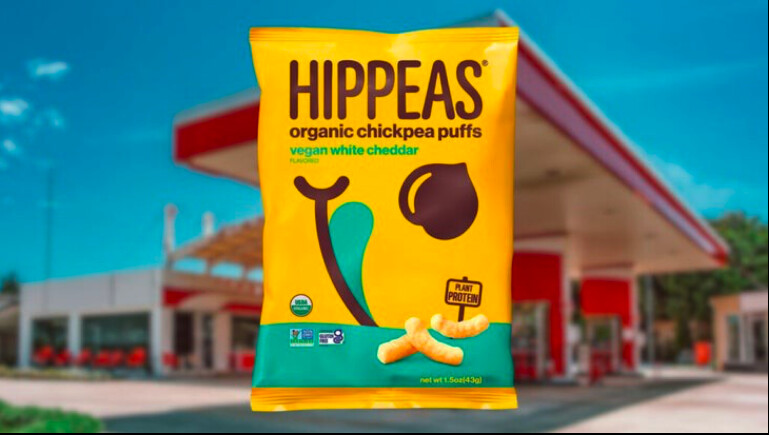
Gas stations can seem like an endless pit of overly salty, sugary processed snacks that probably aren’t part of your training nutrition plan. But there are actually plenty of options that won’t leave you feeling sluggish or with a stomach ache – if you know what to look for.
Calories: 15
Carbs: 2g
Sodium: 660mg
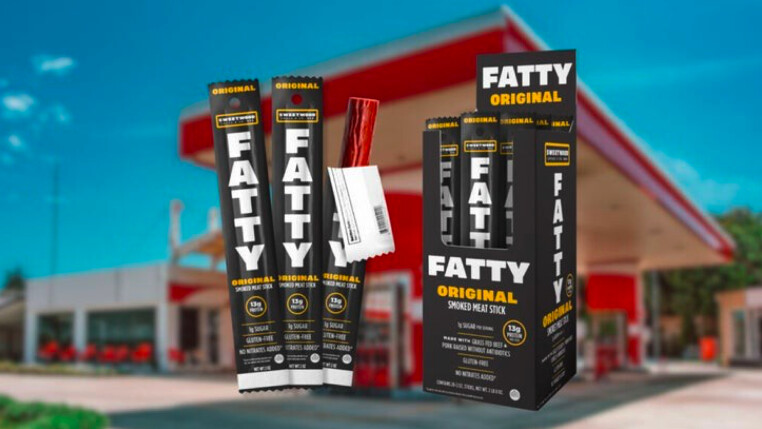
Research suggests that pickles are good for endurance athletes for a surprising reason. In general, the high amount of sodium in pickles is frowned upon by nutritionists, but sometimes it’s exactly what runners need to restore all the electrolytes lost in a training session. Pickles are always wedged into gas station aisles. Oh Snap! Dilly Bites are perfect because they come in a portable bag, are sliced into easy bite-sized pieces, and have a good balance of sodium. You may think 660mg is a lot, but it’s not much compared to the popular brand of Van Holten’s (which contains 1,080mg).
Calories: 130
Carbs: 19g
Protein: 4g
Fat: 4.5g
Sodium: 210mg
If you’re a fan of Cheetos but can’t stand the orange powder staining your fingers (and the sluggish feeling you get after eating them) then Hippeas should be your gas station snack of choice. Because these crunchy puffs are made with chickpea flour, they’re gluten-free, peanut-free, and tree nut-free. Hippeas contain a decent amount of easily-digestible carbs and they’re not packed with dehydrating sodium.
Calories: 200
Fat: 15g
Carbs: 2g
Protein 13g
Sodium: 740mg
If you’re not a bar fan, it can be difficult to find a gas station snack with a good amount of protein. While meat sticks can be a little daunting, these Fatty Meat Sticks (don’t judge the name) are made with pork raised without antibiotics, grass-fed beef, cane sugar, and cultured celery juice powder.
Pretzel Crisps
Calories: 110
Carbs: 24g
Protein: 2g
Sodium: 270mg
Boiled Eggs
Calories: 60
Protein: 6g
Fat: 4g
Sodium: 60mg
These two snacks are a match made in runner’s heaven. Pretzel Crisps – which are lower in calories, sodium, and fat compared to their regular counterparts – offer crunch and digestible carbs while pre-boiled eggs contain a balance of fat and protein. One study conducted by the American Journal of Physiology reports that eating protein and carbohydrates improves protein balance (the equilibrium between protein intake and anabolism) in endurance athletes. Thus, this combination is a two thumbs up.
While you might be hesitant to try gas station hard boiled eggs, you shouldn’t fear. Tip: Circle K hard boiled eggs are known to be the best of the best.
Pistachios
Calories: 150
Carbs: 8g
Protein: 6g
Fat: 13g
Sodium: 135mg
Calories: 90
Carbs: 1g
Protein: 7g
Fat: 6g
Sodium: 190mg
This is another prime food combination that melds protein, fats, and carbs. Pistachios are one of the rare plant-based complete protein sources, touting all the essential amino acids to make them a powerhouse nut. They’re also high in fiber, which the Sargento String Cheese lacks. Speaking of, string cheese contains 20% of the recommended dietary allowance for calcium and 14% of selenium. Not to mention it has a balance of fat, protein, and carbs.
Regardless of what you pick, it’s always better to fuel rather than go hungry. Don’t stress too much when browsing the gas station aisles, and try to stick to flavors and foods that you’re familiar with so you won’t experience any unexpected gastrointestinal distress.
(07/02/2023) ⚡AMPby Outside Online
Many Long-Distance Runners Don’t Eat Enough Calories—Here’s How to Increase Appetite So You Do
Adequate nutrition can be easier said than done. Here’s how to up your intake.
As you ramp up run training in prep for marathon season, you may assume your appetite will follow a similar upward trajectory. But that’s not always the case.
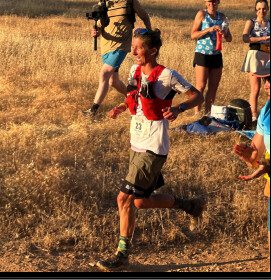
On the contrary: Intense or prolonged exercise can actually suppress hunger, quashing your desire to eat, Jordan Hill, RD, a Colorado-based registered dietitian and certified specialist in sports dietetics with Top Nutrition Coaching, tells Runner’s World.
Combine that with other factors—including lack of awareness about what and how much your body needs to sustain training, not having enough time to meal prep, and fear of weight gain—and it’s no surprise that many endurance runners are under-fueled.
Research confirms the struggle: A 2021 study of 207 cross-country runners, for example, found that 79.5 percent of female athletes and and 54 percent of male athletes were at risk of low energy availability (not intaking enough calories to support their workouts and daily needs).
That’s a problem, since subpar nutrition can trigger a cascade of issues that negatively affect your workouts—and overall health.
Here, with the help of two registered dietitians, we explain why eating enough calories is crucial to both your run performance and day-to-day functioning, telltale signs you’re underfueling, and easy ways to rev your appetite to help meet your caloric needs.
Why Adequate Calorie Intake is So Crucial for Runners
Calories are synonymous with energy, Hill explains, so not getting enough calories means you’re not getting enough energy for your body. That deficit can influence pretty much every bodily function including your immune system and metabolism, heart, hormones, GI system, and even mental health, she explains.
More specifically, not getting enough calories can decrease your performance in workouts, lead to excessive fatigue, increased your risk for injury and illness, cause nutritional deficiencies, decrease muscle mass, trigger hormonal imbalances, and cause negative psychological effects, such as mood swings, difficulty concentrating, and increased stress levels, says Hill. In other words, when you don’t fuel enough your body and mind take a serious hit.
Additionally, if you continually eat less than your body needs, you risk suppressing your appetite overall, Amity Lui, MS, RD, a New York City-based sports dietitian who works with runners, tells Runner’s World. “Not eating enough will actually impact your body’s metabolic rate and cause your body to kick into survival mode,” she adds. This means your body will require less calories over time and will shut down certain functions to save energy while increasing storage of body fat, according to Lui.
In some cases, underfueling can lead to relative energy deficiency in sport (RED-S) syndrome–essentially, a chronic state of low energy availability, Lui explains. Unfortunately, RED-S can cause long-lasting, negative effects, including decreased bone density, chronic fatigue, poor recovery, and diminished enjoyment of running since “you literally have no energy for it,” says Lui.
On the flip side, amping up calorie intake to meet your needs “will reap almost immediate benefits,” says Lui. These include increased energy, mood, cognition, and run performance, she says. You’ll also benefit from enhanced recovery, a strengthened immune system, improved body composition and cardiovascular health, elevated psychological well being, reduced risk for nutritional deficiencies, and improved hormonal balance, says Hill.
Signs of Underfueling
There are a number of signs you’re not eating enough to support your training, and tuning into them can help you rev up your nutrition habits before longer-term problems arise. “If athletes cue into how they’re feeling and what their body is doing, they can usually pick up on not eating enough before RED-S would become an issue,” says Hill.
Common signs of underfueling, according to Lui and Hill, include:
Decreased energy levels and feelings of abnormal fatigue—think: needing long naps every day, going to bed earlier than usual, or saying no to plans because of fatigue
Decreased performance in workouts—this could include being unable to complete your workouts, or consistently not reaching your target paces
Psychological and emotional changes—examples: mood swings, slowed cognition, irritability, lack of concentration, and generally feeling unmotivated
Prolonged muscle soreness and slow recovery
Getting sick or injured more often
Unintentional weight loss or difficulty maintaining your current weight
Hormonal disruptions, including loss of menstrual cycle
Changes in sleep patterns
Always feeling cold
Hair loss
12 Ways to Increase Appetite
A big reason runners struggle to get in all the calories they need is they simply don’t feel hungry.
Now, there are a “bunch of ways that our body tells us we’re hungry,” says Hill. You may not always hear your stomach growl, but could instead experience hunger in the form of a headache or fatigue. “It’s important for each person to figure out what’s their individual cue for hunger to help them be aware of that,” says Hill.
With that in mind, here are 12 expert-backed ways to kickstart your appetite and thus up your chances of eating enough calories.
1. Eat breakfast
A lot of Lui’s clients report having just coffee as their breakfast, and that’s a no-no. Skipping meals can lead to prolonged hunger, which can suppress your appetite in the long-term. “It’s almost like ignoring your body’s hunger cues,” Lui explains. “If you keep ignoring something, your body will no longer register it as a sign that you need food.”
Additionally, forgoing the first meal of the day may make it more difficult to achieve your overall calorie totals for the day. Plus, dodging a.m. fuel is associated with nutrient deficiencies and poor diet quality, according to other research.
Not sure what to chow on? Check out these on-the-go breakfast ideas for runners, plan your breakfast in advance with some meal prepping, or whip up one of these recipes to fuel your morning runs.
2. Consume smaller, more frequent meals
Instead of cramming all your calories into three big meals—which can be daunting if you’re just not feeling hungry—opt for smaller, more frequent feeding sessions. There’s no perfect cadence, but as a general rule of thumb, aim to nosh every two to three hours, suggests Hill. “It doesn’t have to be full-on meals,” she warns. Nutrient-dense snacks can fit the bill, too (more on that below).
3. Reach for easy-to-digest fuel post workout
The most common time Hill sees athletes struggle with low appetite is right after a training session, since, like we mentioned, prolonged or intense training can suppress hunger. But getting fuel in anyways—ideally within 30 minutes of a workout—is an important part of the recovery process and can, in many cases, help kickstart your appetite, says Hill.
Postrun, she recommends reaching for refreshing, easily digestible snacks, like a fruit smoothie, because they’ll be easier to stomach—literally. Lui, for her part, is a big fan of recovery shakes that have a three-to-one ratio of carbs to protein for optimal refueling.
4. Opt for energy-dense bites
If you’re really struggling to feel hungry, but know it’s time to intake calories, pick higher-calorie, higher-nutrient snacks to maximize the fuel you’re consuming, says Hill. So instead of having just a plate of crackers, have crackers with cheese and deli meat or nut butter, she says. Or in lieu of popcorn alone, combine popcorn with jerky or popcorn and nuts. Other options include Greek yogurt with granola, fruit, chia, or flax seeds; toast with nut butter; or hummus and veggies. The goal, says Hill, is to pair more than one macronutrient together.
5. Stay hydrated
Dehydration can screw with your appetite, says Hill, so it’s important to stay on top of your intake. Hydration needs vary and depend on factors including how much you exercise and sweat, your overall health, and the heat, humidity, and elevation of your environment, per the Mayo Clinic. As a general rule of thumb, you’re probably adequately hydrated if you don’t feel thirsty and your pee is light yellow or colorless.
6. Consider liquid calories
When hunger just isn’t there, it’s often easier to drink versus chew your calories. That’s where things like smoothies, shakes, juices, and soups can be helpful. “It is less taxing to sip on something versus having to prepare, reheat the food, cook it, and then chew it,” says Lui. To make your sippable meals as nutritious as possible, consider adding nutrient-dense extras like nut butters and seeds, she says.
7. Find foods you actually enjoy
This may sound like a no-brainer but finding foods you actually enjoy eating—and not focusing so much on what you feel like you should be eating—can help combat a suppressed appetite, says Lui. After all, you’re much more likely to want to nibble when it’s something you genuinely like versus something you feel obligated to choke down.
8. Reduce fiber intake
High-fiber foods can help keep you ~regular~ but they also keep you feeling full for longer, which may not be desired when you’re struggling with appetite. Fiber-rich meals, like large salads, “can result in bloating and delay gastric emptying, both of which can make you feel less hungry,” explains Lui. So, instead of opting for a kale salad at lunch, consider a grain bowl with quinoa, farro, rice, or barely; in lieu of a whole baked potato at dinner, have a bowl of pasta.
9. Keep mealtime exciting
Hill explains it this way: “If you’re eating the same thing over and over, you’re already going to be disinterested, and then you throw no appetite on top of that, and it’s really going to make you not want to eat.”
Beat the mealtime blahs by trying new-to-you flavors and textures. Make a reservation at that just-opened restaurant in town. Or, explore food blogs, watch cooking shows, and follow social media accounts that offer diverse and innovative recipes, suggests Hill.
10. Pack snacks
To help with eating consistently, carry non-perishable snacks with you—like granola bars or trail mix—so that you’ll have something to nosh on during those times when you’re commuting and transportation gets held up or you end up having to run an extra errand. “I like to call them emergency snacks, even though sometimes I eat them not in an emergency,” says Lui.
11. Cook with oils
Don’t be afraid to cook with oils, says Lui. This will allow you to get more calories in without having to eat a higher volume of grub. Plus, the fats in the oil enhance the absorption of fat-soluble vitamins, including vitamins A, D, E, and K, Lui adds. So instead of boiling or steaming your veggies, for example, coat them in oil and grill, stir fry, air fry, or sauté them.
12. Tap an expert for help
Because dietary needs and the factors affecting your appetite can be so individualized, it never hurts to consult a registered sports dietitian for personalized advice. They can help you figure out where you can incorporate more nutrient- and energy-dense meals and snacks into your day, says Lui, as well as determine how you can best fuel for your training goals.
(07/02/2023) ⚡AMPby Runner’s World
Bill Thorn Ends His 53-Year Peachtree Road Race Run Streak This July 4
The 92-year-old is the only runner to have completed the famous 10K every year since it began in 1970.
This year’s running of the historic Peachtree Road Race in Atlanta will mark the end of an era. Bill Thorn, the only person to have run what has become the largest 10K in the world every year since it began in 1970, is ending his 53-year race streak. At 92 years old, Thorn thinks it’s finally time. He’s dealt with balance issues over the past few years, and has been racing with the aid of a walker.
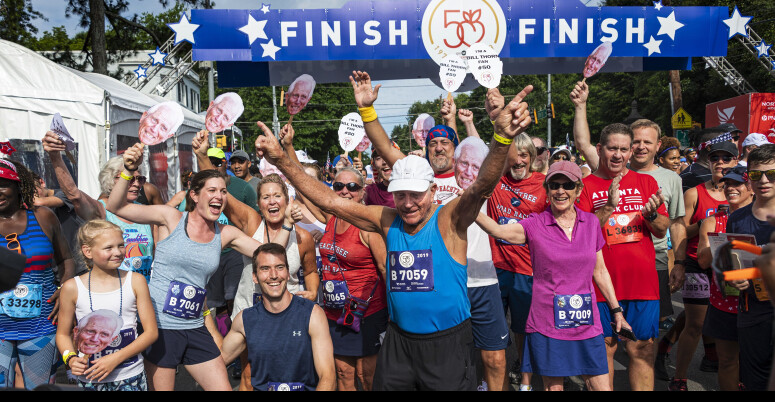
“It’s been really exciting over the years, but there comes a time when you have to let go,” he said in an Atlanta Track Club press statement.
In a year that features the deepest women’s field in the history of the race, including five women who have personal bests faster than the course record of 30:22, it’s not just the elite runners who will be anticipated at the finish line.
On Tuesday, Thorn will be honored as the Peachtree’s Grand Marshal, and he’ll be chauffeured down the 6.2-mile course that he arguably knows better than anyone else in history. Just before the finish in Piedmont Park, he’ll emerge from the vehicle to be celebrated as he crosses the finish line on foot for the last time.
“There is only one way to stop worrying about not finishing, and that is to just be finished,” he said, “I’m going into a new era.”
Thorn has been a lover and booster of running for a long time. He coached athletes across various sports for 64 years, and in 2019, he retired from Landmark Christian School in Fairburn (an Atlanta suburb) where since 1995, he’d led his teams to 42 state championships in football, track, and cross-country.
For many years, Thorn had good company as one of the “Original 110” finishers from the inaugural 1970 road race, but those numbers dwindled over time. He and Don Gamel were the only two who ran every year through 1992, and by 1993, Thorn was carrying that torch alone.
Every Fourth of July, he’s shown up on the start line and hustled up the infamous “Cardiac Hill” in the stifling summer heat and Georgia humidity, whether he was coping with an ankle sprain, heel gash, or something as serious as prostate cancer. In his younger years, he raced his fastest times in the 39-minute range, but over time, the race became more about having fun with his family—his 30-year-old granddaughter, Kenzie Bayman, was his “race day buddy” for several years. The senior runner has been completing the race virtually since the COVID-19 pandemic, running a carefully measured route in his neighborhood.
On the Peachtree’s 50th anniversary in 2019, Thorn said, “It could’ve been just a fad, but as you go along through the years, people like Julia [Emmons, the former Atlanta Track Club Executive Director] says to me every once in a while to ‘keep going’ and that was really encouraging, and so it just became a year after year thing.”
This year, Thorn will be honored with his name engraved on the Peachtree Cup, an honor that up until now has been reserved for race champions, including Aliphine Tuliamuk, Stephanie Bruce, and Jeff Galloway. This distinction is all his own. “No one else will ever be able to say they did the first 50,” he said.
You can stream the AJC Peachtree Road Race on the 11Alive YouTube channel on Tuesday for free. The elite women will start at 6:50 a.m. ET and the elite men will set off at 7 a.m. ET.
(07/02/2023) ⚡AMPby Runner’s World
The Fastest Man Without a Country
Refugee Dominic Lobalu has proven that he can beat the best runners in the world. But will that be enough to get him to the World Championships?
In May 2019, a 20-year-old runner named Dominic Lokinyomo Lobalu, from what is now South Sudan, won a 10K road race in Geneva, Switzerland. Lobalu, who was separated from his parents as a child during the second Sudanese civil war, was competing for the Athlete Refugee Team—a World Athletics-backed initiative that recruits talented individuals from refugee camps and helps get them into prestigious events around the world. A rising star in the ART ranks, Lobalu was living in Kenya at the time and training under the former marathon great Tegla Loroupe. As a teenager, he’d competed in the 1,500-meters at the 2017 World Championships. The 2020 Olympics seemed like an attainable goal. But after that race in Geneva, Lobalu made a decision that would radically alter the trajectory of his young athletic career: early the next morning, he absconded from his hotel with the intent of seeking asylum in Switzerland.
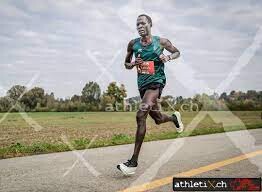
What happened next sounds like the stuff of sports fiction. A few months after he defected from the ART, a Swiss refugee center put Lobalu in touch with Markus Hagmann, a schoolteacher in Saint Gallen, who coached at a local track club called LC Brühl. Hagmann had been a competitive amateur in his day and still held the club’s record in the 3,000-meters—a formidable eight minutes and nine seconds. As soon as he saw Lobalu run, Hagmann recognized the young man’s stupendous talent and began entering him in local races to get a sense of just how fast he could run. It quickly became apparent that the Swiss national-level road racing circuit wasn’t going to cut it. Initially, Lobalu’s asylum-seeker status meant that he couldn’t leave the country. But in June 2022 he finally got a short-term residency permit, allowing him to travel. In his first international race, Lobalu outkicked Jacob Kiplimo, the reigning half marathon world record-holder from Uganda, to win the 3,000-meters in a world-leading 7:29:40 at a Diamond League meet in Stockholm.
“When we first met, it was not about getting a Diamond League win or creating a champion,” Hagmann says of his relationship to Lobalu. “It was just that there was a guy who had suffered and who needed help. And the thing that connected us was running.”
His breakthrough performance in Sweden last June has established Lobalu not only as a world-class athlete, but as someone capable of medaling at a global championship. Subsequent results have only affirmed his incredible potential. In the span of two weeks last September, Lobalu ran a 12:52 5K and a 59:12 half marathon; both among the fastest times in the world. According to Hagmann, Lobalu produced these results on a paltry 40 to 50 miles a week—less than half the training load of your typical world-class distance runner—as his body was still adjusting to the demands of high-volume training.
But the principal obstacle preventing Lobalu from having a shot at a glittering career on the international stage is perhaps more bureaucratic than physical. He currently has a short term, self-employed work permit in Switzerland and is in the process of applying for permanent residency, but acquiring full Swiss citizenship usually takes more than a decade. This means that Lobalu is technically ineligible to represent Switzerland at the Olympics or the World Championships. Meanwhile, since he chose to leave the ART to seek asylum in Switzerland, World Athletics says that he has forfeited the right to compete for the program. When I asked Lobalu if there was a way for him to represent South Sudan, he responded that that was “never an option.” As he put it to me: “Could you run for a country that took everything in your life? A country you’ve had no connection with for the last 16 years. A country that has one of the worst humanitarian crises in the world?” What’s more, when he left the country as a nine-year-old, South Sudan, which only became a republic in 2011, didn’t yet exist.
Earlier this year, the Swiss athletics federation put in a request with World Athletics asking the sport’s global governing body if there was any way for Lobalu to get out of his legal limbo in time to compete at the World Championships in Budapest in August. In an email, World Athletics confirmed that the Swiss had put in a request for a “transfer of allegiance” and the application was currently going through the “appropriate review process.”
The resulting uncertainty is the subject of “The Right to Race,” a mini documentary that was released today. (You can watch it here.) The film was produced by the Swiss running shoe company On, which began sponsoring Lobalu after its co-founder Oliver Bernhard happened to witness him eviscerate the competition in a Swiss road race in December 2019. It’s rife with gorgeous footage of Lobalu striding through alpine landscapes (and buying milk from a Swiss farmer) but the film smooths over some of the rougher edges of Lobalu’s story—most notably his reasons for defecting from the ART and his extreme ambivalence towards his country of birth.
In a 2021 article in Time, Lobalu is quoted as saying that while he was at Loroupe’s training camp, he was deprived of prize money that he had earned and generally treated as a second-class citizen of nowhere. When I asked Lobalu about this on a recent phone call, however, he demurred and simply said that the situation in Kenya “wasn’t working for him.” (On has also had sponsorship arrangements with the Athlete Refugee Team.) While one can hardly blame Lobalu for not wanting to ruffle any more feathers, his disenchantment with the ART program seems like crucial context that is noticeably absent from “The Right to Race.”
To be fair, the film does a good job of portraying the conundrum for World Athletics.
“We can’t continue to persuade countries to give visas to refugees who may abscond and seek refugee status in their country,” World Athletics official Jackie Brock-Doyle says in the film. “From where we sit, he couldn’t continue to be part of the Athlete Refugee Team because, if so, the message to every other refugee is: Look, isn’t he a hero? Why don’t you do the same?”
Brock-Doyle reiterated this to me via email, but said that World Athletics was working to find a solution for Lobalu: “We would like to stress that there is a huge amount of sympathy for Mr Lobalu’s situation given his terrible experience as a child fleeing civil war in South Sudan. He is undoubtedly a talented athlete, and if we were able to find a way to include him in the ART programme without seriously compromising the programme—or possibly damaging it irreparably—we would have done so.”
For his part, Hagmann told me that while he understands the predicament for World Athletics, he feels that a runner’s refugee status ultimately shouldn’t be contingent on where he happens to be seeking asylum.
Of course, the amount of attention Lobalu is getting—and any prospective “hero” status—has been amplified by his success on the track. Hagmann is adamant that their relationship is first and foremost about friendship, but it’s hardly a stretch to suggest that his star athlete would be less likely to have the backing of a foreign athletics federation and a global corporation if he were just another semi-pro. “The Right to Race” includes an interview with one of Hagmann’s friends, who explicitly argues that finding a way for Lobalu to compete isn’t a matter of humanitarian goodwill, but of athletic integrity. “There must be a way for him to compete as a neutral person. Not because he is a nice guy, but because he is the best. The fastest person, or if he’s the second- or third-fastest, needs to have the possibility to start at the World Championships and the Olympic Games.”
I asked Lobalu whether this had been on his mind when he made the fateful decision, four years ago, to remain in Geneva.
“I think, in running, there is nothing that you are sure about—where you can say that, This is going to happen in this way. It was just my decision. I took it without knowing what would happen. So I just took a risk. I said: Let me try.”
(07/02/2023) ⚡AMPby Outside Online
5 Exercises for Better Balance and Stronger Knees on the Trail
Fine-tune your muscle imbalances with this workout finisher series from physical therapist assistant and personal trainer Lee WeltonNo matter what type of workout you have planned, you can finish it off with exercises that make you a stronger and more injury-proof hiker. The suggestions below are ideal for hikers who are short on training time yet want to address remedy common issues like knee pain or poor balance or add a boost of low-impact cardio before their next adventure.Take 5 to 10 minutes to perform box step-ups after a workout. This short routine will provide an extra dose of exercise for the legs and lungs alike. Select a box height that is anywhere from mid-shin to about knee-high. Don’t have a box on hand? A park bench will do the trick. For an additional challenge, you can do these with a weight vest or while holding dumbbells. Alternatively, these can be performed as lateral steps up and over.
Lateral step-downs are an excellent option for hikers who experience knee pain while hiking downhill. This exercise requires a step of 6 to 8 inches in height. If there’s pain with the exercise at this height, lower the height to 2 to 4 inches and retry.
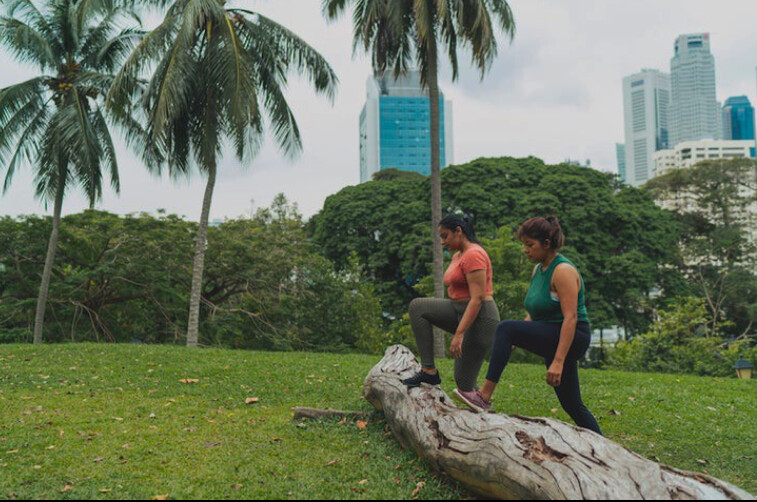
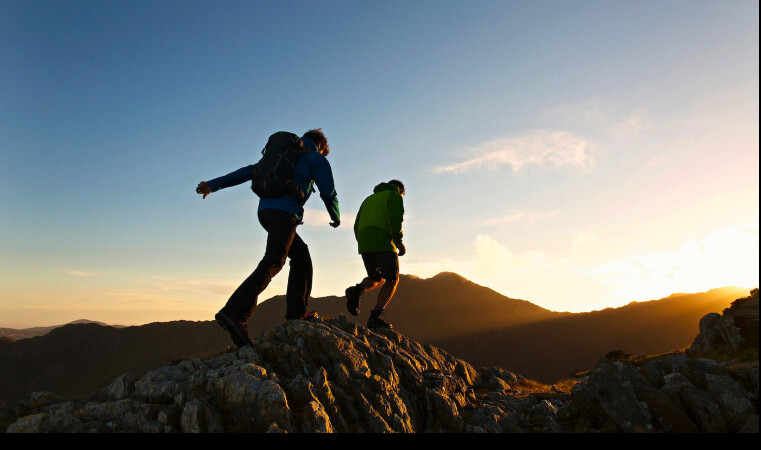
To perform a lateral step down, start by standing with your left foot on the step and your right foot next to the side of the step. Bending your left knee, slowly lower the right foot toward the floor and tap your heel. Be sure to keep your left knee in line with your left foot and behind your toes as you bend. Also, the lowering motion should come from your left leg, not from your right foot reaching for the floor.
Press through the left foot to return to the start position. Slow and controlled is the key here; fast reps won’t do you any good. Aim for a 3-second lower and a 1-second raise. Begin by performing three sets of 15 per leg and build up to four sets.The treadmill is a great tool to help prepare for climbs, especially if you have a limited amount of time to train. This workout finisher is straightforward and helpful for building aerobic capacity for hill climbs. Set the treadmill at an incline level between 3 and 6 percent and set a pace to keep you moving steadily for 10 to 15 minutes. Focus on nasal breathing during the session to mimic climbing a hill while hiking. Nasal breathing will help to keep the intensity where it’s most beneficial for hikers and optimize training time. To progress, add a weighted pack, and increase the incline or speed while maintaining nose breathing.
Utilizing the rower or bike as a training tool can be helpful, especially if there’s a history of any joint pain. These machines are low-impact and excellent at building aerobic conditioning for hiking.
For the rower, a 1,000-2,000 meter low-to-moderate effort focusing on nasal breathing will provide a great cardio workout finisher while targeting some of the larger muscle groups that hikers need. On the bike, pedal for 10 to 15 minutes with a low-to-moderate effort to maintain a consistent cadence or watts. Focus on nasal breathing for this workout also. Good balance can be the difference between staying dry while crossing a creek or ending up with wet feet. Not to mention that balance also builds ankle stability, which is helpful on a technical trail. This often overlooked component of training also serves us well in life beyond the trail.
A few balance exercises are easy to fit into a daily routine, fit in between larger groups of exercise, or practice at the end of a workout. There are two types of balance: static and dynamic. Static balance is done on a hard surface without additional movement. Dynamic balance typically incorporates less stable surfaces and/or adds motion to challenge balance further.
Static balance at home might look like standing on one foot while the coffee or tea brews, while your food reheats in the microwave, or while you brush your teeth.
In the gym, add dynamic balance with a weighted pass. Stand on one leg and hinge at the hips so the torso is slightly forward. Transfer a 10-pound weight from one hand to the other while maintaining balance. Balance for 20 seconds per leg and repeat three times.
Lee Welton is a physical therapist assistant and personal trainer in Southeast Idaho. He thru-hiked the Pacific Crest Trail in 2018 and trekked through the Dolomites in Italy. He can typically be found hiking and exploring the trails in Idaho and Wyoming. For more information, videos, and resources from Welton, visit trailsidefitness.com.
(07/02/2023) ⚡AMPCan Exercise Replace Your Antidepressant?
Some doctors are now prescribing physical activity for mental health. Here's why.
For centuries, we’ve known anecdotally that movement can improve your mood. Joggers often describe a euphoric runner’s high, while swimmers recall an inner calm that lasts long after they leave the pool. In April, researchers published the strongest evidence to date showing that physical activity does more than induce these temporary feel-good effects; It can actually improve depression as effectively as medication or psychotherapy. The findings build on previous studies showing exercise can reduce anxiety, post-traumatic stress disorder, bipolar, and obsessive-compulsive disorder symptoms.
This mounting evidence doesn’t suggest you should toss out your medication or skip your next therapy appointment in favor of exercise alone. But it does indicate physical activity could be a powerful first-line treatment for mental health disorders, especially when combined with other therapies.
Based on the data, some experts see exercise as a safe, cheap antidepressant that could help the estimated one third of adults with mental illness who do not receive adequate treatment. And some clinicians are putting this concept into practice, doling out “exercise prescriptions” for mental health. These scripts give patients step-by-step instructions for physical activity recommendations, much like they would with antidepressants or behavioral therapy. But providers say that on the whole, the field has been slow to embrace exercise as medicine for mental illness, and “exercise prescriptions” remain the exception in clinical care, not the norm.

“Exercise is a good, underutilized tool to help with mental health conditions,” Ivan Escobar Roldan, a psychiatrist in Florida who regularly writes “exercise prescriptions” for his patients and studies the use of exercise in clinical practice, says. He co-authored a study published in the Journal of Psychiatric Practice in 2021 showing that while many providers generally encourage patients to be active, they don’t often give specific instructions due to a lack of training, education, or standardized clinical guidelines.
“Everyone says you should exercise more,” Seattle-based clinical psychologist Julie Vieselmeyer says. “But patients always ask: What does that mean? Do I need to take an extra lap around the grocery store, or does that mean I have to go to a gym for three hours every day?”
Currently, mental health providers don’t give the clearest answers to these questions.
Exercise is as close to a miracle drug as we’ve got. Research shows it works as effectively as some prescription drugs in preventing and treating more than 26 different diseases.
When you start a workout, your pulse quickens and breathing deepens as your heart pumps oxygen-rich blood to your brain and muscles. Within a few minutes, you likely notice a lift in your mood as your brain releases “happy chemicals” like endorphins, dopamine, and serotonin (the same neurotransmitter targeted by antidepressants). The fleeting bliss of a runner’s high results from a spike of endocannabinoids in the bloodstream—cannabis-like signaling molecules that are naturally produced in your body and induce feelings of calm.
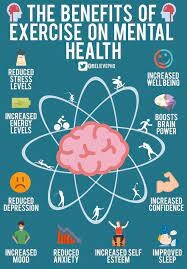
After your strength or conditioning session wraps up, the positive effects don’t stop. Over time, physical activity can increase levels of a protein called brain derived neurotrophic factor (BDNF), which leads to the creation of new neurons. More BDNF is correlated with reduced anxiety and depression, better focus, improved cognition, and sharper memory as you age.
When people exercise regularly, the brain’s hippocampus—the area linked to memory and learning—has also been found to increase in volume. That’s not all. With a regular workout routine, people often feel better, sleep better, eat better, and report improved relationships and work satisfaction. Exercising can burn off anxious energy as well as increase resilience to future stress. Eventually, it can even help people taper off medication and cut down on doctor’s visits or medical treatments. People who start to exercise before or during middle age typically save between $824 to $1,874 annually on their health care costs after retirement.
“While medications may take a few weeks to work, you see benefits right away with exercise,” Escobar Roldan says. “It’s not only going to help with anxiety, depression, and many other mental health conditions, but also with patients’ overall health and other chronic conditions.”
Getting moving can be tough initially. Despite the upsides, less than a quarter of U.S. adults do enough aerobic exercise or strength training to meet the national physical activity guidelines. But once people get going, exercise’s instant gratification often kicks off a beneficial feedback loop, Vieselmeyer says.
“When we’re making healthy choices, that ends up affecting how we think about ourselves, our self-confidence, and our energy levels—things affect our emotions positively and lead to behavior change,” she says. Working out isn’t just about quelling anxiety, depression, or negative emotions, but fostering positive ones too.
Matthew Ellison, a late-twenties investment banker based in New York City, has experienced these benefits firsthand. Ellison has a history of anxiety and recently dealt with a bout of depression tied to work stress. With the support of his therapist, Ellison made going to the gym a daily priority. He says the routine pulled him through this period and has become a non-negotiable practice to maintain his mental health.
“Being able to clear my mind, in the morning or late at night, has honestly been the greatest thing for my mental health,” Ellison says. “It’s the foundation for my mental well-being.”
For more than 20 years, Vieselmeyer has been interested in exercise as medicine, and says that amid recent studies, she is seeing more acceptance of the topic across the field. But even with a robust body of evidence, providers still struggle to convert these research breakthroughs into targeted exercise prescriptions.
That’s because there’s little formal training or education on the topic. Some clinicians are concerned about their patients’ health status and worry that exercise might lead to injury or cause a heart attack. Others simply don’t have the time to discuss exercise in depth.
Many providers recommend 150 minutes (or 2.5 hours) of physical activity per week—guidelines from the U.S. Department of Health and Human Services—but are hesitant to give concrete instructions beyond that. The American Psychological Association’s most recent clinical practice guidelines on depression don’t mention exercise as treatment.
In his own practice, Escobar Roldan uses resources like this prescription form created by Exercise is Medicine, a global initiative coordinated by the American College of Sports Medicine. The organization also provides a handy action guide to help providers prescribe the right “dose” of physical activity for more than 40 chronic conditions, including mental health disorders. Exercise is Medicine maintains a referral program for health professionals to connect patients with qualified exercise professionals. Some insurance companies also subsidize training programs or gym memberships, or even reimburse health and fitness expenses. But these programs aren’t yet commonly used in the mental health arena. “You need a lot of mounting evidence to see a paradigm shift or clinical practice change,” says Escobar Roldan. “With more awareness, we’re moving towards that, but we aren’t there yet.”
To get patients moving, Vieselmeyer and Sarah England, a clinical psychologist based in New York, don’t use strict “prescriptions.” Instead, they draw on techniques from cognitive behavioral therapy, one of the most evidence-based forms of therapy. The psychologists use motivational interviewing to explore the root causes of behavior and barriers to exercise. They also target behavioral activation, which uses behavioral shifts like physical activity to influence people’s emotional state.
“If clients are severely depressed and unable to do their laundry, I’m not going to suggest running two miles,” England, who helps patients set “SMART” goals that are specific, measurable, achievable, relevant, and time-bound, says. “We have to behaviorally activate them first, in smaller steps, like walking around the block.”
Ellison managed to establish a regular workout routine with only vague encouragement from his therapist. But for many others dealing with mental health issues, symptoms like fatigue or lack of motivation preclude their ability to exercise regularly.
“When somebody is really depressed, it’s hard to put the running shoes on and get out the door, even if they know that’s going to make them feel a whole lot better,” Vieselmeyer says. Sometimes the easiest entry point might be medication or seeing a therapist, and then progressing to exercise, she says.
Much of the evidence behind the antidepressant and anti-anxiety effects of exercise is based on people with mild to moderate cases of mental illness. A few small studies suggest that structured workout treatments can help patients with serious mental illness in inpatient settings. But on its own, exercise is unlikely to alleviate serious mental illness, experts say.
A major reason why mental health providers have been slow to embrace exercise as treatment is because researchers haven’t nailed down the exact “dose and effect” like they would with a prescription drug. More research is needed to determine which type of exercise works best, how much is needed, and who it can benefit mentally.
Based on what we know so far, the most effective exercise prescription includes physical activity that is:
Escobar Roldan suggests people bring their heart rate up to the point where they are a little bit out of breath. Gardening, walking, dancing, hiking, running, or cycling can all ease symptoms of anxiety and depression.
Most studies point to aerobic exercise as a way to boost your mood, but evidence shows strength or resistance training works too. It’s more about getting people moving doing something they enjoy, rather than finding the “perfect” exercise, Vieselmeyer says.
Group exercise sessions, from bootcamp to yoga, can be especially effective. People appear to gain more benefit when supervised by trained health and exercise professionals. There’s also the extra opportunity to connect with others, which pays dividends on our mental health.
Vieselmeyer recommends starting small. No triathlon or two-a-days involved. It’s more about working out consistently, not calculating the perfect ratio of Crossfit to Pilates.
“Whatever prescriptions are made going forward need to fit with people’s lives, or they’re just not going to do them,” Vieselmeyer says. “There are already enough barriers for people to exercise.”
Ultimately, physical activity isn’t a silver bullet for mental health—and more intense movement isn’t always the best strategy, especially for fitness fanatics who already train hard. “A good long run is not enough to process through your history of trauma,” Vieselmeyer says. If exercise alone was the panacea to our mental health crisis, we wouldn’t see any mental health difficulties in professional athletes, England notes.
The right exercise prescription comes down to each person’s level of physical and mental fitness. “I certainly hope no one is hesitating to prescribe exercise on top of other evidence-based treatments,” Vieselmeyer says. “I would rather give patients more tools than fewer, and then see where their interest lies.”
(07/01/2023) ⚡AMPby Outside Online
Four unconventional ways to manage chafing—and effective alternatives
Chafing often happens when you least expect it, causing distress and irritation on runs that are typically enjoyable. Ranging from mild to severe cases, failing to tackle the issue as it arises can cause infections without treatment. For this reason, it’s usually better to stop and deal with the problem before it grows.
I’ll never forget the first time I dealt with chafing. I was on a long run following the Appalachian Trail, and the air was thick with humidity. By the time I stopped to look at my irritated skin, it was already red and inflamed. After stubbornly fighting my way to the top of another peak, I gave in and asked my friend to lend me their maximum-strength butt paste, a popular household product used for infants with diaper rashes that old-school runners have adopted as their own.

They’d been using it for miles, swearing by its ability to soothe the chafe. I squished the contents of the tube into my palm and slathered the cream all over my hips and thighs. In seconds, parts of my body that were previously swampy and covered in salt were dry and cool. It was the perfect cure for the endurance chafe, drying my skin long enough to churn out a few more miles.
This was my first run-in with raw hips, but it wouldn’t be my last. Although I usually scraped by on short trail runs without any serious chafing, I continued to struggle with friction on longer days. I quickly found a stick of Body Glide and found that it wasn’t long-lasting enough for me to love it.
The burn haunted my dreams, driving me to find lasting solutions by trying everything, from coconut oil to soothe the burn after long days in the wilderness to deodorant when I’d forgotten the magic butt paste. Some solutions worked, while others only made the situation worse.
Here’s what you need to know to prevent desperate chafing mishaps:
Chafing is a condition of the skin that occurs with repeated skin on skin contact. The friction of the rubbing can cause small abrasions in the skin, worsening in effect with moisture and the wrong fabrics. The result of this type of rubbing is painful, and it’s often difficult to continue running once the chafe has begun.
Chafing happens at the worst possible time, leaving you desperate to find solutions. To manage the problem, you might start out by ignoring it. When that doesn’t help, you start to wonder if slathering a packet of goo on the problem area might provide enough relief until you can make it home. But the sting of the solution only worsens the pain, driving you to hate the sport that brings you joy. So don’t get caught doing these things if you want to avoid the worst run of your life.
A few years after my Appalachian Trail run, I found myself jogging down the Colorado Trail when the chafe appeared. My thighs rubbed together, screaming in rage, but I was still ten miles away from my car. I pulled the material of my shorts over the chafed area, hoping that it would reduce the friction on my thighs. It kept creeping upwards, leaving my skin unprotected. Then, I changed my gait, attempting to reduce the skin-on-skin contact.
Finally, I pulled a little tube of chapstick out of my pocket and slathered it on my thighs. I figured it’d work like Body Glide, reducing the friction on my thighs. But then my skin started to tingle. The peppermint scent glided into my nostrils, and I knew I’d made a huge mistake. The faint burn turned into a raging fire, furthering my misery.
Do This Instead:
Try Body Glide. The first Body Glide was originally developed in 1996 by a surfer who got tired of the neoprene neck of his wetsuit rubbing against his skin. This irritation drove him to develop a plant-based product that would tackle the neck discomfort without damaging his suit.
Today, Body Glide can be found in most sports shops, giving runners access to an hour reprieve from chafing. It’s a great option for short, wet runs since it works effectively for about an hour before it needs to be re-applied. (Some testers found it lasted longer than an hour.)
Adopt Fancy European Products. If you’ve never heard of Chamois Crème, it’s time to give it a test. Not only does this solution help to reduce friction and rehydrate the skin, but it also lasts two to three times as long as products like Body Glide. This Swiss-based product was first released in the 1940s for cyclists, but due to its effectiveness, it has been adopted by endurance athletes across the world.
Invest in Butt Paste, Baking Products, or Anti-Monkey Butt Powder. Chafing occurs because of repeated skin-on-skin contact and moisture, causing small abrasions in the skin. Since babies experience the same type of rubbing from diapers, manufacturers have been searching for “diaper rash” solutions since disposable diapers first appeared on the shelves.
The first diaper rash creams were developed in the early 1900s, and they typically used some form of petroleum jelly. Desitin, the first widely used diaper cream, hit the shelves in 1919. About 20 years later, Johnson & Johnson started adding zinc to its own diaper rash cream to enhance its healing properties.
Today, babies and runners alike rely on products like Boudreaux’s Butt Paste, which helps to dry you out while creating an added barrier over the skin to reduce additional irritation and prevent moisture from accumulating in the area. And it takes just a small amount of the solution to begin to treat the problem.
Another potential chafing solution can be found in most household baking cabinets. Mothers and grandmothers have been using cornstarch on babie’s bottoms for decades. And now runners do, too. Cornstarch helps to reduce moisture in both food and on your skin, aiding in the treatment of your discomfort. Some research even suggests that cornstarch has antibacterial properties, which could prove helpful in the elimination of infections.
Finally, the Anti-Monkey Butt Powder is a beloved anti-chafing product because it helps to reduce moisture in the impacted area, but it also contains calamine to help the chafed skin begin to heal. While most anti-chafing products deliver short-term results, the Anti-Monkey Butt Powder is designed to provide relief long after you’ve applied it.
Pack Deodorant. This might sound silly but some runners find that applying a layer of deodorant to chafe-prone areas helps to reduce friction, resulting in less chafing. Although this strategy isn’t likely to produce long-lasting results, it may help runners in a pinch.
We’ve all heard the adage that “cotton is rotten.” When it comes to chafing, this concept certainly applies. Cotton can be a great material in dry environments because it’s airy and loose. But it can also absorb 24 to 27 times its own weight in fluid, which makes it a poor companion on humid or wet runs. And the more swampy your clothing becomes, the more likely you’ll end up with raw thighs and hips.
Do This Instead:
Use the Right Fabrics. Instead of wearing cotton, chafing-prone athletes often benefit from using moisture-wicking materials like wool, nylon, and polyester. These materials are naturally moisture wicking, which supports long-term dryness even on the longest trail runs. And fabrics like nylon and polyester can also enhance movement by reducing friction, leaving your skin feeling comfortable and fresh.
While some looney toons might be confident enough to run a race while wearing jean shorts or canvas, most runners find that this type of attire is quick to cause chafing. As the skin moistens, it becomes soft and more pliable than usual. Regular rubbing from those cute cowboy shorts can then slice through the skin like warm butter.
Do This Instead:
Wear Protection. Every runner’s body is different, which means that no single fix will cure chafing for all. But many runners find that changing their clothing choice and testing it before their long runs helps to reduce chafing. Some of the most effective clothing types may include moisture-wicking clothes, anti-chafe bands that can be placed around chafe-prone areas of the body, and longer shorts with anti-slip technology. For example, the Janji Pace Short, comes with interior silicone grippers to keep the legs from sliding up as you run. Some runners also swear by nipple guards.
Get Creative with KT Tape. Although most of us think of Kinesiology Therapeutic Tape (KT Tape) as a tool that’s used for swelling and muscle support, it can serve another function. Those who experience bra or shorts chafing can apply a layer of KT Tape to the affected area, to reduce additional friction while they run. Since the material of your clothing is likely to just absorb butt paste and body glide, KT Tape may be a better solution in these situations.
Chafing rashes are basically a combination of abrasions and heat burns, which can create a lot of post-run discomfort. Without proper treatment, they may get infected, impacting your training regimen over the following weeks. Jumping into a saltwater or taking a steamy shower after your run will likely exacerbate the symptoms.
Do This Instead:
Take a Cold Shower. Apply substances like aloe vera, coconut oil, and rash creams to the affected area to provide additional relief after runs. And switch to cold showers to reduce skin irritation while the chafe begins to heal. This helps to minimize the pain while the body does its magic.
After a decade of trail running, I’ve found a few strategies that kick the burn when I start to feel it. I pack Butt Paste any time I know I’ll be out for a long day. But every once in a while, the chafe catches me unaware, leaving me wondering why I didn’t come prepared with one of these no-fuss chafing solutions, since I know it could save me from misery.
(07/01/2023) ⚡AMPby Outside Online
Why Are Runners Suddenly So Fast?
Records are falling and times are dropping. Is it the shoes, or something else?
Consider the Paris Diamond League meet in early June. Jakob Ingebrigtsen smashed the two-mile world best by more than four seconds, becoming just the second man to run back-to-back sub-four-minute miles. Then Faith Kipyegon notched her second world record in a row, outsprinting the reigning record-holder over 5,000 meters just a week after becoming the first woman under 3:50 in the 1,500 meters. Then, to cap the night, Lamecha Girma took down the steeplechase record.
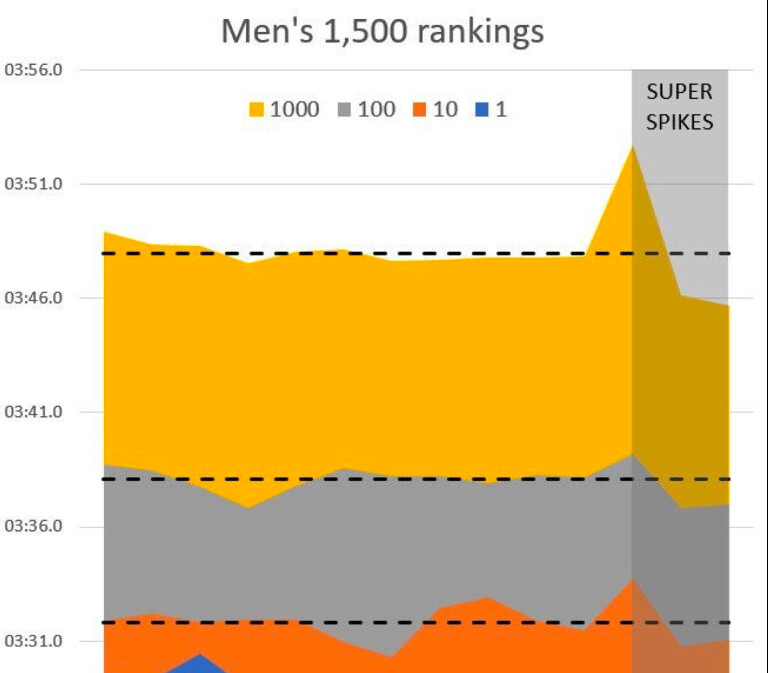
It was a great night—but it was just one of many great nights that track fans have been treated to recently. A week later, at the historic Bislett Games in Oslo, eight men broke 3:30 for 1,500 meters in one race, setting a new record—including Yared Nuguse, who set a new U.S. best. Meet records fell in almost every event. At the collegiate level, an analysis by Oregon-based coach Peter Thompson shows that the number of middle- and long-distance runners hitting elite benchmark times has doubled, tripled, or in some events even quadrupled in the last two years. Earlier in June, four high-school boys broke four minutes for the mile in a single race, matching the total number of people who’d done it in history prior to 2011.
I could go on.
There are two main questions that arise from this buffet of speed. First, is it real? Are runners getting faster across the board, or are we just being fooled by the brilliance of a few individuals and random fluctuations in the depth of different events? Second, if it’s really happening, then why? The easy answer is, “It’s gotta be the shoes” (or, in this case, the super spikes), but does the data really back that up?
I don’t have any definitive answers at this point, but here are my thoughts on some of the possible explanations.
It’s easy to make an anecdotal case that runners are faster than ever. Backing that up with data isn’t quite as straightforward. If you look only at whether the top-ranked time in the world is getting faster or slower from year to year, any trends will depend on whether you happen to have a generational athlete in the event at a given point in time. The effect of an Usain Bolt is bigger than the effect of, say, a new shoe design. Even if you go deeper, the top ten times in any year often come from just one or two races that took place in exceptionally good conditions. So you’re better off looking farther down the list.
For example, here’s some data for the men’s 1,500 meters between 2009 and 2022, drawn from the World Athletics database. I’ve shown the first, tenth, 100th, and 1,000th ranked performers (not performances) for each year. The horizontal dashed lines show the average for 2009 to 2018. The first super spike prototypes had shown up on the circuit by 2019 at latest, and were widely available by 2021. The big spike of slower times in 2020 is because there were so few races due to the pandemic.
The number-one times don’t show any particular trend. The tenth-best times show a dip since 2021, but no bigger than the dip in 2014-2015 (which corresponded to two particularly fast races in Monaco). For the 100th and 1,000th best times, the pre-pandemic data finally starts to look more consistent, which makes the dip since 2021 more telling. The 1,000th-best performer is now 0.9 percent faster than the pre-pandemic average, and the 100th-best is 0.5 percent faster. This is smaller than the 1.3-percent estimate derived from lab testing of super spikes, but in the ballpark.
Here’s comparable data for the women’s 5,000 meters:
Again, the first- and tenth-ranked times fluctuate too much to draw any conclusions. The 100th and 1,000th places do show an apparent drop in the last few years, by 1.9 and 2.0 percent respectively—more than the lab estimate. There are lots of possible explanations for this discrepancy, including that the benefits of super spikes are reduced at faster speeds.
I’ll add one more graph just for context. Supershoes came to road running way back in 2016 (for prototypes) and became widely available by 2018. I think most observers agree that these shoes really have affected road-running times. So what does the comparable data show for, say, men’s marathon times? Here it is:
The data is confounded by the effects of the pandemic, particularly in 2020. Still, the post-supershoe improvement looks fairly similar to the track data. Compared to the 2009 to 2016 average, last year’s times were 0.7 percent faster at tenth, 1.6 percent faster at 100th, and 1.3 percent faster at 1,000th.
The conclusion I take from all this data? It does like there’s something going on, both on the track and on the roads. But it’s way less obvious in the data than I expected. My subjective feeling was that the last few years have seen records broken and times redefined at a totally unprecedented rate. I thought I’d see robust improvement of at least three or four percent. But that scale of change is not there, at least in the events I sampled.
So with that in mind, what explains the changes we do see?
My starting assumption is that any performance improvements we’ve seen in the last few years are because of the shoes. I’m not going to belabor that point here, because I’ve already written plenty on both road supershoes and super spikes.
But I do want to make one key point. The reason my prime suspect is the shoes is that we have direct laboratory evidence that both types of shoes improve running economy, by around 2 percent on the track and at least 4 percent on the roads (and, to complete the circle, lab evidence that improved running economy directly translates to faster race times). It would take some weird and hitherto undiscovered science in order for the shoes not to make us faster. In contrast, the other hypotheses that I’m going to discuss below may be compelling to various degrees, but all rely on some assumptions and guesses and hand-waving.
Here’s a sentence you wouldn’t have read prior to 2018, from Letsrun’s description of Kipyegon’s thrilling 1,500 world record in Florence: “Kipyegon sprinted away from the pacing lights with 200m to go, lengthening her gap from the green lights as she rounded the turn and entered the home straightaway.” I wrote about World Athletics’s introduction of Wavelight pacing lights when Joshua Cheptegei set the 5,000-meter world record in 2020, positing that more even splits could make a notable difference to times. Good pacing has been a hallmark of this year’s records too, all assisted by Wavelight.
Wavelight doesn’t factor in on the roads, but ever since Eliud Kipchoge’s sub-two marathon exhibitions, big-time marathons have devoted more attention to providing top-notch pacers for their elite runners. That has the double benefit of saving the mental effort of setting the pace, and of reducing air resistance. I think good pacing and drafting are both beneficial. But that can’t explain why the 100th and 1,000th performers seem to be getting faster, because Wavelight and paid rabbits are generally reserved for the front of the pack.
Freed from the tyranny of over-frequent racing during lockdowns, runners spent 2020 building up a massive base of endurance that has catapulted them to new levels. It’s even possible that, having learned their lesson, they’ll continue with this more patient approach to training. This theory has the disadvantage of being both unprovable and unfalsifiable. That doesn’t necessarily mean it’s untrue, but if performance levels don’t start regressing to their pre-pandemic means over the next few years, I’ll remain skeptical.
It’s the “big, sexy thing” in endurance training these days, as miler Hobbs Kessler put it in a recent interview: lactate-guided double-threshold training, as popularized by Norwegian Olympic champions Jakob Ingebrigtsen and Kristian Blummenfelt. As I explained in this article, the approach emphasizes high volumes of threshold training with very tight control on the intensity to avoid going too hard. Whether it’s objectively better than other training approaches remains to be seen—but it hasn’t yet been adopted widely enough to make a noticeable impact on the top-1,000 list.
In the past, when I’ve looked at broad trends in performance over time, one of the first factors I’ve considered is changes in drug availability or drug testing. It’s extremely noticeable (though of course not proof of anything) that long-distance track times took off like a rocket shortly after the introduction of EPO in the early 1990s. If you look carefully, you can find what seems to be the performance signature of various drug-related events like the introduction of EPO testing and, more recently, the implementation of athlete biological passports.
Is there something new on the scene over the last few years? Or are we still seeing the effects of pandemic-related disruptions in out-of-competition drug testing? I certainly hope it’s not the case, but you’d have to be amnesiac to discount the possibility entirely. Once again, the best counterargument is that the performance improvements are noticeable even at the 1,000th-best level—though perhaps I’m being naive.
As you can probably tell, I don’t think any of the alternative explanations I’ve offered so far hold water compared to my default assumption that it’s the shoes. But this last category is a little different. If you spend enough time arguing with people about why runners are getting faster, you’ll encounter a number of broad, hand-waving theories that are hard to substantiate but nonetheless sound reasonable.
For example, I can attest to the fact that the Internet has made training knowledge far more widely accessible than it was when I was a young athlete in the 1990s. Ideas and approaches (like the Norwegian model) are endlessly debated and dissected, and any student of the sport is exposed to multiple perspectives. (In contrast, when I arrived at university and found that the workouts were different from those I’d done in high school, I thought the world was ending.) This theory has been offered frequently over the last decade or more as an explanation for steadily improving U.S. high school times. Maybe it’s true more broadly: people everywhere simply know more about the principles of training, and are doing it better (or at least fewer people are doing really stupid training) compared to the past. Even if elite coaching was always pretty good, this creates a wider pyramid of prospective talent feeding into the elite coaches.
I also have the sense that the pendulum has swung away from sit-and-kick racing towards aggressive front-running. After the 2019 world championships, where super spikes first made headlines, I wrote an article about the unusually fast early paces of the races. Jakob Ingebrigtsen, the current king of the 1,500, is notable for running from the front and pushing the pace rather than relying on a finishing sprint—which likely helps explain why he led those seven other men under 3:30 in Oslo. If runners these days are more focused on running fast times rather than trying to win sprint finishes, it stands to reason that times would get faster overall.
And there are plenty of other theories out there—broader support for professional training groups, better nutrition and recovery, the inevitable march of progress, and some that I’ve undoubtedly missed completely. As I said at the top, I don’t know the answers, and I don’t think anyone else does either. Times do seem to be improving, but not as much as I would have guessed based on all the hype about recent record-breaking. The shoes almost certainly play some role—but if there’s some other secret sauce in there, it’ll be fun trying to figure out what it is.
(07/01/2023) ⚡AMPby Outside Online
Five Secrets to Recover faster and better
Balancing training intensity, rest, and nutrition can help your body bounce back faster, reduce soreness, and improve overall performance
Whether you’re a seasoned athlete or fitness enthusiast, recovery after exercise is just as important as your training. Optimizing recovery helps you minimize injuries and train at your highest level—and enjoy being active even more. Yes, rest and sleep contribute to recovery, but what you consume post-workout also has a huge impact. Set yourself up for your best training season yet with these tips for fast and effective recovery.
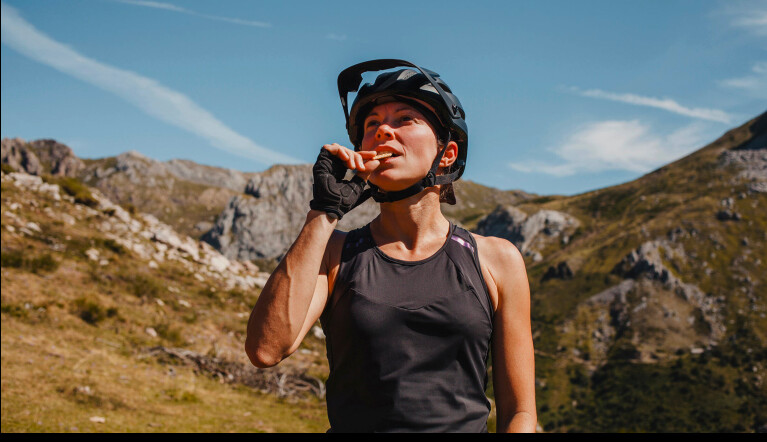
Protein gets a lot of attention when it comes to recovery—and for good reason. When we exercise, our muscles experience minor tears and damage, which triggers a process of repair and growth known as muscle protein synthesis. Consuming protein after exercise provides the necessary building blocks (amino acids) to repair and rebuild damaged muscle tissue.
Aim for 20 to 30 grams of protein within 30 minutes to an hour after exercise to maximize muscle protein synthesis and prime your muscles for the next training session. For a quick way to guarantee you hit your protein quota, add protein powders like NOW® Sports Whey or Pea Protein to a smoothie or shake. Josh Kerr, Olympic bronze medalist in the 1,500-meter event at the 2020 Tokyo Games, explains, “The protein powder I like most from NOW® Sports is the Organic Unflavored Whey Protein. It’s so clean, it’s Informed Sport certified, and I use it every day. It’s fantastic for post-workout. It gets me that boost of protein I need.”
Amino acids like leucine are what’s known as “anabolic triggers” that stimulate muscle growth. When the body breaks down leucine, it creates a naturally occurring compound called β-Hydroxy β-Methylbutyrate (HMB). Health and exercise scientists have studied HMB extensively for its potential benefits in optimizing muscle repair and growth after training.*
Leucine is one of the essential amino acids, meaning our bodies can’t produce it naturally. Instead, we rely on food to obtain this crucial nutrient. Meat, fish, soy, and dairy products are particularly high in leucine. But depending on your diet, eating enough leucine-rich foods to support HMB production can be difficult. Supplement your diet with NOW® Sports HMB Powder, Veg Capsules, or Tablets after every workout to reap the recovery benefits of HMB.*
Eating carbohydrates—before and after exercise—is critical for replenishing glycogen stores in the muscles and liver. During exercise, the body uses glycogen (the storage form of carbohydrates) as a source of energy. When glycogen levels are depleted, the body will then use protein for fuel, leading to muscle breakdown. Consuming carbohydrates after exercise restores glycogen levels, which in turn increases your body’s ability to use and store glycogen. Over time, more glycogen storage means more endurance for runs, bike rides, lifting sessions, and more. Kerr explains, “Carbs are very important, as is the timing of when you consume the carbs. For me, I do big/long workouts Tuesday, Friday, and Sunday, so Monday, Thursday, and Saturday are my big carbing-up days.”
Additionally, carbohydrates help muscles take up more amino acids to repair the damage from exercise. Choose post-workout snacks with a 3:1 ratio of carbohydrates to proteins to enhance muscle repair and improve overall performance.
Great training days aren’t great unless you’re getting high-quality sleep. During sleep, the body releases growth hormone, which helps repair and rebuild muscle tissue damaged during exercise. Additionally, sleep is necessary for the body to produce new muscle cells and maintain a healthy immune system. Inadequate sleep can lead to increased levels of the stress hormone cortisol, which can impair healing and hinder athletic performance. Kerr explains the impact of sleep on his training regimen: “I enjoy getting up early, which means I like to get to bed early. I’m the most motivated in the morning, so I like getting my training in early. Sleep is just so crucial for recovery.”
NOW® Sports R&R Rest and Repair promotes restful sleep and may help prevent burnout from high-intensity training.* The supplement is made with clinically tested CherryPURE® Tart Cherry powder, which can reduce muscle soreness associated with intense exercise, 5-HTP, and melatonin.*
As athletes push the boundaries of what the body is capable of, health and exercise science professionals continue to refine best practices for training and recovery. The NOW Sports Hub offers a community of top nutrition experts, trainers, and pro athletes, curating all the intel you need—from the proven benefits of science-backed ingredients and the latest supplement regulations to professional workouts and nutrition tips. Kerr explains how nutrition fits into his overall training: “For me, it’s about being able to show up day in and day out and having the right fuel. I am pounding 70 to 75 miles per week, and I must replenish as much as I can. Getting the right clean foods and the right clean supplements makes such a difference in what I’m doing. Without it, I don’t think I could be putting in the days I am right now.”
NOW® Sports Recovery Shake
Incorporate these five tips into the perfect post-workout recovery shake with a recipe by registered sports dietitian Lauren MacLeod.
Add all ingredients into a blender. Blend until smooth. Makes a single serving.
At NOW® Sports, we’re all about natural, unadulterated sports nutrition supplements that legitimately enhance performance. NOW® Sports products are certified by Informed Sport, the world’s leading anti-doping organization, so you can trust that our products are pure, safe, and effective for every level of athletics.
*These statements have not been evaluated by the Food and Drug Administration. These products are not intended to diagnose, treat, cure or prevent any disease.
(07/01/2023) ⚡AMPby Outside Online
How to Make a Homemade Gel Ice Pack
Plus, what to keep in mind as you ice that sore muscleRest, recover, and ice, ice, ice. If you’ve been injured, you’re likely familiar with this phrase. And like your plan to heal, icing is individual to you. While other members of your training group may prefer a bag of ice or frozen peas, you may gravitate toward the feel of a gel ice pack.
Instead of shelling out money on Amazon, you can make your own gel ice pack at home. However, icing an injury or ache is a bit more complicated than slapping a bag on your leg. Here’s what to keep in mind.

Icing is individual to you—and is something that should be discussed with and cleared by a medical professional, says Jen Caudle, DO, associate professor of family medicine at Rowan University in New Jersey. For example, if you have poor blood flow to certain areas of your body or nerve damage, there are certain risks. Depending on your injury and preference, there will be a particular cooling source that works best for you, Caudle says, whether a gel ice pack or a bag of frozen peas.
You’ll also want to find something to wrap around the pack. “It’s important to cover up ice packs with a towel,” Caudle says. “That sort of removes the extreme cold, which can actually damage skin and tissues.”
Timing is also critical. Leaving an ice pack on for more than the sanctioned amount of time can potentially create more problems than solutions, Caudle says. She recommends, for most people, to leave an ice pack on for no longer than 15 to 20 minutes.
Here, Caudle breaks down how to construct your own gel ice—using just four different items you likely already have lying around the house.
What you need: Rubbing alcohol (with a concentration of at least 70 percent isopropyl alcohol), water, a measuring cup, a resealable plastic bag
1. Pour ⅓ cup of rubbing alcohol and ⅔ cup of water into a plastic bag. If you want to create a larger ice pack, double or triple the amounts. The ratio should always remain two parts water to every one part rubbing alcohol.2. Squeeze out any air, seal the bag tightly, and mix the rubbing alcohol and water.3. Place your bag in the freezer for a few hours. It should feel like a gel substance when you remove it.4. Use your gel ice pack on sore muscles and joints. Return it to the freezer after you’ve finished icing.
(07/01/2023) ⚡AMPby Outside Online
How Running Can Help You Effectively Lose Weight
Weight loss is a major topic around the globe; with summer just around the corner, many people are hoping to get beach ready in a short space of time.
You can speed up your weight loss by taking up a particular sport: running. Though walking can help burn calories, a study revealed that runners can achieve 90% greater weight loss per energy expanded when they’re running. As such, people who want to achieve quick weight loss can benefit from running compared to walking regularly.
There are many reasons why running can help you lose excess weight in a fast manner. To illustrate, here are a few reasons why running can help you achieve your desired weight:
Running can complement the effects of your weight loss diet
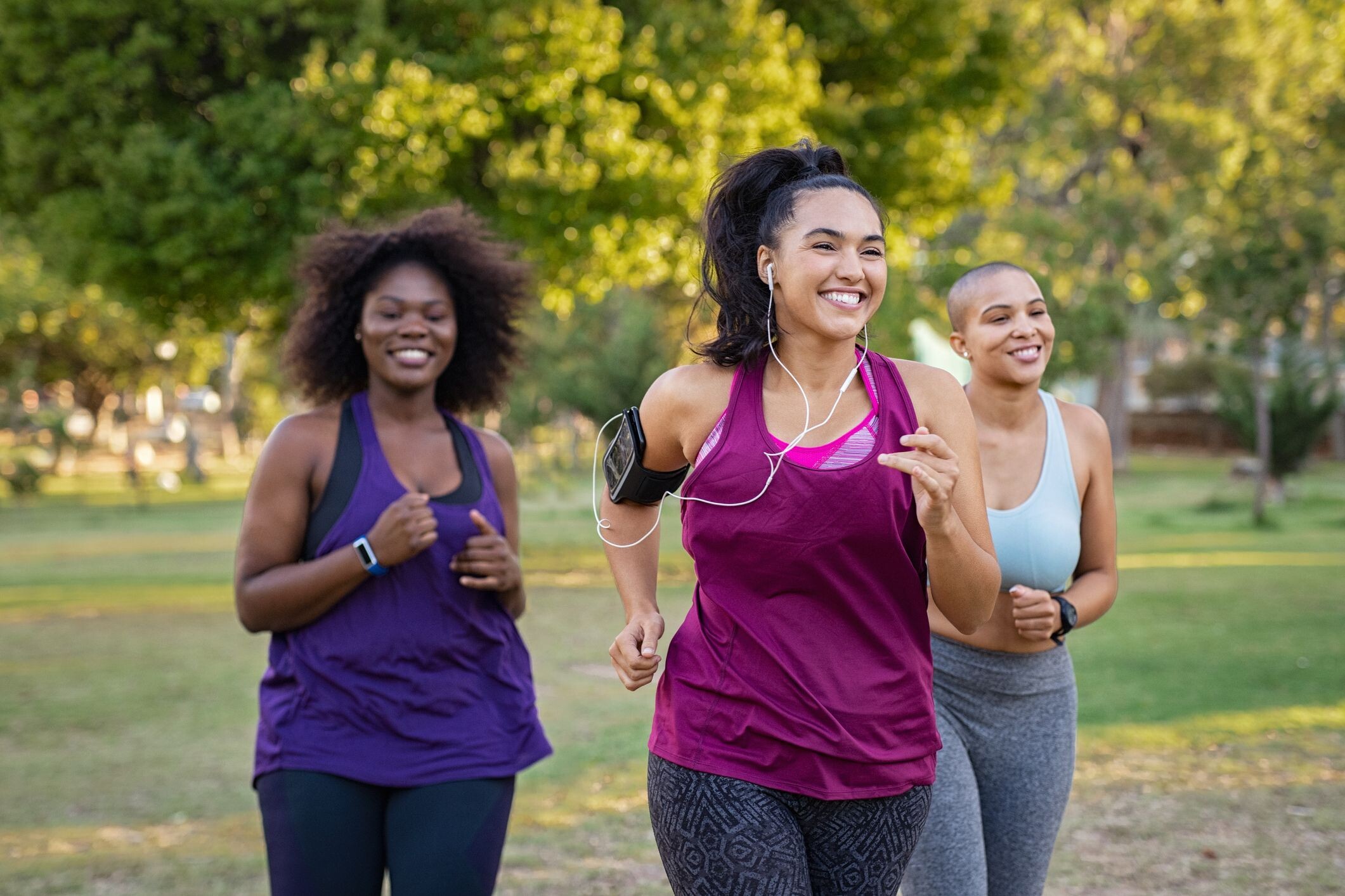
As previously mentioned, running is a physical activity that can burn calories quickly. Due to this effect, dietitians consider it as a good strategy to combine with a healthy weight-loss diet.
Registered dietitian Natalie Rizzo explains that running is a good workout to include in a weight loss routine because it burns excess calories in your body. However, Rizzo emphasized that your running routine must go hand-in-hand with good nutrition because the food that you eat causes excess calories in the first place. Thus, you need to combine exercises like running with a proper diet to be able to minimize your calorie intake and make it easier to burn all the excess calories.
You can switch up your routine to burn calories more effectively
There are various types of running routines that you could do to lose weight. So if you want to burn more calories, you can simply adjust your routine now and then to increase the effects of your workout. In fact, running coach Chris Coggins explains that you should be running fast and running far to maximize the amount of weight that you’re losing. Switching up your routine is crucial because high-intensity runs can torch your calories better and give you that after-burn effect, while slower runs over long distances can target your fat better. Coggins suggests switching between the two approaches to reap both effects and avoid any plateaus from the routine.
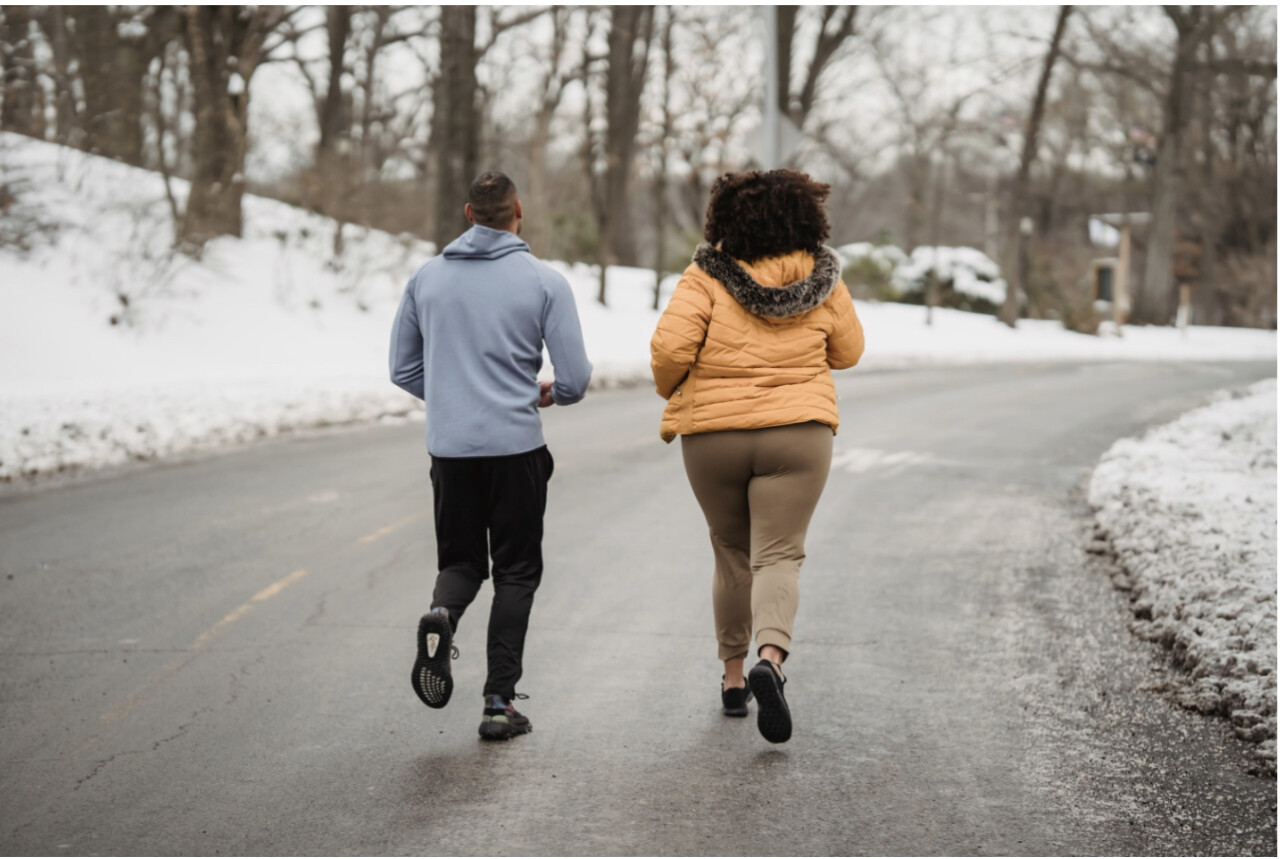
Your running goals can serve as motivators for weight loss
It’s very common for people to lose their motivation for weight loss over time. Unfortunately, it’s easy for motivation to wane, especially if you are only focusing on weight loss as your sole goal. As such, it’s important to boost your motivation for weight loss by setting goals that are related to an activity that makes you want to get out there and move. Research shows that people are more likely to stick to a fitness routine if they’re motivated by internal rewards, which is why it’s crucial to set goals that are related to your running routine. To illustrate, you can focus on aiming for certain distance goals or prepare for a specific race to motivate yourself to run every day and lose weight in the process.
Serious runners are more likely to adopt healthy behaviors
There are more benefits that you can reap from setting running-related goals. These goals may encourage you to pick up healthier lifestyle habits, which can further contribute to your weight loss. Often people who fall in love with a running practice end up adopting healthy behaviors that can help them improve their fitness performance. To illustrate, they may start sleeping more to have more time for morning runs or load up on nutrient-rich foods to get more energy for their routine. Though these healthy habits are mostly for one’s running practice, they can improve your health and lower your weight in the process.
Running can help you lose weight, especially if you do the practice right. As such, you need to learn more about the practice to be able to burn any excess calories more effectively.
Keira D’Amato Sets American Record in the Half Marathon
Keira D’Amato averaged 5:05 per mile pace and broke the American record set by Emily Sisson by 13 seconds.
Once she finally got to Australia, all the stars aligned for Keira D’Amato.

On July 1, she ran the Gold Coast Half Marathon in 1:06:39 and broke Emily Sisson’s American record by 13 seconds.
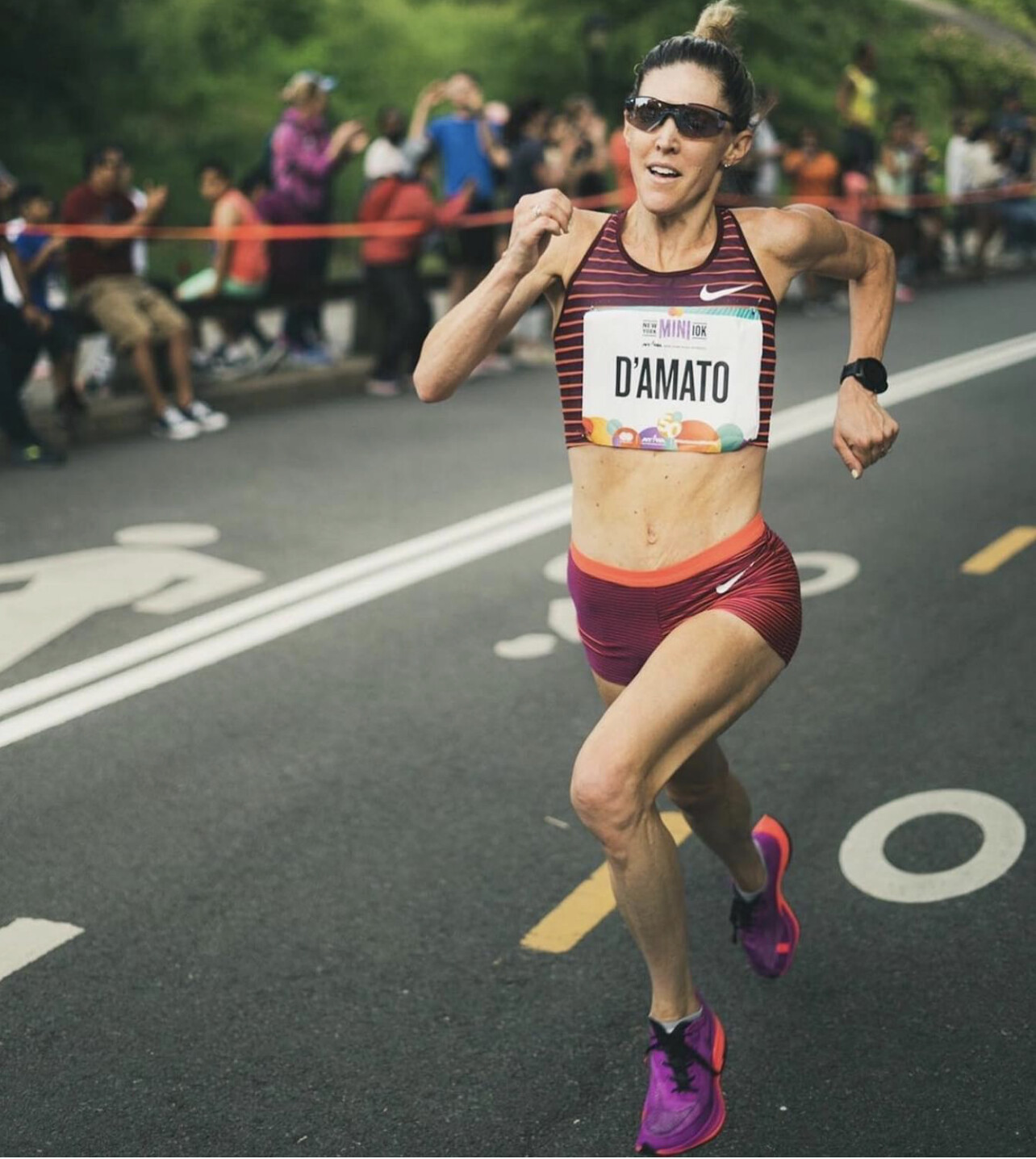
In perfect conditions—temperatures were 50 degrees with just a touch of wind from the west—D’Amato, 38, ran behind a pacesetter on the flat course and averaged 5:05 per mile.
Getting to Oz, however, was full of travel challenges. D’Amato’s flight from her home in Virginia on Sunday was delayed and then canceled. The same happened on Monday. When she finally made it to Los Angeles, she missed her connection, had to spend the night (and do a track workout in there, according to her Instagram).
Once in Australia, D’Amato soaked up the cheers from the local fans.
“The crowds were amazing,” she said in a post-race interview on the race broadcast on YouTube. “Being from another country, hearing my name all over course, it made me feel so powerful today.”
Meanwhile, the back-and-forth duel between Sisson and D’Amato over American records continues.
D’Amato held the American record in the marathon from January 16, 2022, until October 9, 2022, when it was broken by Sisson.
Sisson held the American record in the half marathon from May 7, 2022—until D’Amato broke it.
Emily Sisson posted on Twitter;
Congrats @KeiraDAmato on breaking the U.S. women’s half marathon record today! It’s awesome to be a part of this era of U.S. women’s distance running where records are continuously improving. Especially impressive considering your travel—enjoy the moment Keira.
D’Amato’s next marathon will be at the World Championships in August in Budapest, Hungary.
She makes it clear with every interview that she’s enjoying her return to elite running after 10 years off and having two kids.
“I think when I first came back into running, it was for me,” she said during the post-race interview. “Somewhere along the way, it turned into a we. Doing this for all of us that think, ‘We’re too busy’ or ‘We’re too old.’ Or too whatnot. Feeling people cheer for me, I felt like they were part of my journey.”
(06/30/2023) ⚡AMPby Runner’s World
On the track or the road, this workout will help you build strength and speed
If you’ve got an interval session coming up in your training plan, consider trying this descending ladder workout. Starting with 600m repeats to build strength and working your way down to 200s to work on your speed, it’ll help put you on track to achieve your next personal best in a variety of short and mid-distance races.
The workout itself is quite simple–the number of reps in each set increases as the intervals get longer, and you get a slightly longer rest between sets to reset before moving on to the next distance. As the intervals get shorter, the goal is to increase your speed, so aim to run the 600s at your current 5K race pace, the 400s at your 5K goal pace or a bit faster, and the 200s as fast as you can go (800m to 1,500m pace).
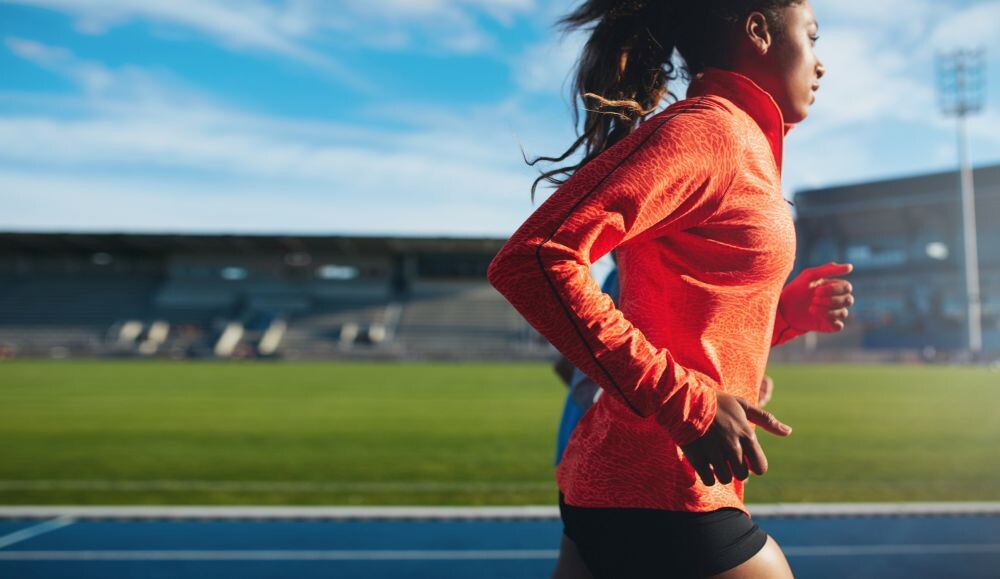
Don’t have a track nearby? Don’t worry–we’ve included a road option as well. Just make sure when you’re on the road that you’re paying attention to pace and cranking up the speed as the intervals get shorter.
The workout
Warmup: 15-20 minute easy jog, followed by form drills and strides
Workout: 600m/1 min rest/600m/2 min rest//400m/1min rest/400 m/1 min rest/400m/2 min rest//200m/1 min rest/200m/1 min rest/200m/1 min rest/ 200m
Road workout: 3 min/1 min rest/3 min/2 min rest//2 min/1 min rest/2 min/1 min rest/2 min/2 min rest//45 sec/1 min rest/45 sec/1 min rest/45 sec/1 min rest/45 sec
Cooldown: 10-15 minute easy jog followed by light stretching and mobility
(06/30/2023) ⚡AMPby BRITTANY HAMBLETON (Running Magazine)
2023 US Outdoor Track and Field Championships preview from Chris Chavez
Last night was the deadline for athletes to declare their event for the 2023 U.S. Outdoor Track and Field Championships, which will take place in Eugene from July 6-9. At USAs, athletes are allowed to enter multiple events and then make a decision about which event(s) they wish to contest once entries are in, which allows those who’ve achieved multiple qualifiers to be strategic about where they want to concentrate their efforts. The top three in each event who meet the qualifying standards for the World Athletics Championships will go on to represent the United States in Budapest in August.
Reigning World champions have a “bye” to the next year’s Worlds, which means the country they represent gets to send four athletes, not three. Similarly, reigning Diamond League and World Athletics Continental Tour champs earn a bye, but if there is both a World and other champion in the same event, their country still only gets to send one extra athlete.
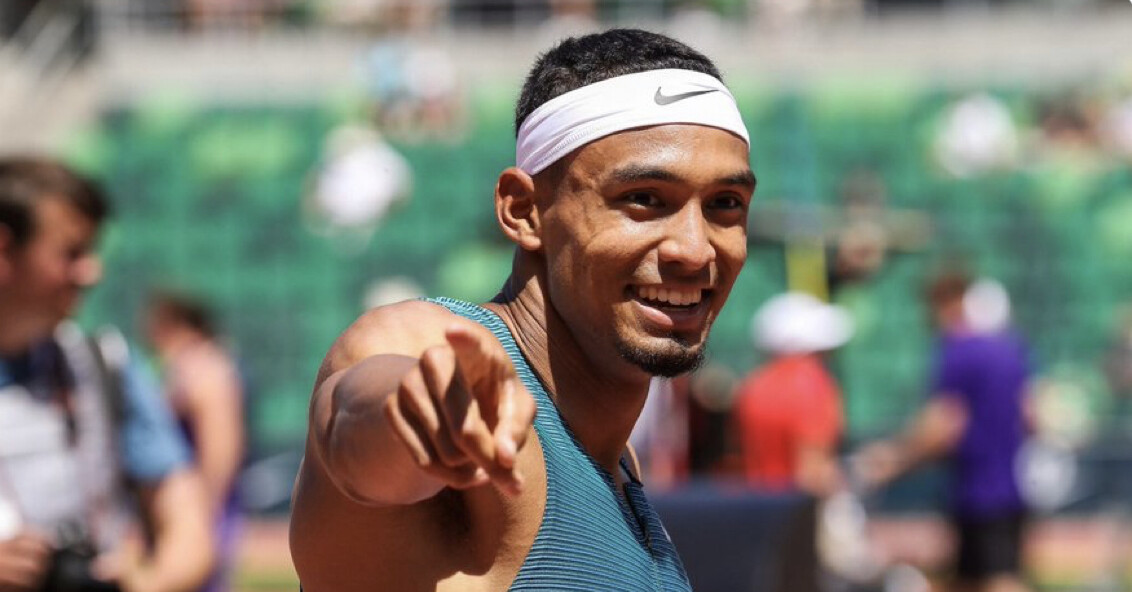
These complex rules lead many American World champions to make interesting choices about what events they wish to contest at USAs and how hard they want to push while still in the middle of the championship season.
MEN’S SPRINTS
– 100m world champion Fred Kerley has the bye to the world championships and will only run the 200m. Last year, he qualified for the World Championships in the 200m with a third place finish behind Noah Lyles and Erriyon Knighton. He injured his quad in the semifinal of the 200m and was unable to run the 4x100m relay for Team USA. Kerley has a season’s best of 19.92 from his win at the Doha Diamond League.
– 200m world champion Noah Lyles has the bye to the world championships and will only run the 100m. He ran a season's best of 9.95 in his outdoor opener in April. The last time he ran the 100m at a U.S. Championship, he finished seventh at the 2021 U.S. Olympic Trials final.
– 400m world champion Michael Norman is declared for the 100m and 200m at the U.S. Championships. He ran a wind-aided 10.02 (+3.0m/s wind) at the Mt. SAC Relays in April. He has not raced since a last place finish in the 200m at the Doha Diamond League in 20.65 on May 5.
WOMEN’S SPRINTS
– Sha’Carri Richardson is running the 100m and 200m. She is looking to qualify for her first World championship team. Her season’s best of 10.76 from her victory at the Doha Diamond League is the second-fastest performance in the world this year. Her season’s best of 22.07 from the Kip Keino Classic at altitude in Nairobi is No. 4 on the world list.
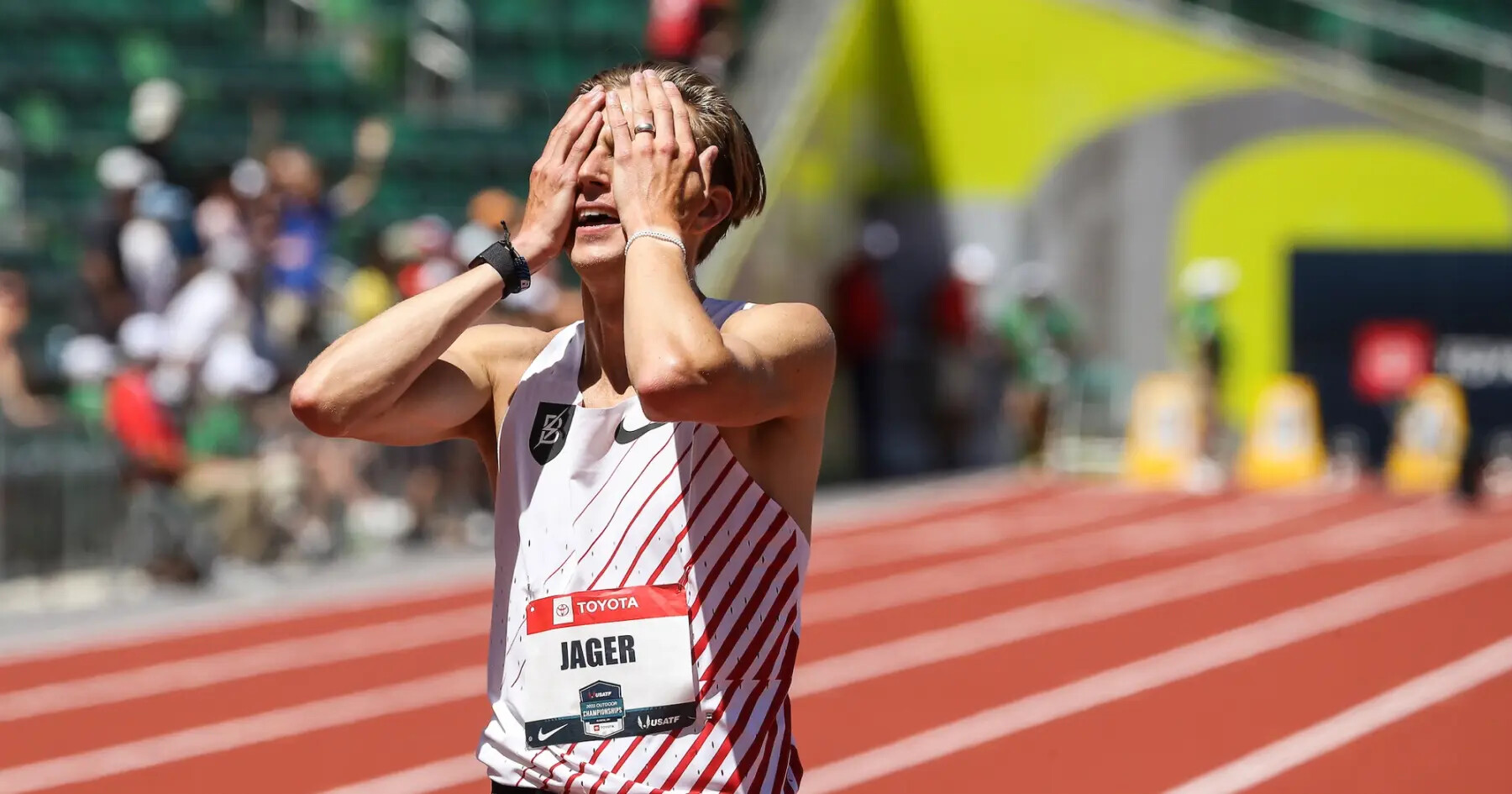
Only Gabby Thomas’ 22.05 from the Paris Diamond League is faster this year by an American woman. Richardson, the 2019 NCAA champion, attempted the double at USAs in both 2019 and 2022, where her highest finish was 8th in the 100m in 2019. She has yet to make a U.S. final in the 200m.
– Reigning U.S. champion Abby Steiner is only running the 200m despite qualifying in both the 100m and the 400m as well. She just ran her season’s best of 22.19 to win the NYC Grand Prix.
– As previously announced, 400m hurdles Olympic champion, World champion and world record holder Sydney McLaughlin-Levrone is running the flat 400m. She plans to make a decision after the U.S. Championships whether she will run the flat 400m (if she qualifies) or defend her 400m hurdles title in Budapest.
– NCAA record holder Britton Wilson, who ran 49.14 to become No. 4 on the U.S. all-time list, will only run the 400m and not the 400m hurdles. She hurdled at last year’s World championships and participated in the 4x400m relay.
MEN’S DISTANCE
– This year’s men’s steeplechase team should have a new look. 2016 Olympic silver medalist Evan Jager is not entered in the steeplechase. He has raced just once this outdoor season. Hillary Bor, the reigning U.S. champion who also owns the fastest steeplechase time by an American this year in 8:11.28, broke his foot earlier this spring and will miss the U.S. Championships. This is the first U.S. team he has missed since 2015. The top returner is Benard Keter, who made the Olympic team in 2021 and the World team in 2022, but he is only the fifth-fastest entrant by seed time.
– For the first time, 2021 U.S. 5000m champPaul Chelimo is entered in both the 5000m and the 10,000m. Chelimo, the 3x global medalist at 5000m, has typically only focused on the shorter event, but after his 27:12.73 performance at the Night of the 10,000m PBs in the U.K. earlier this season, he has decided to contest both events. He’s seeded No. 4 by qualifying time in both events behind Grant Fisher, Woody Kincaid, and Joe Klecker (all also double-entered).
WOMEN’S DISTANCE
– 800m Olympic and world champion Athing Mu entered the 1500m, as previously announced with coach Bobby Kersee. She has the bye to the world championships in the 800m. Her personal best of 4:16.06 is well outside the automatic standard of 4:05.00 and was achieved outside the qualifying window for the championships, but USATF rules allow for significant discretion in accepting entries from the Sports Committee chair.
– Josette Norris and On Athletics Club coach Dathan Ritzenhein have decided to focus solely on the 5000m. Norris ran 14:43.36 at Sound Running’s Track Fest in early May. That’s the second-fastest time by an American woman on the year behind her teammate and training partner Alicia Monson’s 14:34.88 at the Paris Diamond League. Monson is entered in both the 5000m and 10,000m after choosing to only contest the 10,000m last year.
– NC State’s NCAA record holder Katelyn Tuohy will only run the 5000m. Tuohy qualified for NCAAs in both the 1500m and the 5000m but ended up only running the 1500m after an uncharacteristically disappointing performance in the final.
– The Bowerman Track Club’s Elise Cranny has declared for the 1500m, 5000m and the 10,000m. The first round of the women’s 1500m is 19 minutes before the final of the 10,000m on Day 1 of the competition, so Cranny will likely scratch one or more events at a later point.
(06/30/2023) ⚡AMP
by Chris Chavez (Citius magazine)
USATF Outdoor Championships
With an eye toward continuing the historic athletic success of 2022, USATF is pleased to announce competitive opportunities for its athletes to secure qualifying marks and prize money, including a new Grand Prix series, as they prepare for the 2023 World Athletics Championships in Budapest, Hungary.As announced a few months ago, the 2023 Indoor Championships in Nanjing, China have been...
more...When you consistently stress the body and the mind, you are changing your chemical makeup. Here’s what the latest science tells us about burnout
Kieran Abbotts is a PhD student at the University of Oregon, studying human physiology. He earned his master’s degree in Metabolism and Exercise Physiology at Colorado State University. The lab where he now works studies exercise and environment and stressors on physiology. In other words, he’s an expert on how the chemicals in the body work during exercise, and what happens when things get out of whack.
“Essentially, there are two kinds of training. There’s functional overreaching, which means you stress the body with hard workouts and long runs. Then you provide adequate time to recover, and you induce adaptations,” Abbotts said. This kind of training is ideal—your body is getting stronger. “You want to be functionally overreaching as an elite athlete—so that you’re making progress and becoming a better runner, but also giving yourself adequate recovery.”
And then there’s non-functional overreaching, which can feel the same to many athletes, but it’s very different. “With non-functional overreaching you’re essentially doing the same thing—big workouts, stressing the body—but not giving yourself enough time to recover. And so you start doing damage.” That damage might take a long time to show itself, Abbots said, but it eventually will.
This might be the most important thing to know about being an athlete at any level. Non-functional overreaching is exactly the same as very healthy training, except without enough rest. And rest is different for everyone, which makes it exceptionally easy to slip from functional overreaching into damaging non-functional overreaching without realizing it. Without adequate rest, the body begins to break down instead of build stronger.
Stress Is Stress

Professional ultrarunner Cat Bradley, 31, living in Hawaii, has experienced fatigue and burnout in various forms, including just after she won Western States in 2017.
Winning a big race is great, but it also means all eyes are on you—the pressure is high to stay on top. “After winning Western States, I took a month off, but I was still running at a high level. And for lack of a better term, I felt like I had a gun to my back,” Bradley said. “I wanted Western States so badly, and after I won, so many things happened and I never shook that gun-to-the-back feeling. After a while, it led to burnout. I had to take a mental break.”
For many athletes, finding success can be the stress that makes non-functional overreaching feel necessary. How can you take an extended break when you’re winning and signing new sponsor contracts?
A second version of burnout for Bradley came when she went through an especially stressful situation outside of running. She was dealing with such extreme daily emotional stress in her personal life that everything else was affected, including running and training. When the body is enduring stress, it doesn’t know (or care) what the cause is. We can’t put our life into silos. If there’s stress in one’s life, everything else needs to be adjusted. It doesn’t matter if that stress is “just work” or illness, or relationships.
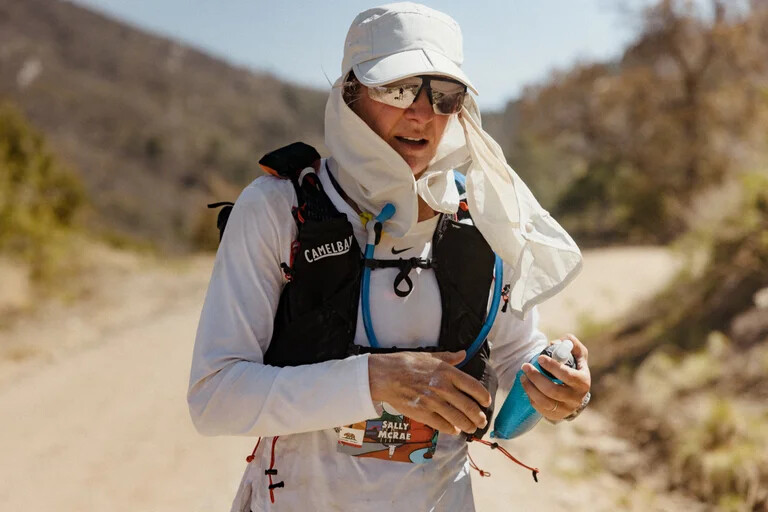
When you’re overtraining or chronically overstressed, your body is creating higher levels of “catecholamines,” hormones released by your adrenal glands during times of stress like epinephrine, norepinephrine, or adrenaline. “Having those chronically high levels of overstimulation and not enough recovery, you wind up with a desensitization,” Abbotts said. “Overstimulation also causes decreased levels of plasma cortisol. Cortisol is the stress hormone, and it plays a very important role in your physiology.”
When you’re exercising or stressing the body, cortisol will go up, to help the body deal with the stress. But if you’re constantly requiring lots of cortisol, your body will eventually down-regulate. It will adapt and then you’ll have low levels of cortisol. This means trouble dealing with physical and mental stress.
In February, Bradley experienced her most recent version of burnout, and it happened mid-race. Bradley was running the Tarawera 100-miler in New Zealand. Besides training for such a big race, she was also working full-time and planning and preparing for her wedding, which was just days after the race. On top of everything, travel to the event was incredibly stressful.
“I was in fourth place, I could see third, and at mile 85, I passed out and hit my head on a rock,” Bradley said. “We can talk about the reasons that I fainted, but I really think my brain just shut down—it was too much.”
For Bradley, reaching burnout has a lot more to do with outside stressors than the actual running. But now she’s aware of that—she continues to work on not reaching the “gun-to-the-back” feeling. The need to please others. The fear of losing fitness in order to take care of her body. It’s an ongoing process, but an important one.
Overdoing Is the American Way
Professional ultrarunner Sally McRae said, based on her observations, Americans are really bad at taking time off. “I’ve traveled the world and Americans are really bad at resting,” she said. “It’s part of our work system. You go anywhere in Europe and everyone takes a month-long holiday. You have a kid and you take a year off. We’re not conditioned like that in America. It’s like you get one week and then after you work a decade, you get two weeks of vacation.”
For McRae, avoiding burnout and overtraining has a lot to do with creating a life that’s sustainable. She started working when she was 15-years-old, so she realized earlier than most that life couldn’t just be working as hard as possible to count down to retirement.
“Perspective is massive when it comes to burnout. My goal every year is to find the wonder and the beauty and the joy in what I do. Because it’s my job, but it’s also my life,” McRae said. “And I really believe we’re supposed to rest—it should be a normal part of our life. Whether that’s taking a vacation or taking an off-season. I take a two-month offseason and I have for a long time.”
One of the most important parts about rest and not overstressing the body is that everyone is different. An overstressed body can lead to hormonal imbalances, which in turn affects everything.
“When you’re overtraining, you tend to get mood changes and have trouble sleeping,” Abbotts said. “Two of the big things that stand out are, you’re exhausted but you can’t sleep. And the other is irritability—mood swings, and depression.” When you get to the point that you’ve overstressed your body for so long that the chemicals are changing, pretty much everything starts falling apart.
And even though everyone is different, you’d never know that from looking at social media. “I know social media makes it seem like ultrarunners are running 40 miles a day, doing a 100-mile race every other weekend,” McRae said. “And that’s insane. You’ve got to be in touch with yourself. It’s very different to wake up and feel sore or tired, but if you wake up and feel like you have no joy in the thing you’re doing, you need a real break from it.”
How Can the Running Community Do Better?
Elite ultrarunner and running coach Sandi Nypaver wants runners to get more in touch with how they’re feeling and less concerned about numbers or what anyone else is doing.
“I have to have honest talks with people I’m coaching. I need them to feel like they can tell me how they feel, because sometimes they think they have to stick to the training plan for the week no matter what,” she said. “But the plan is never set in stone. It’s meant to be adjusted based on how you’re feeling. Some weeks we might feel great and not need to change anything, while other weeks we might have to totally crash the plan and do something else.”
It’s easy to judge ourselves against everyone else, especially when results and reactions are so public and available.
“It’s easy to say, ‘if that person only took three days off after a big race, and now they’re already back to training, that must be what you’re supposed to do,’” she said. “But even at the highest level, training is different for everyone. Resting is different for everyone.”
“Something that’s really, really hard for many runners to understand is that once you’re not sore anymore, that you’re still not recovered,” Nypaver said. “A lot of research says that things are still going on in your body for up to four weeks after, for certain races, depending on the distance.”
Sometimes it’s difficult to be aware of subtle signs when the soreness is gone. “Convincing people that they need to chill out for a while, even past the soreness, can be really difficult.” But after a huge effort, and before the next, people rarely end up saying things like, “I really wish I hadn’t rested so thoroughly.” Part of it is actually having a recovery plan. Putting rest days on the calendar, focusing on foam rolling and mobility on days that you’re not “doing.”
“And, actually just relaxing. Taking it easy. It’s not just a running model, we live in a culture where we’re always being asked to do more,” Nypaver said. “I wish instead of always thinking about doing more, we’d focus on how we want to be more. A lot of us want to be more relaxed and less stressed and happier and enjoy our lives. We need to put our attention on that instead of trying to do so much. It’s something I struggle with all the time.”
We don’t get validation for resting, relaxing, and being present because there’s no tangible thing to show for it. There’s no “be really calm often” challenge on Strava. But the bigger rewards are great. You just have to trade in immediate dopamine hits for a much more balanced, happier life.
Simple, right?
“One thing I’m doing, and asking my athletes to do, is to write down your intentions,” Nypaver said. “One of my intentions is to chill out more this summer and enjoy it. I grew up thinking it’s all about running, and I have to go all-in on running. But having other outlets, other things that I like to do, is so important.”
When you’ve reached burnout—an extended period of non-functional overreaching, prolonged rest is the only way to let the body fix itself.
“Once you are overtrained, you need to stop training,” Abbotts said. “It’s just kind of the bottom line. Maybe some people can get away with greatly reducing their training load, but most of the time you need to stop. You need an extended amount of time off.”
There’s nothing glamorous about rest. There’s no prize money in relaxing. But it’s the absolute key ingredient in extended performance, and in a much healthier, happier life.
(06/29/2023) ⚡AMPby Outside Online
These five-ingredient, no-bake chocolate chip peanut butter bites will keep mid-run tummy grumbles at bay
No one wants a grumbly tummy halfway through their run, but timing your nutrition before your runs can be challenging when you’re trying to fit them around a busy schedule. These chocolate chip, peanut butter and oat balls require no baking and are the perfect snack to sneak in right before you head out the door. So whether you’re an early morning pavement pounder, a lunchtime hero or an after-work warrior, they’ll help keep you fuelled until your next meal.
If the idea of making your own snacks sounds like a hassle, fear not: these tasty treats contain only five ingredients and don’t require any special equipment. All you need is a bowl, a spatula and your own two hands. (They’re also very easy to customize to individual tastes.)
The primary ingredients are:
Oats
Chocolate Chips
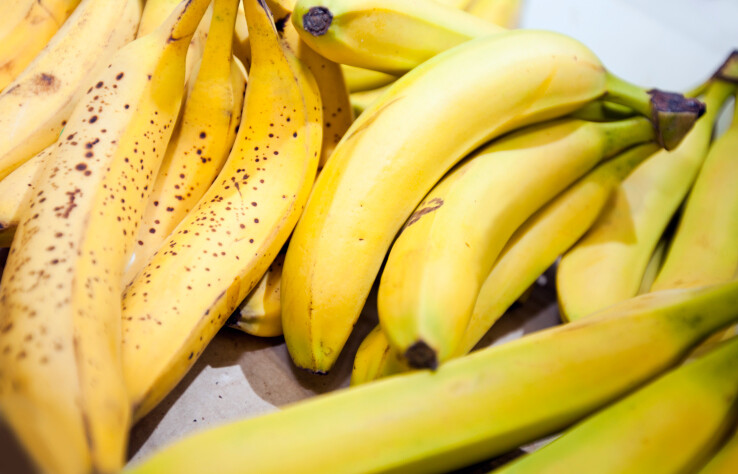
Banana
Peanut Butter
Honey
Not a banana fan? Leave it out and increase the amount of peanut butter and honey. Want a vegan option? Swap in maple syrup for the honey and carob chips for the chocolate chips. You can also try different nut butters and add all sorts of fun things into the mix, such as dried cranberries, chia seeds, flax seeds, chopped walnuts or anything else you’ve got in the cupboard. Be sure to check out the “optional add-ins” section for more great ideas.
These snacks take less than 30 minutes to make and can be kept in your freezer for up to a month. They’re a great alternative to store-bought snacks, but keep in mind that they don’t travel as well as packaged goodies, so they won’t make the best pack-and-carry fuel on a long trail run.
Check out the recipe below. Happy snacking!
Recipe
Ingredients
1 ripe banana, peeled *see note, below
⅔ cup smooth all-natural peanut butter *see note
⅔ cup honey (for a vegan alternative, use maple syrup)
4 + 1 cups instant or small-flake oats *see note
½ cup semi-sweet or dark chocolate chips (for a vegan alternative to milk chocolate chips, use carbo chips)
A pinch of salt
Method
In a large bowl, mash the banana until there are very few chunks left. Add the peanut butter and honey and whisk until smooth.
Add 4 cups of oats (reserving the last cup for later), chocolate chips and salt.
Mix thoroughly with a spatula, making sure to scrape along the bottom so there are no dry sections.
If the mixture is very wet, add the final cup of oats, ¼ cup at a time, stirring thoroughly after each addition. The mixture should be sticky enough that it holds together when you pinch it between your fingers, but not so sticky that it leaves a lot of residue on your hands.
Line a baking tray or large plate with wax paper. Wet your hands slightly with cool water and take about 2 tablespoons of the mixture into your hands. Roll it into a ball between your palms, gently squeezing it to ensure it sticks together. Each ball should be about the size of a golf ball.
Place each ball onto your baking sheet and freeze for at least an hour. Once they’re frozen, transfer them to a sealed plastic bag or container to stay fresh.
Optional add-ins *see note
Dried fruits (cranberries, raisins, etc.)
Nuts (peanuts, walnuts, pecans, etc.)
Cinnamon
Chia seeds
Ground flax seeds
Flaked coconut
Notes
Banana: If you choose to leave out the banana, increase the liquid ingredients by about ⅓ cup (more honey, more peanut butter, or a mix of both)
Peanut butter: Feel free to use regular (not all-natural) peanut butter, but the consistency may be different and you may have to adjust your dry ingredient ratios.
Oats: These work best with instant oats, because large-flake oats don’t stick together as well. If you only have large-flake oats, pulse them in a blender or food processor a few times first.
(06/29/2023) ⚡AMPby BRITTANY HAMBLETON (Running Magazine)
Ingebrigtsen and Girma go head-to-head in hunt for fast 1500m in Lausanne
Jakob Ingebrigtsen and Lamecha Girma both made history earlier this month in Paris, where they set a world two-mile best and a world 3000m steeplechase record, respectively. Now they have the chance to push each other to fast 1500m performances when they return to Wanda Diamond League action in Lausanne on Friday (30).
Norway’s Ingebrigtsen, who broke the world indoor 1500m record by running 3:30.60 in Lievin in February, clocked 7:54.10 in Paris to improve Daniel Komen’s world best for two miles. Despite still having that race in his legs, the 22-year-old improved his own European 1500m record to 3:27.95 in Oslo six days later – a time that places him sixth on the world all-time list.
Although the world record had not been his aim in Oslo, Lausanne’s Athletissima gives Ingebrigtsen another opportunity to take further strides toward Hicham El Guerrouj’s almost 25-year-old world record of 3:26.00.
“I 100% have more left in me,” Ingebrigtsen said after his performance in Oslo. “I just have to keep focused on each race ahead in the build-up to Budapest (World Championships), where it really matters.”
Girma will hope to be up there with him. The Ethiopian 22-year-old stormed to a time of 7:52.11 for his specialism in Paris, taking 1.52 seconds off the world 3000m steeplechase record set by Said Saeed Shaheen in 2004, and then turned his attention to attacking the Ethiopian 1500m record of 3:29.91 at the Continental Tour Gold meeting in Ostrava on Tuesday (27). He still looked like he had plenty left in the closing stages but having to run wide down the home straight, he focused on the win, running a PB of 3:33.15 that he will aim to improve again in Lausanne.
It will be the first time that Ingebrigtsen and Girma have clashed in any discipline.
In Oslo, Ingebrigtsen led the first eight men under 3:30 for the first time in history, and this time the line-up includes two other men who have dipped under that barrier so far in their careers: Britain’s Olympic bronze medallist Josh Kerr and Australia’s Stewart McSweyn. They are joined on the entry list by Ethiopia’s Teddese Lemi, New Zealand’s Sam Tanner and Britain’s Neil Gourley.
In the 5000m – the discipline in which Ingebrigtsen won world gold last year after his 1500m silver – Olympic champion Joshua Cheptegei will take on Olympic 10,000m gold medallist Selemon Barega, world 5km record-holder Berihu Aregawi, Telahun Haile Bekele, Birhanu Balew and their fellow sub-13:00 runner Muktar Edris.
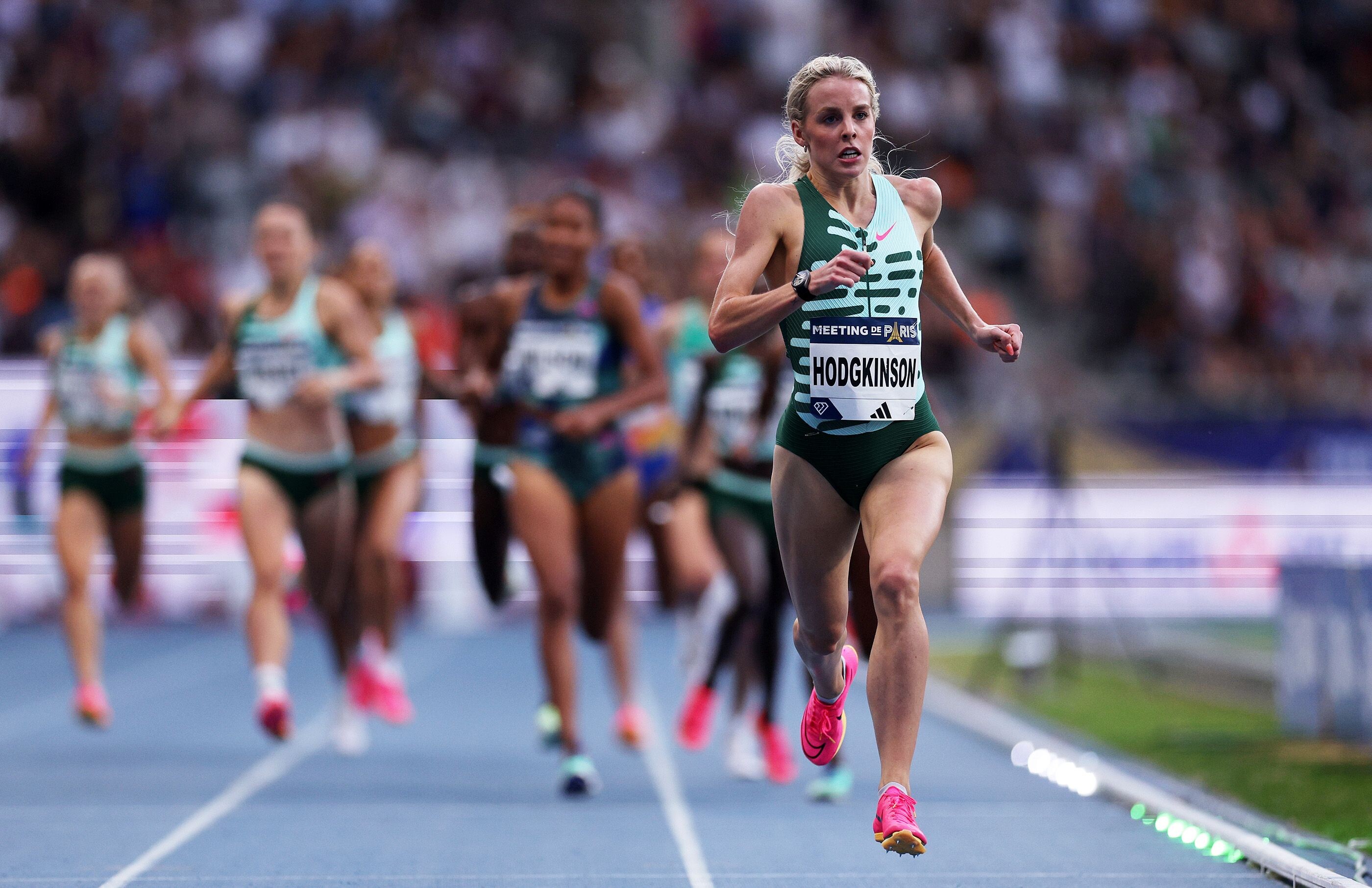
In the women’s 3000m steeplechase, world U20 silver medallist Sembo Almayew is back on the track after her world-leading PB performance of 9:00.71 to win in Florence. The 2021 world U20 gold medallist, Jackline Chepkoech, was second on that occasion and is also racing, along with world record-holder Beatrice Chepkoech and world bronze medallist Mekides Abebe.
The world leader also heads the entries in the women’s 800m, where world and Olympic silver medallist Keely Hodgkinson – who improved her British record to 1:55.77 to win in Paris – will look to make another statement as she renews her rivalry with Kenya’s Mary Moraa.
World bronze medallist Moraa, who won Commonwealth Games and Diamond League titles ahead of Hodgkinson last year, has run a best of 1:58.72 so far this season and the strong field also features Habitam Alemu, Noelie Yarigo, Jemma Reekie, Catriona Bisset, Natoya Goule and Switzerland's Audrey Werro, who recently ran a world U20 1000m record of 2:34.89 in Nice.
(06/28/2023) ⚡AMPby World Athletics
Maybe your long run is too long
5 clear cues it's time to dial down the distance
Your weekly long run can be tricky for runners to get their heads around. It’s one of those slippery but essential elements of training—like “easy days” or “hard” efforts—that not only differs from one person to the next, but is also tough to pin down for ourselves. Depending on a runner’s goals, experience and abilities, the weekly long run might range from a few minutes to several hours, or might vary in length from hundreds of metres to tens of kilometres.
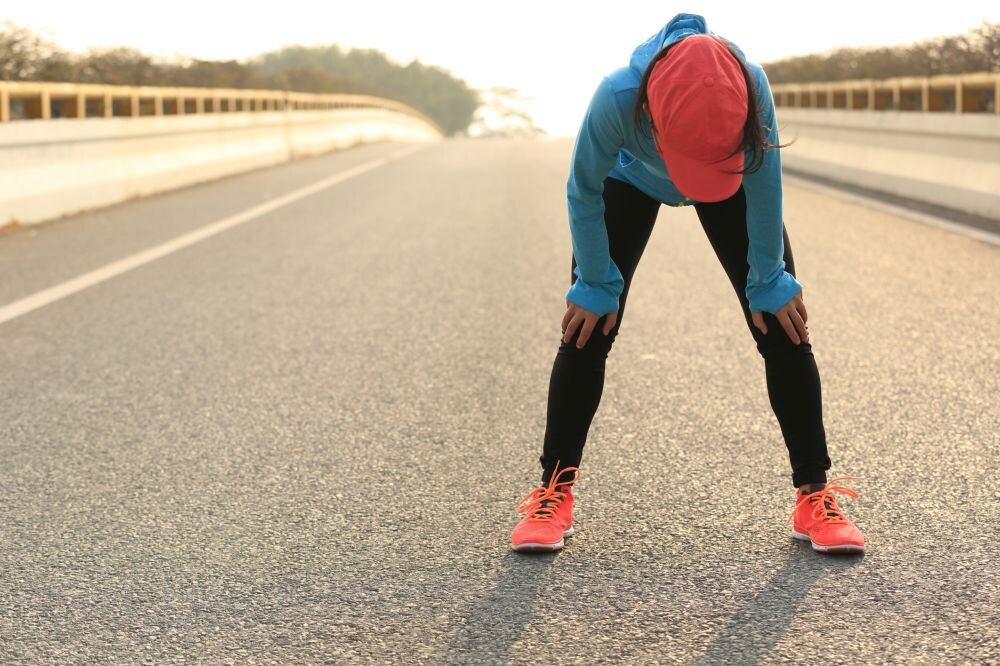
Despite the countless possible variations, long runs of all distances and durations may have something in common: clear signs that your longest run of the week is too long, and that it’s time to dial things back. If you’re wondering whether your concept of the long run could use some reworking, keep these clues in mind.
The numbers don’t add up
The total distance you run per week can offer sound guidance for limiting the length or time of your long run. According to famed U.S. running coach Jack Daniels, runners who are racking up fewer than 64 km over the week should limit their long run to 30 per cent of their total weekly distance. For those logging more than that in a week, the long run shouldn’t exceed 25 per cent of the week’s total distance—or 150 minutes, whichever comes first.

As the length and possibly the duration of your long run will increase in the course of training for an event like the marathon, increases need to be made wisely. Daniels recommends that runners not change their total weekly distance for four weeks before bumping up their weekly total, and by extension, the distance of their long runs. If the distance of your long run relative to your weekly mileage, or the frequency of increases to your long-run distance, shoots above these guidelines, it’s a sign you should trim your long runs accordingly.
Recurring injuries
Even if you’re sticking to those guidelines, your body can be sending you strong signals that you need to cut things back further. The most urgent warnings come in the form of recurring injuries. Pay attention to injuries or niggles that consistently resurface after your long runs. They might indicate that the distance is placing excessive stress on your body. Heed these warning signs and consider trimming the length of your long run to prevent further injury.
A plummeting pace
If you find your pace significantly drops toward the end of your long run, and you struggle to keep a consistent speed, it could indicate the distance is too long for your current fitness level. Try cutting off the distance of your long run at the point your pace starts to plummet, and if that new distance is sustainable, cap your long runs there for the next four weeks before returning to your original distance.
Declining motivation
A prolonged lack of enthusiasm and persistently diminished motivation may be a clue that you’re consistently pushing yourself too hard during long runs. It’s crucial to strike a balance between challenging yourself and maintaining a positive mindset to make progress in your training. (Declining motivation could, of course, be due to any number of other factors, including that you are running your long runs too fast.)
Low heart rate variability (HRV)
More running watches and fitness trackers are adding heart rate variability (HRV) measurement to their long list of metrics. Low HRV—the natural variation in tempo from one heartbeat to the next—might be an indication that your long runs are too demanding for your current level of fitness. Shorten your long runs for at least the next two weeks and make note of your HRV. If you start scoring higher,
(06/28/2023) ⚡AMPby Running Magazine
World Road Running Championships in Riga Latvia September 30
Athletics fans will have the opportunity to see the world’s best milers, 5km runners and half-marathoners compete in a single day at the World Athletics Road Running Championships Riga 23 under the revamped schedule announced today.
World Athletics and the Riga Local Organising Committee (LOC) have agreed to introduce a more compact programme, which will see the elite races and mass races held on the same day, October 1, at the championships.

The inaugural World Athletics Road Running Championships was originally envisioned as a two-day event, with the new road mile and 5km road championships to be held on Saturday 30 September and the half marathon races on Sunday 1 October, but in a move to create a more exciting build up for fans, all events have been brought together with the mass races on one day.

World Athletics President Sebastian Coe said: “As preparations for the World Road Running Championships have evolved, it has become apparent that the event will work better as a single-day event in Riga, both for local organisers and for broadcast. It will also give recreational runners the opportunity to be fully immersed in the day, running before and after our elite runners, and will create the festival atmosphere that we want to see to celebrate road running at every level.”
The new timetable begins on the morning of 1 October with the mass races over 5km and the road mile to be followed by the elite races over the same distances. Then attention will turn to the half marathon distance with the elite races to be followed by the mass race.
This unique global running festival will not only crown the world road mile, 5km and half marathon champions, but is also expected to feature thousands of amateur runners, kids and families from up to 100 countries participating alongside elite runners.
Aigars Nords, Head of the Local Organising Committee, commented: “With three months to go to the inaugural World Athletics Road Running Championships in Riga, Latvia, we have already attracted recreational runners from more than 50 countries all over the world. Saturday 30 September will see thousands of kids and families warm up for the championships during Kids’ Day, while Sunday 1 October will provide a unique opportunity for everyone to earn their mass race medals, not only in the road mile, 5km, and half marathon, but also in the half marathon relay, a new mass race, aimed at recreational runners not yet ready for the challenges of a half marathon.”
Any recreational runner who is ready for a challenge can register for any of the official mass races of the World Championships in Riga and earn a unique medal from the World Athletics Road Running Championships.
WRRC Riga 23 updated schedule
Saturday 30 September 202310:00 – 15:00 Kids’ Day
Sunday 1 October 202310:00 Mass race | 5km11:30 Mass race | Road mile11:50 Women | 5km12:15 Men | 5km13:00 Women | Road mile13:10 Men | Road mile13:30 Women | Half marathon14:15 Men + mass race | Half marathon | Half marathon relay (10.5km + 10.5km)
(06/28/2023) ⚡AMPby World Athletics
A woman has set a new time record for scaling all the mountains in Scotland higher than 3,000 feet
Ultra-runner Jamie Aarons finished the challenge in 31 days 10 hours and 27 minutes, breaking the previous record by more than 12 hours.
There are 282 mountains that meet the benchmark and they are known collectively as the Munros.
The challenge saw Aarons ascend 459,000 ft, the equivalent of climbing Mount Everest 16 times.
She also ran, cycled and kayaked between each of the Munros, covering a total of around 932 miles (1,500km) on foot and about the same distance by bike.
(06/27/2023) ⚡AMPEliud Kipchoge says he is determined to keep on writing history — and secure a third Olympic marathon crown next year
Eliud Kipchoge is widely regarded as the greatest marathon runner of all time has set himself many challenges in his dazzling career, and remains insatiable despite his two Olympic titles, his world record of 2:01:09 in Berlin in 2022 and an incredible 15 wins in 18 marathons he has entered.
He broke the mythical two-hour barrier over the 26.2 mile (42.195 kilometre) distance in Vienna in 2019, with a time of 1:59:40, but the feat was not recognised as an official world record as it was not in open competition.
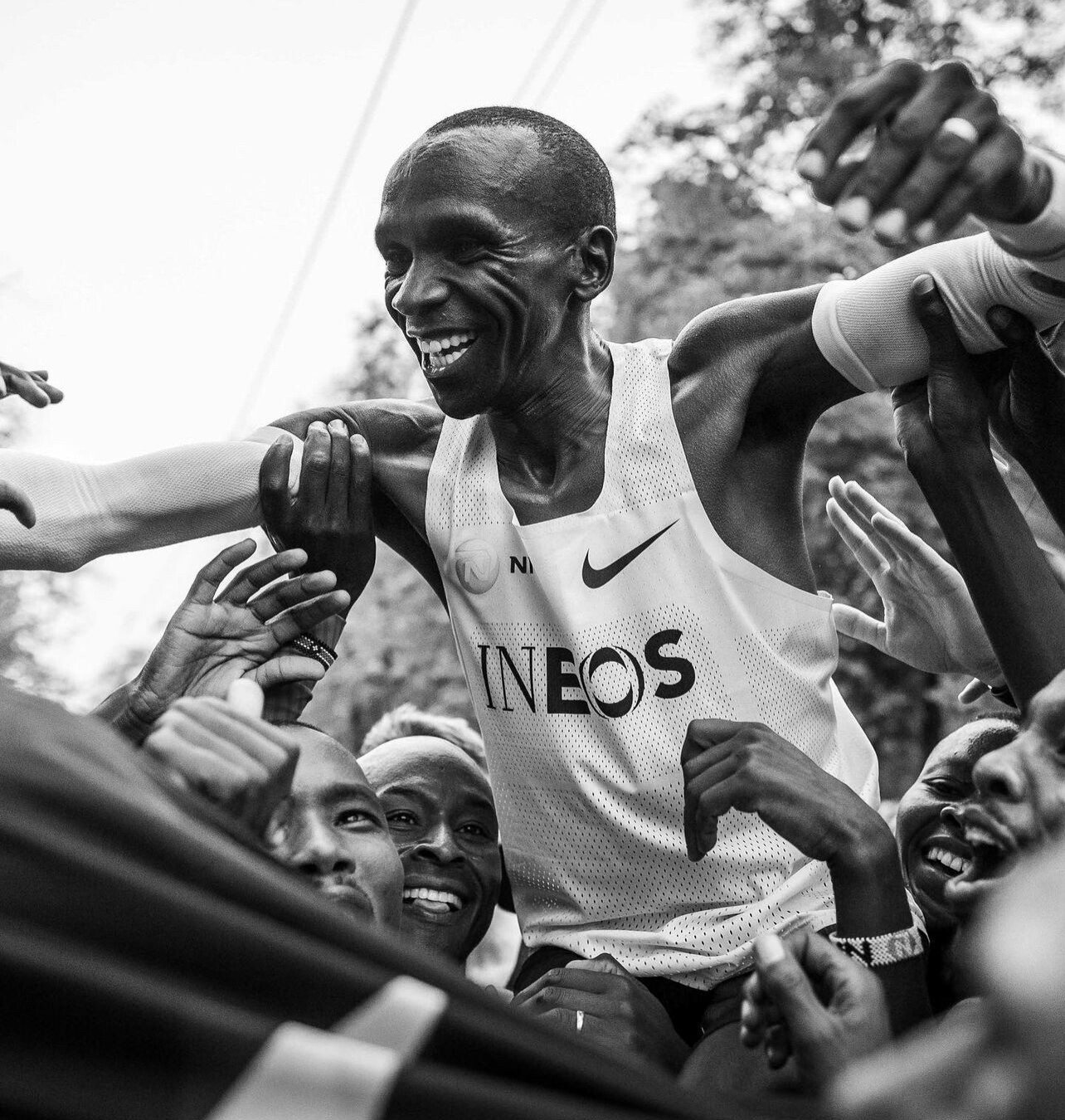
Victory has eluded the 38-year-old in the Boston and New York marathons, which if he won would make him the first man to have all six major titles under his belt.
"The priority now is to focus on the Olympics and win a third time. The other (challenges) will come later," Kipchoge says in an interview with AFP at the renowned Kaptagat training camp in Kenya's Rift Valley.
His two Olympic marathon gold medals in 2016 and 2021 put him at level pegging with Ethiopia's Abebe Bikila (1960, 1964) and Waldemar Cierpinski of East Germany (1976, 1980).
A third gold at the Paris Olympics in 2024 would make Kipchoge the undisputed marathon giant at the Games, and bring him a victory steeped in symbolism.
The French capital was the city where he won his first international crown in 2003 at the age of 18, clinching the 5,000 metres world championship title ahead of sporting legends Hicham El Guerrouj of Morocco and Ethiopia's Kenenisa Bekele.
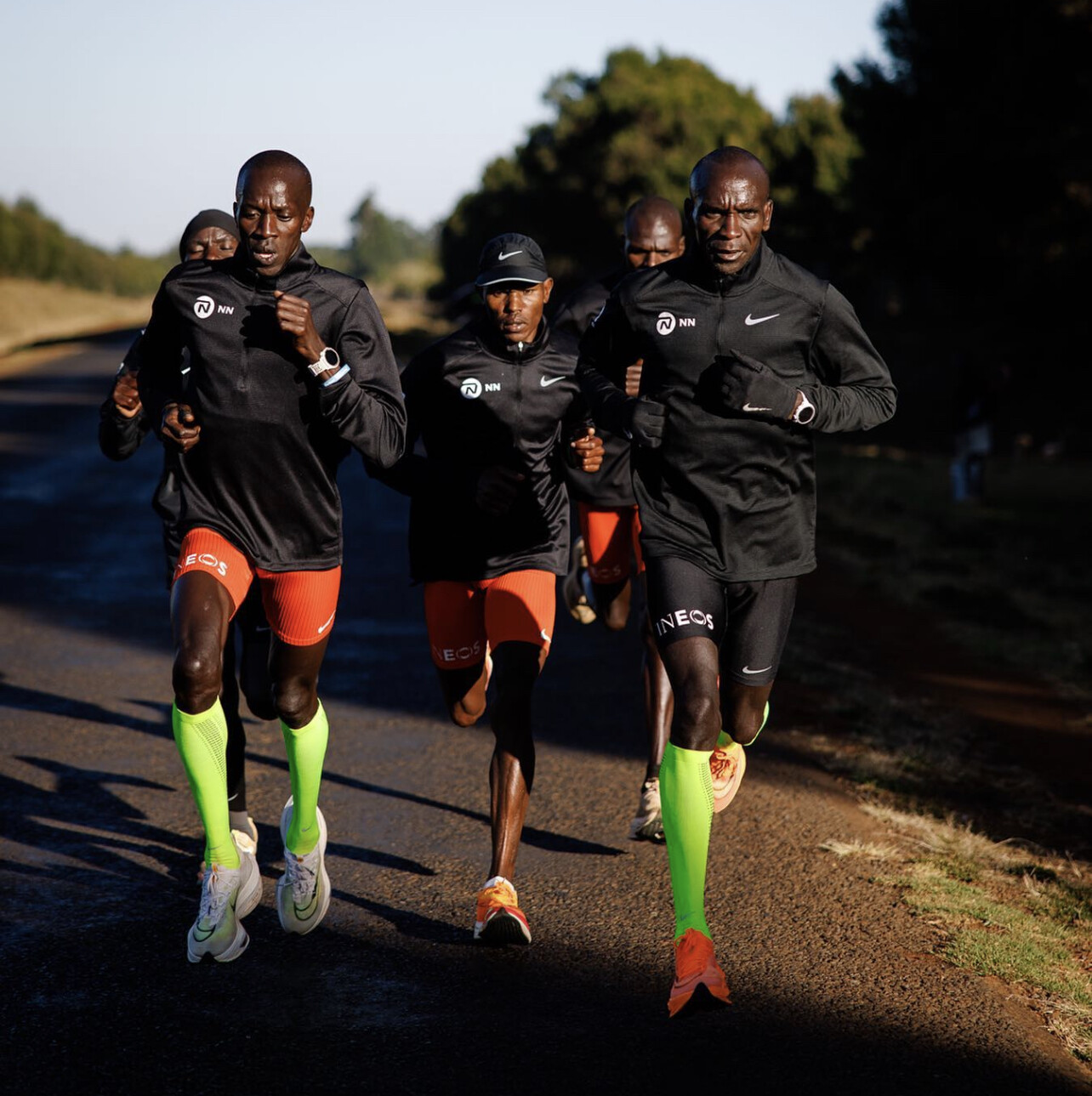
However, Kipchoge does not rule out giving up on his other goals.
"If time comes in to hang the racing shoes, I will say bye to other big things in sport."
'I know myself'
Sitting on a shaded bench in the Kaptagat camp where he has lived and trained for several months a year for 20 years, Kipchoge looks back on his poor showing in Boston on April 17, where he dropped from the lead group in the 30th kilometre and ended up finishing sixth.
This rare failure dampened his spirits.
"I'm trying to forget what has happened in Boston. It's caught in my mind... but I believe that what has passed has passed."
With his lifelong coach Patrick Sang, he has analysed the reasons for his disappointing performance, saying "it's mostly the hamstring".
He brushes aside concerns about his difficulties on hilly courses such as Boston and New York and which will also confront him in Paris.
"It is not really a concern, but I respect everybody's thoughts," he says. "I think it was a bad day and every day is a different day. I'm looking forward for next year.
"Everybody can write anything, you have no control. But I know myself."
'Want to be an inspiration'
Kipchoge is now preparing for his final marathon of the year.
"I'm doing well. My training is going on in a good way," he says.
But he has not yet disclosed which event it will be — Berlin on September 24, Chicago on October 8 or New York on November 5.
"At the end of July, I will know where to go."
He is following his usual training programme, eating up more than 200 kilometres a week on the red dirt tracks of Kaptagat forest, 2,400 metres above sea level.
Among his 20-odd training partners at the camp at the time of the AFP interview were Kenya's new 1,500m and 5,000m world record holder Faith Kipyegon and two-time New York marathon winner Geoffrey Kamworor.
As the respected dean of Kenyan athletics, Kipchoge is happy to see the emergence of 23-year-old compatriot Kelvin Kiptum, who won the London Marathon in April in 2:01:25, the second fastest time in history and just 16 seconds away from his own world record.
"I want to be an inspiration and I trust my breaking the world record twice is an inspiration to many young people. I trust they will want more and even beat my records."
'Prioritise drugs tests'
But in a country where athletics has become tainted by large-scale drug use, Kipchoge laments that "many people are going into shortcuts to advance".
"I think doping is there... It's all more about getting rich."
Kipchoge says the authorities should prioritise testing for performance-enhancing substances, saying it was much more important than education "because everybody who is doing doping knows what is going on".
"Just pump everything in testing, put testing as a first priority and all will be well," he says.
"The moment we prioritise testing and we register those who are handling the athletes across the country, we have the right data to know who is who in the whole country.
"But if we really ignore the people who are working with athletes and athletes themselves, then we are in danger."
(06/27/2023) ⚡AMPNatasha Wodak and Jeremy Coughler win Canadian 10,000m titles
Wodak secures her second national in three weeks, and Coughler wins his first Canadian 10,000m title at Pacific Distance Carnival in Langley, B.C.
Three weeks after successfully defending her Canadian 10K title in Ottawa, Natasha Wodak added another national title to her extensive resume at the Canadian 10,000m Championships in Langley, B.C. Wodak won by a significant margin of 30 seconds, securing her second Canadian title of the 2023 season. On the men’s side, London, Ont’s. Jeremy Coughleremerged as a first-time national champion, crossing the finish line in 28:46.96 on a warm and windy evening at the Pacific Distance Carnival.
Despite experiencing some minor hamstring tightness leading up to the 10,000m championships, Wodak displayed her exceptional fitness by establishing an impressive lead of nearly 100 meters after the 5K mark. Assisted by 2020 Olympian Natalia Allen for 12.5 laps, Wodak maintained her position and claimed victory overKatelyn Ayers and Cleo Boyd.
Ayers achieved a personal best time of 33:11.77, securing second place, while Boyd from Kingston, Ont., finished seven seconds behind Ayers in 33:18.27, taking the third spot. This marks the second time in the last four years that Wodak has achieved the remarkable feat of winning both the 10,000m and 10K titles. She previously accomplished this feat in 2019.
Wodak will now return to training as she continues her preparations for the marathon at the 2023 World Athletics Championships scheduled in Budapest in late August. Her last representation for Canada was at the 2020 Tokyo Olympics, where she placed 13th in the marathon.
Coughler captures Canadian crown
For Coughler, following his third-place finish at the Canadian 10K Championships last month, the desire for further success propelled him to secure his first individual Canadian national title. Representing the London Western Track Club and working as a full-time chiropractor, Coughler has been on a roll in 2023, winning multiple races and showcasing his talent. Perry MacKinnon from Sherbrooke, Que., impressed with a commendable time of 28:52.60, securing the second position.
Meanwhile, Mexican Olympian Juan Luis Barrios claimed third place with a time of 28:55.82. However, since Barrios is ineligible for Canadian championship recognition, the third-place medal was awarded to Andrew Alexander from Toronto, who finished fourth in 29:25.64.
(06/27/2023) ⚡AMPby Running Magazine
Unleashing Potential: Exploring Why the Gambling Industry Could Be a Beneficial Sponsor for Running Events
Running events have gained quite popularity in the last few years. They become a center of attraction for people who particularly have a passion for fitness. Such events, inarguably, require a large amount of funding for the organization and execution. The event organizers are often on the lookout for sponsorships to get proper funding.
There is one industry that offers great potential for sponsorship and is also quite in demand – the gambling industry. This article takes a deep dive into the reasons why the gambling industry could be a beneficial sponsor for running events.
1. Promotion of Responsible Gambling Practices
As unfortunate as it might be, the lack of awareness related to gambling has resulted in people disregarding its responsible practices. By partnering up with the gambling industry, running events can play a crucial role in raising awareness about responsible gambling and how it is done while staying within one’s means.

Several casinos, such as Zodiac Casino, are to be named prime examples of gambling done in the right way. The participants in running events will come to know about this through sponsorship. What’s more, Zodiac Casino sign-up is a pretty hassle-free procedure, which further provides the players with opportunities to practice online gambling in the most responsible manner. Ever since its launch in the early 2000s, it has continued to provide people with the opportunity to play for real money.
2. Financial Support
The gambling industry possesses all the financial means to offer substantial funds for running events. Said funds can be used to organize the events and execute them by renting out the venue, marketing the event on multiple platforms, and looking after the convenience and demands of participants.
Moreover, online casinos are popular in this regard since the funding coming from them is used to invest in enhancing the experience of runners.
As reported by BBC, Aston Villa's Fan Consultation Group stated, “The commercial reality is that for teams outside the top six, such sponsors offer clubs twice as much as non-gambling companies.”
3. The Subsequent Exposure
Online casinos have a massive online following and reach. By enlisting its help, running events can successfully manage to reach a broader audience. The use of promotional ads and posts on various social media platforms is said to be quite effective in leading to higher participant registrations.
As a matter of fact, various brands take advantage of the reach of online casinos to maximize their visibility on online forums. Active gamblers discover such brands on the websites and accounts of casinos and search for them later.
Conclusion
Promoting responsible gambling practices and awareness regarding casinos, along with financial funding and larger exposure to a broader audience, is one of the primary reasons why the gambling industry is considered a beneficial sponsor for running events. It can contribute to the success of such events and further provide a more dynamic event landscape.
(06/26/2023) ⚡AMPThese simple tricks will have you gliding effortlessly over hills and up mountains
Running uphill seems simple in theory, but many runners struggle with the challenge or avoid hills altogether. Striding up some vert can help all types of runners, in every distance, boost speed and strength. Learn how to maximize your hill training (without getting hurt) by running both up and down effectively and efficiently.
Practice the long, steady climb
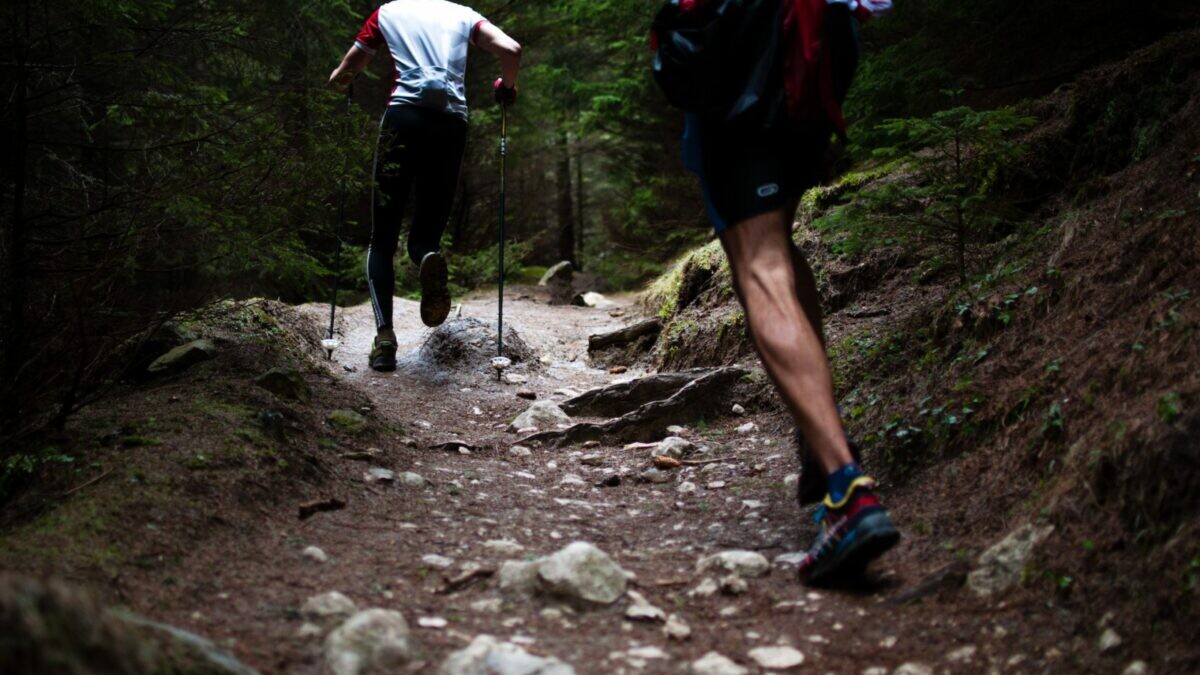
With the exception of hill sprint workouts, you should aim to run uphill at a moderate, sustainable pace. Burning up energy by tackling hills full-tilt will cause a deficit later in your workout or race, while evenly-paced climbing will keep you running smoothly throughout. Studies show many runners tackle hills too quickly at the outset and end up running at greater effort than they can maintain.
Find a hill that takes you 10 minutes or longer to run up (or set your treadmill incline so that your legs are burning but you can smoothly keep pace). Aim to mimic the effort you use on flat terrain, even if it feels like you’re running very slowly. If you find yourself starting to breathe more heavily, slow down.
Lengthen your stride at the top
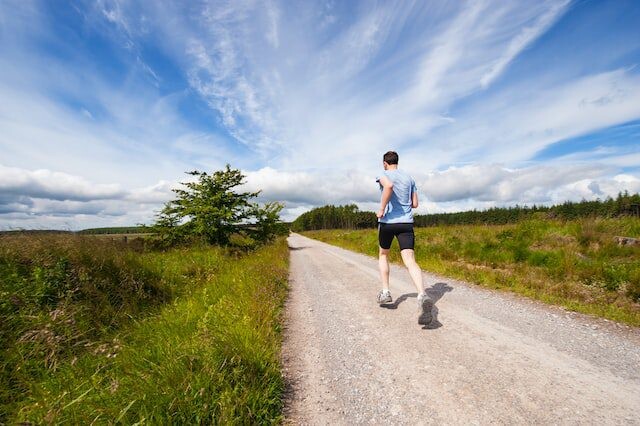
After speeding up a hill, you may have a habit of slowing down (or even stopping) to catch your breath before resuming your normal pace. Runners naturally have a shorter stride heading uphill, and it takes a conscious effort to switch back to your regular stride quickly.
Make a habit of cueing yourself to open your stride and pick up your pace. To get better at this, find a short hill that takes under a minute to reach the top of. Run hard to the top, lengthen your stride, and accelerate for roughly 15 seconds. Run easily back down the hill to recover and repeat five to 10 times.
Learn to love the downhill
Downhill running at high speeds is an art form. Inserting some fast downhill sections into your training will help you gain the confidence needed to have a loose, relaxed gait and fast pace, while avoiding zooming out of control.
After a regular run, add four to six 100-metre strides down a gentle hill that has a grade you feel comfortable playing with speed on. Try shortening your stride, while keeping your arms wide and low for stability. Aim for quick steps and a smooth gait. If you find you are breathing easily, push a little bit harder. As you get more comfortable picking up the pace, find steeper hills to practice on.
(06/26/2023) ⚡AMPby Running Magazine
Courtney Dauwalter breaks record at Western States 100 by almost 80 minutes
Ultramarathon runner Courtney Dauwalter crushed the women’s course record at the Western States 100-mile race in California, taking more than an hour off the previous best time.
Dauwalter finished the Western States 100 – the world’s oldest 100-mile race – in 15 hours, 29 minutes and 34 seconds, almost 80 minutes faster than Ellie Greenwood’s record set in 2012. The race was first run in 1974.
“I just kept asking [my legs] to do one more mile for me and they kept responding, so I was very thankful for that,” Dauwalter told iRunFar about the last 20 miles of the race.

“I was definitely, though, deep in the pain cave and really focused on every single step, every single second.”
Cooler weather contributed to faster times at this year’s Western States 100, which started in the early hours of Saturday morning in Olympic Valley, California.
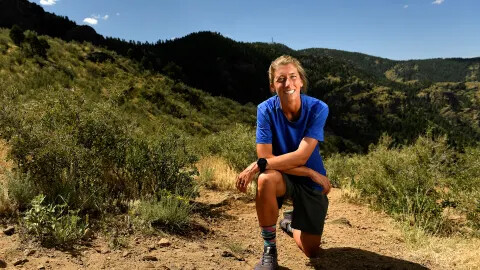
Snow covered much of the initial stages of the course before runners descended into a recently unshaded section scorched by last year’s Mosquito Fire.
After running with fellow American Katie Schide, Dauwalter started pulling away around the 30-mile mark, steadily eating away at Greenwood’s course record.
Covering 18,000 feet of climbing and almost 23,000 feet of descent across Californian trails, the race finishes on a high school running track in the city of Auburn in Placer County.
“I couldn’t believe when the track suddenly showed up and you make that turn, I was like: We did it! We’re here!” Dauwalter told iRunFar.
“Because that was the moment where I let myself actually believe that we had finished and we were about to be able to stop moving.”
Dauwalter, who is set to defend her title at the Hardrock 100 in Colorado in three weeks’ time, also won the Western States 100 in 2018, though her time this year was nearly two hours faster.
Most people’s idea of fun wouldn’t involve running for hours on end through brutal, undulating terrain – but ultra-marathon sensation Courtney Dauwalter is no ordinary person.
While an ultra-marathon is technically defined as any race longer than 26.2 miles, Dauwalter’s exploits tend to take place at distances far greater than that, usually between 100 to 250 miles.
The 38-year-old’s list of achievements is almost interminable. Dauwalter, a four-time ‘Ultra Running Magazine Ultrarunner of the year,’ holds multiple course records for the obscenely long races around the US and abroad.
Dauwalter’s breakout moment came at the Moab 240 – an annual 240-mile race in Utah. At the 2017 edition, shortly after making the decision to become a full-time ultra-runner, Dauwalter completed the course a scarcely believable 10 hours ahead of all other competitors – male and female.
The Transgrancanaria event on February 24 – Dauwalter’s most recent escapade - resulted in her 15th straight race win by gender dating back to March 2021, according to results database Ultrasignup.
The Minnesota native completed the grueling 128km course (79.5 miles) – including over 7000 meters of elevation gain - around the Canary Island in a course record 14 hours 40 minutes: over 90 minutes ahead of her closest competitor.
(06/26/2023) ⚡AMPTOP Marathons Sponsored by Casinos
The running industry is booming and it's not just because of the health benefits. It also has a lot to do with how much fun it is to sign up for a marathon and get geared up for the big day.
The excitement and energy of an event like this, combined with the thrill of crossing that finish line, are enough to put anyone in a good mood—even if they're exhausted from all that training! But there's another reason why marathons have become so popular: casino sponsorships!
Benefits and Significance of Marathon Sponsorships for Casinos
Marathons are a great way for casinos to connect with the running community. While running is often seen as an individual sport, marathons can bring together thousands of people from all walks of life and make them feel like part of something bigger than themselves.
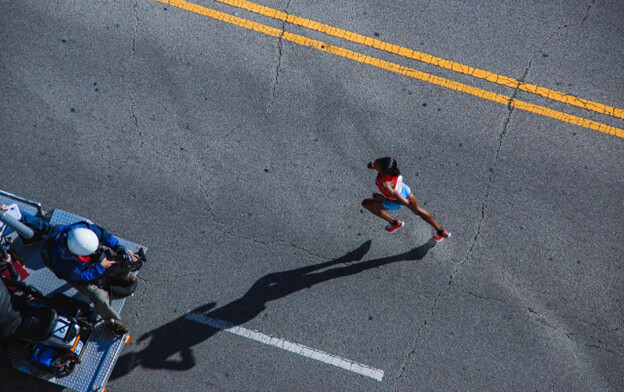
Casinos can also use marathons as an opportunity to build their brand awareness by sponsoring races or offering discounts on race registration fees for casino members. They don’t just rely on no deposit casino bonuses and other promotions as a marketing strategy. Sure, one of the top deals they can make are no deposit bonuses with Gamblizard's no deposit offers being a perfect example. Casinos who sponsor races often do so because they want their name associated with healthy lifestyles (since many people run as a form of exercise) but also because it gives them access to new customers who may be interested in visiting the casino after seeing how much they care about helping others achieve their goals through such programs.
Advantages of Casino Sponsorships in Marathons
Casinos can use marathons to promote their brand, promote a healthy lifestyle and connect with communities. Casinos are popular destinations for runners and other athletes looking for great gaming experience and low wagering bonuses. They often have race sponsorships in place to help them gain exposure among this demographic and attract more players, just like they do with low wagering casino bonuses at sites where gamblers don’t need to deposit much. But casino sponsorship goes beyond simply advertising on running gear or at the finish line.
A casino's involvement in a marathon or triathlon can go much deeper than just slapping its logo on some promotional materials and handing out free drinks at the finish line. Gambling brands may take part in planning events that support athletes' training, offer prizes for winners and host post-race parties where competitors gather after completing their race together as one big group.

Building Brand Visibility and Reputation
Casinos are building a reputation for sponsoring marathons. They're also building a reputation for being good corporate citizens, good neighbors and good employers.
The casino industry has had its share of negative press over the years. Casinos were originally seen as dens of iniquity where people went to gamble away their money and possibly engage in illegal activity. However, today's casinos have taken steps to improve their public image by sponsoring charitable events like marathons or races.
The casino industry is also seen as a good employer. In many states, casinos are required to provide jobs for people who live in economically depressed areas where unemployment rates are high. The casinos provide employment opportunities both on-site and off-site, and many of these jobs require little or no experience.
Casinos are also seen as good neighbors. They often donate money to local charities and sponsor community events.
Connecting With Communities and Promoting a Healthy Lifestyle
Casinos can make a real difference in their communities by sponsoring a marathon. They can be a part of the community and help to promote healthy living, which is something that is important for everyone.
Casinos want people to come out and have fun with them, but they also want people to feel good about themselves when they leave the casino. This means encouraging them to get out there and exercise (or join a marathon) or eat healthier food options at their restaurants or cafes.
The TCS New York City Marathon is one of the largest marathons in the world. It's also one of the oldest races in North America, having been run every year since 1970 (except 2012 and 2020 due to justified reasons). The 2019 edition featured 53,627 finishers and 98,247 applicants for entry into this international sporting event--making it the world's largest marathon by both measures. In addition to being a major athletic competition, it has also become an important cultural celebration that highlights New York City's diversity while also raising money for charity organizations such as Team For Kids Foundation and Autism Speaks!
The course starts at Fort Wadsworth in Staten Island before crossing over into Brooklyn via Verrazano-Narrows Bridge before going through Queens and then Manhattan before finishing up near Tavern of the Green with tens of thousands cheering them on their way! The marathon has many sponsors, and occasionally it is sponsored by a local casino. Moreover, they have ESPN as one of the official sponsors, who may not be a casino, but they do offer Fantasy Football Sweepstakes.
Las Vegas Rock 'n' Roll Marathon
The Las Vegas Rock 'n' Roll Marathon is one of the largest marathons in the world, attracting thousands of runners from around the globe each year. The 13th edition of the half marathon attracted more than 27,000 participants in February 2023.
Even if the races started in 1967, the annual marathon event takes place in February every year since 1993, except when it was cancelled because of the 2020 Coronavirus outbreak.
The Strip at Resorts World Las Vegas sponsored the Rock ‘n' Roll Running Series Las Vegas expo took, with an attendance exceeding 50k people over three days! Resorts World Las Vegas, the expo's presenting sponsor, organized the three-day Health & Fitness Expo on the Strip. A Health & Fitness Expo kicked off race weekend, where runners had a chance to pick up their bibs, explore interactive exhibits, shop for event merchandise, and enjoy non-stop music and live entertainment. With its opening on June 24, 2021, Resorts World Las Vegas is the Strip's newest property in over a decade. Moreover, one of the marathon editions also had MGM Resort was also one of the sponsors, and they are listed on the official marathon website.
Niagara Falls International Marathon
Niagara Falls International Marathon is one of the most popular Canadian marathons. The fun fact about it is that it starts in one country(Buffalo, NY) and ends in another (Niagara Falls, Ontario, Canada). The marathon was established as part of the casino's grand opening celebration and has been held every year since then.
The events include 5k races and 10k races as well as half marathons and full marathons. It is one of the largest and most popular marathons in Canada, with over 6,000 runners participating each year since 1974. From 1998 until 2008 when it was known as the Casino Niagara International Marathon, they had a sponsorship with Casino Niagara (as their title sponsor).
Impact of Marathon Sponsorships on the Running Industry
Marathons are an excellent way for casinos to increase their brand awareness, as well as help promote a healthy lifestyle in their community. By sponsoring these events, casinos can make running more accessible to more people. This is good news for everyone--casinos get to see their name on the race bibs and banners, while runners get some extra motivation from knowing they're part of something bigger than themselves.
Influence of Casino Sponsorships on the Running Community
The influence of casino sponsorships on the running community can be seen in many ways. Casinos can help by offering financial support for races that would otherwise not be possible, as well as providing enhanced race experiences and promoting healthy lifestyles. These benefits are important because they provide runners with an avenue for their passion and allow them to enjoy their hobby even more. They also build brand visibility, reputation and loyalty for casinos who choose to invest in these types of projects.
Financial Support and Enhanced Race Experiences
Casinos can provide financial support to races. This can come in the form of direct sponsorship or through event partnerships that include promotional opportunities. Casinos are also able to enhance the race experience for runners and spectators alike by providing amenities such as:
The idea of a casino sponsorship is not always seen as a positive thing. Some people believe that casinos are not healthy places to be, and running marathons may seem like an activity that should be promoted by health-conscious organizations. However, there are many reasons why this sponsorship works well for both parties involved:
Casino sponsorships are a great way for casinos to reach new customers and increase their brand visibility. Casinos can leverage their sponsorship to promote a healthy lifestyle, connect with communities, or simply promote their company's name.
Casinos have found that sponsoring marathons is an effective method of gaining exposure in local communities where there may not be many other businesses competing for attention.
(06/26/2023) ⚡AMPATHLETES FROM 49 STATES AND 102 COUNTRIES PARTICIPATED IN THE BAA 10k RACE THROUGH BACK BAY
The summer road racing season kicked off with sunshine and spectacular finishes, as 7,867 athletes took part in today’s 2023 B.A.A. 10K presented by Brigham and Women’s Hospital. Kenya’s Hellen Obiri, returning to the city two months after winning the 127th Boston Marathon, took home the win in the women’s open division, while Tanzania’s Gabriel Geay earned his second B.A.A. 10K win in five years. Obiri’s finish time for the out-and-back course was 31:21, with Geay clocking in a new personal best 27:49.
In the wheelchair division, Hermin Garic of New York successfully retained his men’s title – crossing in 22:44 just inches ahead of James Senbeta—while Yen Hoang of Illinois took home top honors in the women’s wheelchair division in 25:25.
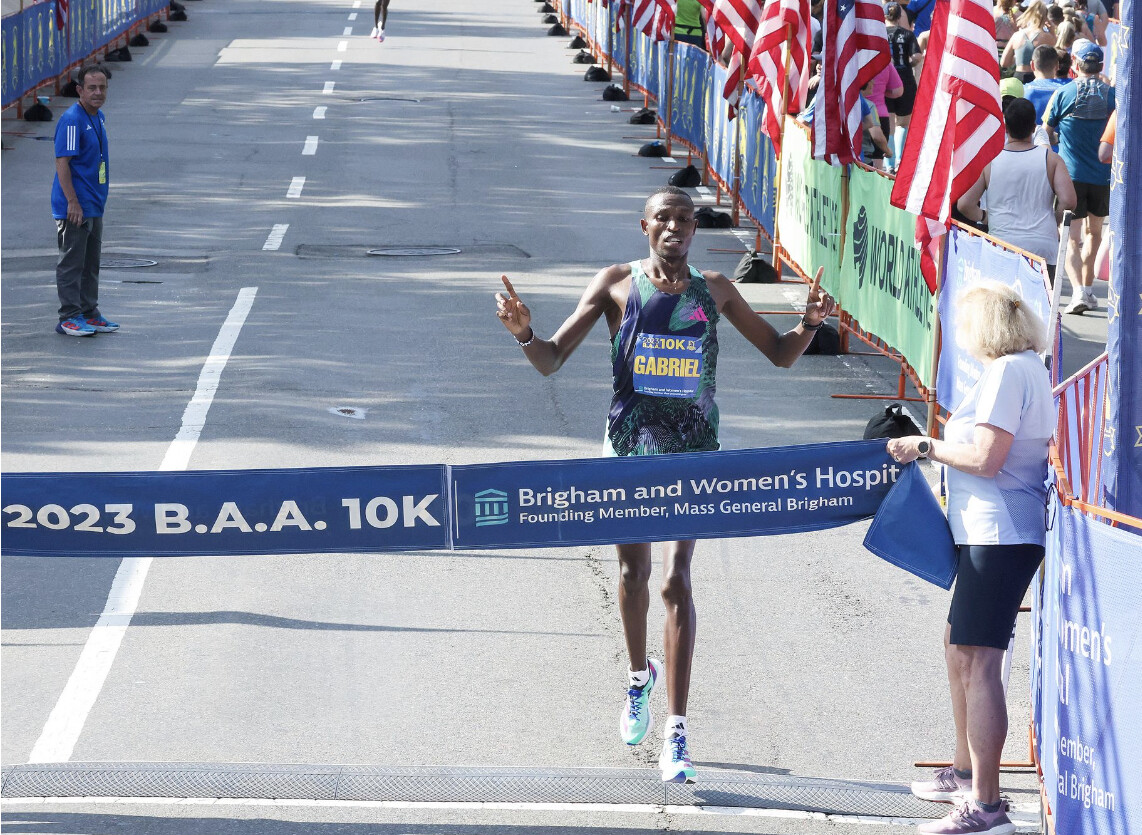
From the outset Obiri asserted her frontrunning prowess, building a 13-second lead by 5K. It was then that the hot and humid conditions began to impact the double Olympic medalist.
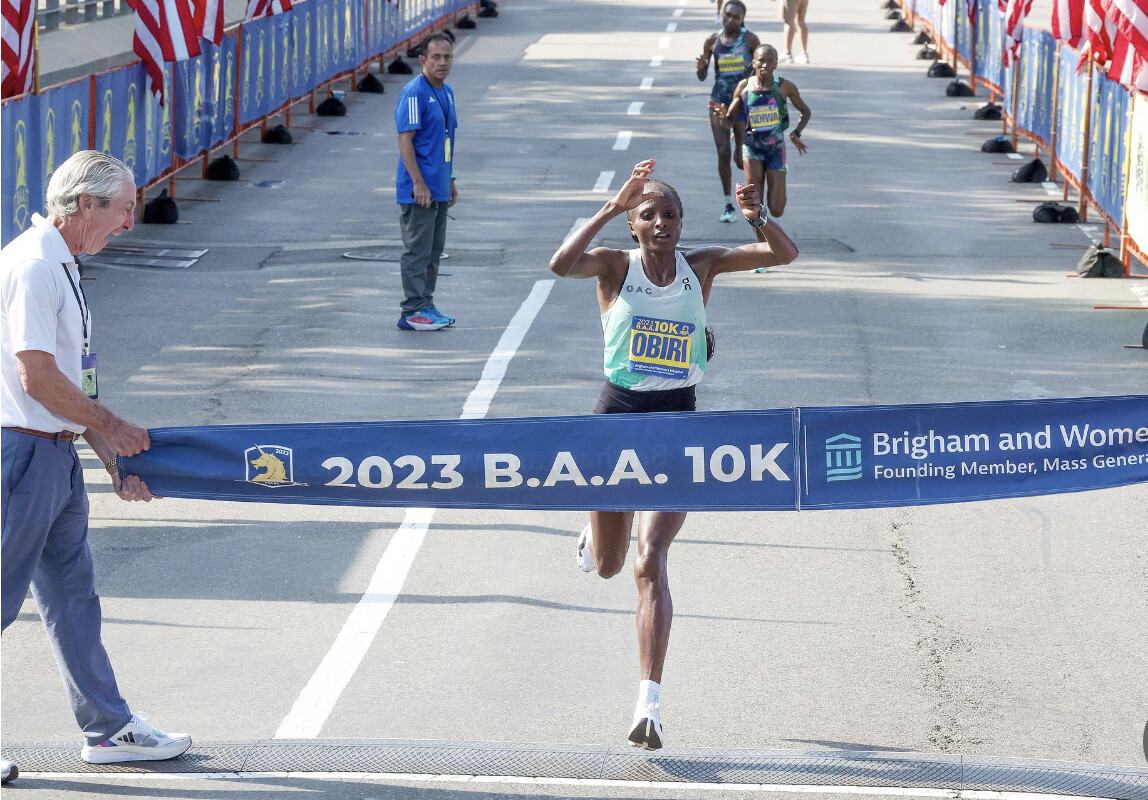
“At 8K my body was so tired. Maybe I went out too hard from the start,” admitted Obiri. “The ladies coming from behind were so strong. But I say, I’m also the best. I can try to win.”
That she did, crossing in 31:21. Stacy Ndiwa of Kenya was second in 31:25, followed by compatriot Sheila Chepkirui (31:27), American Emily Sisson (31:35), and Kenyan Mary Ngugi (31:45).
“I’m so happy about the result,” said Obiri between smiles. “I wanted to run in the 30s [minutes] but unfortunately the weather was too hot, it was humid. But I am so happy for the win today.” The energetic support from the Boston running community also spurred Obiri on: “The crowd was so friendly, all the way they say Go Hellen! You get that energy; you want to race hard so that don’t let your fans down.”
A pack of nine men hit the halfway mark in 14:11, though Geay soon began pressing the accelerator. He’d hit 8K with a five second lead (22:16) before extending the margin of victory to 11 seconds at the finish. Kenya’s Edwin Kurgat (28:01) was second, with Kenyan Alex Masai rounding out the podium in third (28:09). American Diego Estrada was fifth in 28:19.
“I tried to push at the beginning, and from 6K or 5K I tried again to push it. There were three guys at my back but in a few meters they dropped off. I was intending to win,” said Geay, who is coming off a runner-up finish at the Boston Marathon in April. “The time was fast. I was hoping to run 27; I’m happy because of the weather.”
(06/25/2023) ⚡AMPB.A.A. 10K
The 6.2-mile course is a scenic tour through Boston's Back Bay. Notable neighborhoods and attractions include the legendary Bull and Finch Pub, after which the television series "Cheers" was developed, the campus of Boston University, and trendy Kenmore Square. ...
more...Why The Budapest World Championships Means Everything For Prague Champion Irine Kimais
Prague Half Marathon champion Irine Kimais says she will be overjoyed beyond measure were she to make the team to the World Chmapionships in Budapest, Hungary in August this year.
Kimais revealed she is putting in an extra shift in training as she eyes a first-ever appearance for Team Kenya at the global showpiece.
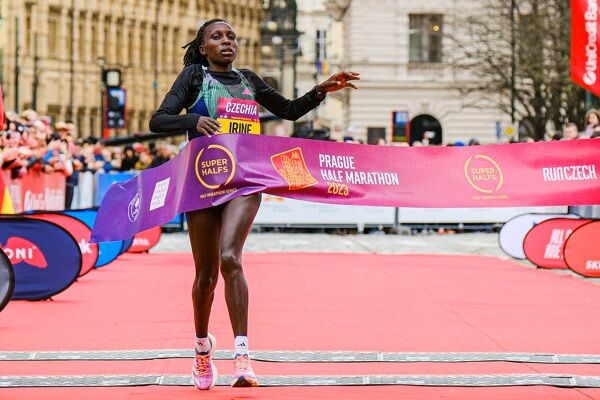
“I am working extra hard in training because I want to make the national team. My eyes are set on the national trials for the World Championships in the next two weeks. If I manage to make the final team, it would be my greatest happiness. Of course, all that depends on how I perform at the trials,” the South American Half Marathon champion said.
Kimais was a disappointed woman at last year’s national trials for the World Championships in Oregon, United States, after she clocked 32:02.53 to finish fifth in the women’s 10,000m.
On Friday, she went some way towards righting the wrongs of 2022 when she clocked 31:56.37 to win the women’s 10,000m at the Athletics Kenya (AK) National Championships at Nyayo Stadium.
In second place was North Rift’s Catherine Releen who timed 31:57.79 as Chicago Marathon champion Ruth Chepngetich clocked 32:09.87 in third place.
Kimais said the win has boosted her morale ahead of a cutthroat fight for a place on the plane to Hungary for the World Championships, come August.
“I came here to see how much more work I have to do before the national trials. I know I now need to work on my time ahead of the competition. I have been training in Kapsabet and I can say, so far so good. I will try my best to ensure I am among those selected in the final team,” she said.
(06/25/2023) ⚡AMPThere’s a Six-Day Ultramarathon Happening Inside a Speed Skating Rink
Runners have been logging miles around a 443-meter running track all week. Last year’s winner ran 437 miles.
While summer racing heats up, some ultra athletes in Milwaukee are keeping on their layers as they race ’round the clock at the Six Days in the Dome ultramarathon. Held inside the Pettit National Ice Center, which houses two full-sized hockey rinks and a speed skating track nestled inside the 443-meter running track, the facility’s temperature is kept at a steady 55 degrees year-round.
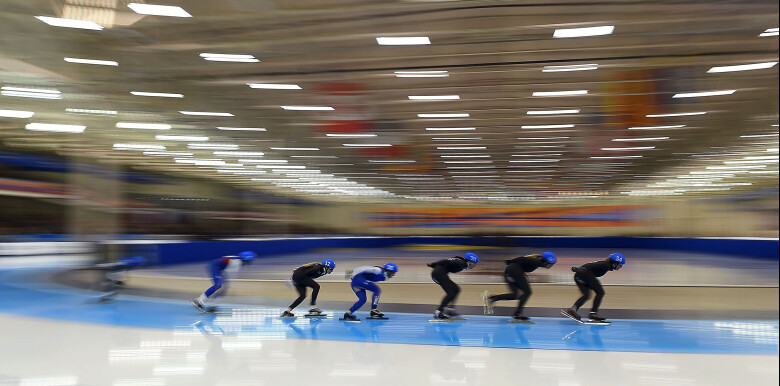
That’s the point in this competition, which originated in 2014 at the Alaska Dome in Anchorage—where Joe Fejes broke the then American record for six days by running 580 miles. Eventually, the race relocated to Milwaukee for its second running in 2019. Whereas many ultra competitions feature rough terrain, brutal conditions, and require an “expect anything” mindset, the original race director, Steve Durbin, wanted to create an ultra race in a fully-controlled environment.
But just because the environment is carefully calibrated for racing success doesn’t mean the great distances require any less mettle than ultras that are contested in rugged outdoor settings. Ultramarathon running requires a great deal of planning—runners schedule their sleep, kit changes, showers, and fueling, and must stay on top of the unavoidable blisters, chafing, and other small aches and pains that can end their race if not tended to.
“The thing about ultra-running, the finish is not a guarantee,” race co-director Mike Melton told UrbanMilwaukee.com. “That’s part of the challenge. How deep into yourself will you go? How deep into the pain cave can you handle? How can you manage the sleep deprivation, the miles you want to do? Everyone’s motivation is something different, something unique.”
As Saturday night looms, athletes are nearing the end of the nearly weeklong competition, which began on June 18. The stakes are high, as those who place in the top six will secure their place on the U.S. 24-Hour National Team. As of Wednesday afternoon, Romania’s Nicolae Buceanu and Sandra Villines-Burruss from Florida were in the lead, at 268.268 and 243.243 miles, respectively.
Canadian Viktoria Brown took the win last year with a total of 457.4135 miles, setting two Canadian records and one world record in the process, but she didn’t return to defend her title, so the multi-day competition is anyone’s game at this point.
In addition to the six-day competition, there are 12, 24, 48, and 72-hour categories, and several attempts at records have been pursued. New Delhi’s Meenal Kotak was cheered on Wednesday afternoon as she completed her 72-hour attempt, recording just over 235 miles and setting a women’s record for India.
(06/25/2023) ⚡AMPby Runner’s World
Here’s What 30 Days of 5Ks Did to This Guy’s Body
YouTuber Tom Morley documented the effects a daily three-mile run had on his weight loss and overall fitness.
Between his studies and freelance work, Tom Morely spends most of his time sitting at a desk. While he does train weights several times a week, he does little to no cardio, and so in a recent YouTube video, he decided to add some physical activity to his daily life. Specifically, he sets himself the challenge of running a 5K every day for a whole month, to see what kind of effect it will have on his overall health and fitness.
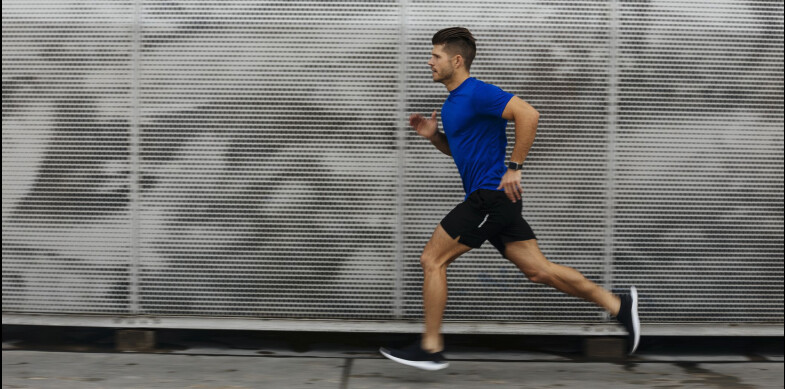
"I know it's going to be a hard challenge, and I know I'm gonna want to quit at times, but if I can give it my all, if I can throw everything into this, I really think I can do it," he says, adding that he will take measurements of his arms, chest, legs and waist on Day 1 and Day 30: "I want to see how my individual body parts react to this 30 days."
On the first day of the 30-day challenge, Morley completes his first 5K run in exactly 33 minutes, which he is not entirely satisfied with—and his time increases each day after that.
"Unfortunately, getting a bit slower each day was the pattern for about a week," he says. "The pain just got so bad in my calves and my knees because obviously I hadn't been doing this level of intensity in terms of cardio probably ever. My legs were starting to struggle with that."
When his time finally begins to improve in the second week, Morley feels much more "motivated to progress," and pushes on. "I'm starting to enjoy running," he says. "I never thought I'd say those words."
His time on the 5Ks continues to decrease into the third week of the month, and he achieves a series of new PRs, culminating in a 28:02 run on Day 20. Unfortunately, this is where the challenge hits a painful, impassable obstacle: Morley breaks his leg.
"It's just so annoying when you try so hard, and put so much time and so much energy into something, and then something like this happens and completely kills it," he says. "I worked so hard for the results that I'd already seen, and I'm sitting her, 11 days after surgery... I can't even walk without crutches... Right now I can't even imagine doing that again."
"I'm absolutely gutted," he says. "I really was looking forward to Day 30 here, to see the results, had my body fat percentage decreased, had my muscles increased in size, or maybe lost some size due to the weight loss? I was really intrigued to see what would happen there."
Morley notes that in the 22 days where he was able to complete a daily 5K, he lost 9 pounds (4.1 kg) and is proud that he was able to knock nearly 5 minutes off his PR—and he says he looks forward to trying the full challenge again once he has healed.
(06/25/2023) ⚡AMPby Men’s Health
2023 Western States 100 Women’s Race
None of the first four women from last year’s race — Ruth Croft, Ailsa MacDonald, Marianne Hogan, Luzia Buehler — returned. That made Zimbabwe’s Emily Hawgood (pre-race interview) the highest returning finisher from 2022. Hawgood’s pretty much a race local now too, living in nearby Roseville, California. But it was 38-year-old Courtney Dauwalter (pre-race interview) that came into the race as a favorite. She won here in 2018 in 17:27 and was looking to avenge a late drop at the 2019 race.
Dauwalter was first up the Escarpment. At 2,500 feet, it’s the race’s biggest climb and it happens right away in the first three miles. But 2022 UTMB winner Katie Schide (pre-race interview) was right there too. Schide, an American who’s lived in France for the past seven years, hit the top in 46 minutes with Dauwalter and the two dropped into the Granite Chief Wilderness together. Already Dauwalter and Schide, age 31, had a three-minute lead on third-place Ida Nilsson (pre-race interview) from Sweden.
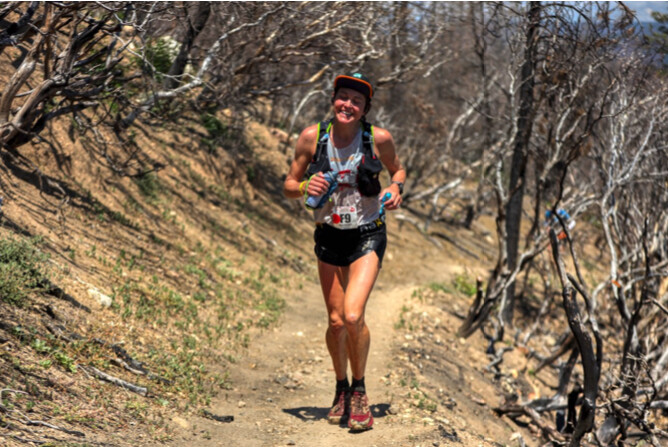
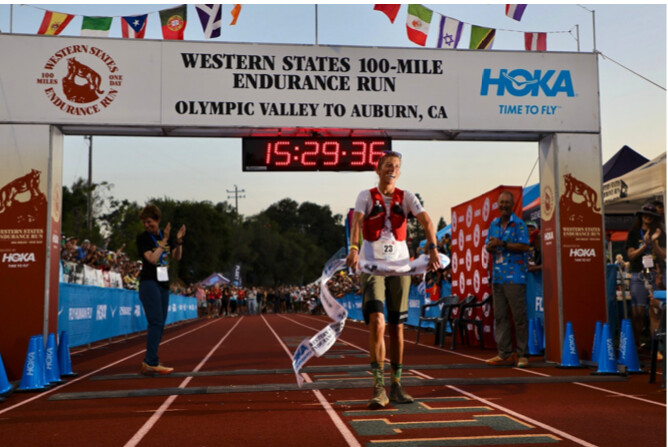
By mile 11, Lyon Ridge, Dauwalter and Schide’s lead on third-place Nilsson had ballooned to eight minutes. And then it got even bigger as the two completely broke away from everyone else. At mile 16, Red Star Ridge, no one was within 14 minutes of the front two. Nilsson, Hawgood, 2023 Black Canyon 100k winner Keely Henninger (pre-race interview), Taylor Nowlin, professional triathlete-turned-ultrarunner Heather Jackson, Canada’s Priscilla Forgie and Jenny Quilty, and 2022 sixth-place finisher Leah Yingling (pre-race interview) all ran inside the early top 10.
The Mosquito Fire limited crew access this year and everyone met their crews for the first time at mile 30, Robinson Flat. Dauwalter was in at 5:07 and out within a minute, and still on her 2019 splits. Schide took a longer break and changed shoes, exiting the aid station three minutes behind the leader. The two had completely broken open the women’s race. Nilsson, in her 100-mile debut, had been alone in third to this point, but was now joined by Henninger, Hawgood, and Nowlin.
At mile 34, Miller’s Defeat, the course record watch started. Dauwalter and Schide were under Dauwalter’s own 2019 splits and Ellie Greenwood’s 2012 course record pace. Dauwalter was five minutes up on Greenwood’s splits, and Schide was three minutes faster. Even more, the two were over 30 minutes in front of third-place Hawgood at mile 38. Dauwalter and Schide were out front for the win and the course record, and the other contenders grouped behind them.
Dauwalter was red hot up the Devil’s Thumb climb at mile 48, but Schide hadn’t given up much time. She took longer in aid and left six minutes after Dauwalter. Hawgood, Nowlin, and Henninger came in together next, now 40 minutes behind second-place Schide.
At Foresthill, Dauwalter was 25 minutes up on record pace. Schide conceded only another two minutes over the last stretch and was 11 minutes behind Dauwalter. While Dauwalter and Schide were still off the front, the race dynamic was heating up behind. The third- through eighth-place women were all in Foresthill together with only three minutes separation. Hawgood was there first among the chase group, but Hungarian living in Hong Kong Eszter Csillag quickly jumped from eighth at mile 52 to fourth at mile 62. Nilsson was fifth, and Henninger, Katie Asmuth, and Nowlin were all there too.
Dauwalter ran 2:10 from mile 62 Foresthill to mile 78 at the American River. Only the men’s winner would run a quicker split on this day, and only eight men have ever run a faster split in the race. Dauwalter was five levels better than everyone else, and she was boldly racing without a pacer too. Schide stayed comfortably in second, but fell further behind Dauwalter’s quickening pace and river conditions necessitated that everyone cross the American River in a boat this year.
From Foresthill to the river, Katie Asmuth vaulted into third, past Eszter Csillag and Ida Nilsson. Asmuth was seventh at Foresthill and picked up four spots on the downhill Cal Street stretch, outrunning common expectations in coming back from injury. All three women split faster from Foresthill to the river than Schide did and even if the front two were gone, the women in general were running really fast. There’s bound to be some bad luck in a 100 miler though, and Henninger fell just before the river and dislocated her shoulder. She would then drop from the race at mile 80, Green Gate, due to that injury.
Dauwalter’s incredible second half and incredible race brought her to the Placer High School track finish in 15:29. Dauwalter completely shattered the record books and set a new standard that is likely to last for a lifetime. Ellie Greenwood’s 16:47 course record had stood since 2012. Dauwalter will next race the high altitude 2023 Hardrock 100 in Silverton, Colorado, on July 14. Dauwalter is the Hardrock course record holder, too, but Western States plus Hardrock will certainly be a challenging double.
Schide challenged Dauwalter early, and outpaced the rest of the women’s field in doing so. Schide was in second for much of the day, ultimately finishing as runner up in 16:43. That was also under the old course record.
Csillag, who was fifth at the 2022 UTMB, had a remarkable second half to finish third in 17:09. It is the race’s fourth-fastest run ever. And she just edged out Asmuth, who moved up from last year’s ninth-place run to finish fourth in 17:21. Asmuth’s time was just inside of Ruth Croft’s winning time from last year, and is the race’s fifth-fastest ever.
Hawgood earned a second straight fifth-place finish. In 2022 she was able to finish fifth in 18:16 and in this year’s faster race Hawgood was fifth in 17:26. That time ranks eighth-best ever and is just faster than what Dauwalter ran to win in 2018.
Taylor Nowlin improved her finish place by one from prior year, but like Hawgood greatly improved her finish time. Nowlin was sixth in 17:40. One-hundred-mile debutante Ida Nilsson was seventh in 17:43, and Priscilla Forgie was just minutes back in eighth at 17:46. Leah Yingling was a repeat top-10 finisher in ninth at 17:49. For perspective, no year had seen more than three women finish under 18 hours before. But this year nine women finished under 18 hours. It is the new standard for women’s racing at Western States.
The 25-year-old Meghan Morgan took the prized 10th-place finish in 18:11, thereby guaranteeing a chance to automatically return next year.
(06/25/2023) ⚡AMPby Justin Mock I Run Far
Western States 100
The Western States ® 100-Mile Endurance Run is the world’s oldest and most prestigious 100-mile trail race. Starting in Squaw Valley, California near the site of the 1960 Winter Olympics and ending 100.2 miles later in Auburn, California, Western States, in the decades since its inception in 1974, has come to represent one of the ultimate endurance tests in the...
more...2023 Western States 100 Men’s Race
There’s nowhere to go but up at the start of the Western States 100, and Jia-Ju Zhao from China charged the opening climb. Despite snow, Zhao hit the top in 42 minutes. Slower to the top, Frenchman Mathieu Blanchard (pre-race interview) and Brit Tom Evans (pre-race interview) turned to greet the brilliant sunrise together.
Zhao won the Ultra-Trail Mt. Fuji 100 Mile in April 2023 and is a two-time winner of the Doi Inthanon by UTMB 100 Mile in Thailand. He pushed his early lead to five minutes at Lyon Ridge, mile 11, while 2022 fourth-placer Tyler Green led the early chase group. Green had finished as high as second here before, in 2021, but was running more aggressively toward the front earlier than ever before.From mile-15 Red Star Ridge to mile-25 Duncan Canyon, the chase group started to make up time on Zhao. Tom Evans, Chinese runner Jia-Sheng Shen, and Dakota Jones (pre-race interview) were among a group that cut four minutes from Zhao’s lead over just nine miles. Evans was third here in 2019 in 14:59, and Jones had just biked 680 miles from his home in Utah to the race start.
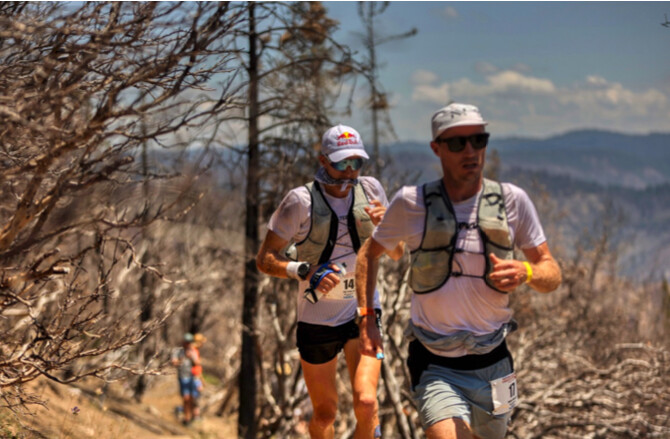
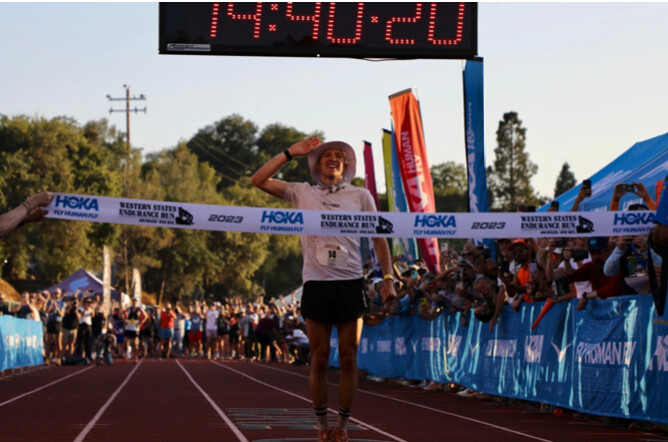
Zhao was quickly swallowed up in the next five miles to Robinson Flat, mile 30, and soon fell out of the top 10. A lead trio of Tom Evans, Dakota Jones, and Jia-Sheng Shen came into aid at 4:45, meeting their crews for the first time. At mile 30 and with Zhao falling backward, Anthony Costales (pre-race interview) was fourth, and then he was with Tyler Green at mile 38 in fourth and fifth. The two would barely separate the rest of the race.Evans and Jones dropped Shen on the climb to Devil’s Thumb, mile 48, and the two leaders came into aid together in 7:03. Four minutes back Costales had caught Shen on the big climb, and Tyler Green, Jeff Colt, New Zealand’s Daniel Jones, Ryan Montgomery, Mathieu Blanchard, and 47-year-old Ludovic Pommeret were inside the top 10. Those six were 14 minutes apart. 2022 third- and second-place finishers Arlen Glick (pre-race interview) and Hayden Hawks (pre-race interview) were back in 11th and 16th, respectively. After earlier moving up, Hawks had just lost several places and would later drop with injury at mile 55. Other top-10 finishers from 2022 Cody Lind, Scott Traer, and Alex Nichols were all noticeably outside the top 10 too.
As the race shifted to its mile-62 Foresthill hub, Evans gained some separation on Jones and entered the aid station first, but as Evans changed shoes and socks, Jones didn’t wait and exited first. Jones was now in the lead by himself for the first time and he was overheard voicing his intention to break Evans. Some 11 minutes back of those two leaders, Green and Costales were again together and in third and fourth. Shen and Jeff Colt were just minutes back of those two, and Colt was remarkably almost an hour faster than a year ago when he finished 11th.Jones and Evans separated leaving Foresthill and anticipation ran high for their next steps. The two had been together for nearly the entirety of the race to this point. Jones wanted to make a move and Evans wanted to keep up with (the) Jones. The duel ended quickly and dramatically though. Tom Evans dropped a 5:54 downhill mile and hit Cal 2, mile 71, in 10:12. That surge pushed Jones eight minutes back at mile 71. It was just nine miles from Foresthill to that split on Cal Street, but the front two had shattered and moved in opposite directions the rest of the race.
Evans ran alone to the river crossing at mile 78, and ultimately to the finish. Tyler Green, Anthony Costales, Jeff Colt, and Jia-Sheng Shen all overtook Dakota Jones on the way to the river too. Forget about Elm Street, Jones was having a bit of a nightmare on Cal Street.
Evans, the 2022 UTMB third placer, continued to put time on the field the rest of the way. He finished in 14:40 and that’s the race’s fourth fastest finish ever. The mark trails only Jim Walmsley and Jared Hazen in 2019, and Walmsley’s 2018 mark too. Evans was a runaway winner, but the rest of the top 10 was much more closely packed.Tyler Green pushed on in second, and held off an Anthony Costales chase over the last 15 miles. Green finished in 15:04. It was his second runner-up finish and a big personal best for the course. He was able to finish with his baby boy on his shoulders. Green’s 15:04 was the race’s 11th-fastest finish ever. Costales was third in 15:09, the race’s 13th-fastest finish ever.
Jia-Sheng Shen and Daniel Jones both finished fast. Shen clocked 15:19 and Jones was fifth in 15:22. Mathieu Blanchard and Ryan Montgomery both overtook Jeff Colt late. Those three — Blanchard, Montgomery, and Colt — finished in 15:37, 15:38, and 15:42, respectively. Local runner Cole Watson bettered his 2022 14th-place finish with a ninth-place 15:54.
In 2019 the top 10 all went under 16 hours. This year’s 10th-place man Janosch Kowalcyzk from Germany just missed matching that feat. He finished in 16:09.
Seven of last year’s top 10 returned, but only Tyler Green was able to again make the top 10. The 2022 top 10 finishers Ludovic Pommeret, Arlen Glick, Scott Traer, Cody Lind, and Alex Nichols finished 12th, 13th, 15th, 16th, and 28th this year, respectively. As earlier mentioned, 2022 runner-up Hayden Hawks dropped.
After running near or in the lead through Foresthill, Dakota Jones finished 17th in 17:00.
Early leader Zhao’s high risk, high reward start ended with a drop at Michigan Bluff, mile 55.
(06/25/2023) ⚡AMPby Justin Mock I Run Far
Western States 100
The Western States ® 100-Mile Endurance Run is the world’s oldest and most prestigious 100-mile trail race. Starting in Squaw Valley, California near the site of the 1960 Winter Olympics and ending 100.2 miles later in Auburn, California, Western States, in the decades since its inception in 1974, has come to represent one of the ultimate endurance tests in the...
more...Why You Need Zone 2 Training in Your Workout Plan
How easy workouts can bring big rewards.
A minute ago, high-intensity interval training (HIIT) was king. Now that gut-it-out-and-get-the-glory work might need to share the crown with slow and steady efforts, thanks to what they do for your body, your longevity, and maybe even your mind.
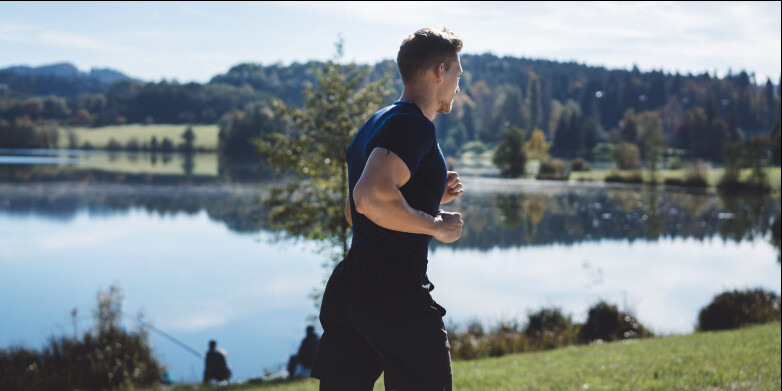
These are the famous zone 2 workouts—keeping your heart rate between about 70 and 80 percent of its maximum—that runners, smart gymgoers, and everyone with a podcast is talking about these days. Think of zone 2 as the range between easy and moderate cardio, where you can carry on a conversation but someone on the other end of a phone would know you’re not sitting down. (Find out more on how to know you’re in the zone by checking out the chart below.)
What happens in zone 2 powers up your endurance, your lifting routine, and your general performance as a human being, proponents say. Here’s what to know about the zone.
How an Easy Effort Brings You Gains
Endurance athletes, such as marathoners, cyclists, and Ironmen, have long understood that zone 2 training is a key to performing well on race day. Look at Eliud Kipchoge, the world’s fastest marathoner, who spends four days a week running in zones so low that any decent runner could keep up with him. Lower-zone training yields high results in endurance sports, says Mike T. Nelson, Ph.D., C.S.C.S., owner of Extreme Human Performance, possibly “because the athletes aren’t out there just trying to fry themselves crazy every single day.” A long Z2 effort today leaves room for more time on your feet or in the saddle the next day. But another huge perk of Z2 training, no matter your sport, is the adaptations your body is making deep within your cells.
It all goes back to your mitochondria, the parts of your cells that generate ATP—that’s the fuel that drives muscle contractions. With age, your mitochondria get kind of like old dog fur: sparse, damaged, and inefficient. “Zone 2 cardio basically helps build your mitochondria,” says Kenneth Jay, Ph.D., a sports scientist who’s done research with the National Research Centre for the Working Environment in Copenhagen. These workouts help you produce more of those cellular powerhouses and shed old, damaged ones. When you get out of that zone, you start using a different energy system that doesn’t stimulate mitochondria to the same extent.
These cellular improvements can help you make gains in lifting, too, by aiding your recovery between sets. People without healthy and plentiful mitochondria “just don’t have the capacity to regenerate ATP fast enough to repeat something. And what they are repeating is half the output of what they were doing at the beginning, so they’re not getting the stimulus that they could,” Nelson says.
Building mitochondria might not get you ripped, but it deserves a lot of cred given that “mitochondrial dysfunction” has been linked to cardiovascular disease, cancer, diabetes, and obesity. Shoring them up with Z2 essentially gives you a more efficient engine to get through life on. “It’s like a hybrid car,” explains Stephen Seiler, Ph.D., a professor of sports science at the University of Agder in Kristiansand, Norway, who’s studied the effects of high- and low-intensity zone training in athletes. Redlining your workouts saps battery power. “You can run off the battery for a little while, but to pay it back, you’ve got to have your main engine.” Consistent Z2 work not only helps you recover better between sets or workouts, but it also helps you get better at everyday challenges: a family hike, an extra-long-haul rush to your flight gate, or a grueling workweek.
Does Zone 2 Work Have to Be Cardio?
In general, yes. That’s because a big benefit of zone 2 cardio is that it helps keep your heart strong and, basically, stretchy. When you lift heavy, your heart’s left ventricle—the one that pumps oxygenated blood to the rest of your body—gets tough, too. Heavy loads make your heart contract in a way that causes it to lay down more muscle fibers. But it lays them down inside the chamber, so there’s less room for blood. (Don’t get smug, endurance folks; a huge amount of cardio makes yours too thin and can leave you vulnerable to issues like atrial fibrillation.) Zone 2 cardio moves blood through the heart in a way that keeps walls at a healthy thickness and stretchiness, so it functions better, says Jay.
There’s debate on exactly how much time you need in Z2 to get the benefits. If you’re mostly sedentary now, any amount of low-intensity movement will help. If you’re somewhat or very fit, experts typically promote a minimum of 30 to 40 minutes of zone 2 cardio twice a week. (For endurance athletes, 80 percent of total training volume in Z2 is a good guideline). The trick is not turning that cardio workout into a sprint endorphin rush. Once you start pushing the intensity, cellular by-products (lactate) begin to accumulate and a different energy-producing process starts to take over. And that’s not what you want to train in these workouts.
Zone 2 is chat-paced work, so bring friends. Fit people might need more than a casual walk; hiking and rucking uphill can get you there. Keep it interesting in the gym by giving ten minutes each to the rower, bike, and treadmill. The key is control. “There is a warrior aspect to this as well,” Seiler says. When you have the discipline to stay in the zone, “there can be a Zen there in going out and finding your rhythm and not be influenced by the person who runs past you that day,” he says.
When it comes to creating a more efficient engine, easy really does do it. It’s not like you can’t have go-hard-or-go-home workouts; you need those, too. But being smart about adding a little low can feed your high.
(06/25/2023) ⚡AMPby Men’s Health
Genevieve Clemons Won’t Let Anxiety Run the Show
When she started her freshman year during the height of the pandemic, the college student felt trapped. Then she started running.
Genevieve Clemons told her story to producer Ann Marie Awad for an episode of The Daily Rally podcast. It has been edited for length and clarity.

I was in a dormitory with one other roommate, but because classes were online, we spent most of our time in this tiny room, taking online classes. And so I just felt really cooped up, irritated, unmotivated. I wanted to find my community, and I just hadn’t.
I go by tons of nicknames, kind of dealer’s choice, but just generally Genevieve.
I am currently going to be a senior at the University of Texas at Austin. I would say two of my biggest passions would have to be nature and wildlife. And, recently, a big passion of mine has become running, just anywhere, as far as I can go. I love running.
When the pandemic hit, it was the end of my senior year of high school, and I was honestly quite miserable even before the pandemic started. I was dealing with some anxiety and perfectionism. I didn’t really feel like I fit in in my high school.
I didn’t have the best experience with high school sports. I was on the tennis team, but I had a coach that treated me not the best. And so I just kind of had a complicated relationship with sports, and I was also having a hard time balancing academics with everything else. I just took things really seriously. I graduated as Valedictorian, but I wasn’t happy.
I wanted to change a lot of things about my life, my outlook and the way I was living it. I saw college as an opportunity for that.
Coming out of high school, I didn’t really have a lot of connections and friendships, and I was really depending on having that normal freshman-year college experience to help me bounce back. So when the pandemic hit, I got pretty depressed.
Having to be cooped up inside all day started out kind of exciting, like, Whoa, what’s happening? Finishing out high school, we get to do school online, it’s easy, and then it just kind of dragged out. I started out my freshman year at UT in the middle of the raging pandemic, and it was fully online, so that was pretty difficult.
At that point where I was really seeking balance, I was like, Maybe I just take everybody else out of the equation, and I just fully look for something and do it because I love it and I want to do it. Maybe that’s the answer.
I knew my dad was a marathon runner, in his younger days. And I was like, Why don’t I try running? And honestly, I hated it in tennis, when we had to do running. Hated it. But I was like, you know what? I’m gonna try it, but I’m gonna do it my way. So I just literally put on some shoes and started running. I didn’t want anyone to know I was running. I didn’t want to know how fast I was going. I just wanted to get out there.
For several, several months, I would just go out on this trail by my house. Sometimes it was just a mile, and that mile was freaking hard, and I would feel accomplished because I was really just shutting everything else out. And it was, How did I feel today? Slowly I had little victories and little moments like, Oh, I actually kind of felt not out of breath today, or, I ran a little faster or went a little further. I was hooked.
I started to run further and further. And I just loved it. I loved the feeling of pushing myself in that way, in the endurance way. I was attracted to distance running. So, one day, I was like, I want to run a marathon. And I shocked myself when I said that, but I was like, my dad did it, I want to do it. I want to see what it’s like.
In my head, when I say something out loud that I’m gonna do it, I’m gonna do it. I was so intimidated. I was like, The last thing I want to do is run with all these people. They’re gonna see how slow I am, they’re gonna see I’m not a real runner. But I was like, You know what? This has all been good so far. Just try it. And that was my new goal after getting out of high school and letting anxiety run the show. I was like, I’m not doing that anymore. Let’s just go.
But I knew that’s the kind of stuff you can’t do alone. Sure, there’s the internet, but I wanted to talk to some people that had done it. So I went to these running groups, and I found a community that I was so embraced by. In sports as a kid, I was always on the sidelines breathing really hard, and the coach was like, “Come on.” I wasn’t used to these people just believing in me and seeing my potential, and wanting to share the gift of this sport.
I did my first trail race, and I was so scared. But my family came and I was like, You know what, I’m not gonna worry about it. I got out there, and I have never ran, or competed, or done something where I felt so joyful. We were all out there to have fun. I would pass people on the trail in the race, and they would say, “Hey, great job.” It was just so encouraging.
So, I just catapulted off from there. I’ve run probably about nine races, maybe ten so far.
Seeing other people believing in me, I realized I could also believe in myself. I think whatever that looks like, having some kind of faith in yourself, listening to whatever that is inside you that guides you to do things—that light, that spark in you—instead of walking in fear and doubt. Everybody has those thoughts, I sure do still. If I’m about to sign up for a race, I think, Are you sure you can do that? Or, Is this really for you? Or, as I’m sure everyone thinks, Can someone like me really do this? To recognize and say, Hey, I’m hearing these voices of doubt, but right now, I’m gonna choose to listen to something else.
Genevieve Clemons is a senior at the University of Texas at Austin, majoring in biochemistry. Earlier this year, she competed in her first 100K race. She was nominated for the show by her very proud dad.
(06/24/2023) ⚡AMPby Outside Online
Training Advice from the Greatest Women Masters Marathoners Alive
While Jeannie Rice and Jenny Hitchings are busy setting masters world records, their differences in training are even more instructive than their similarities
The spring marathon season has come and gone, and it didn’t disappoint, producing sensational races and world headlines. This was particularly true in Boston and London. However, you might have heard little or nothing about two of the best marathon performances in those events.
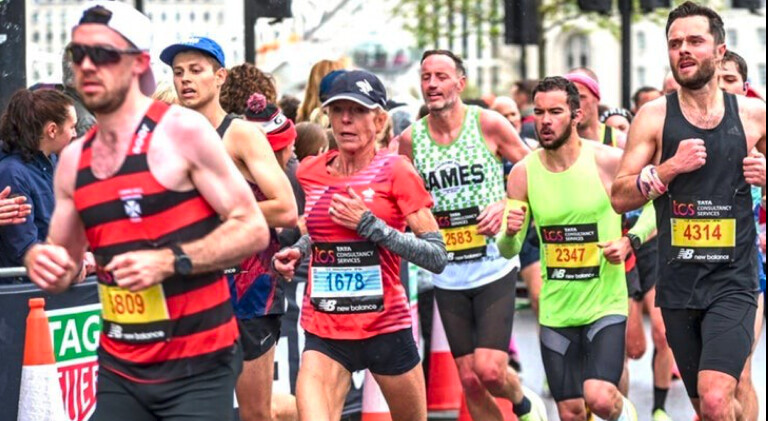
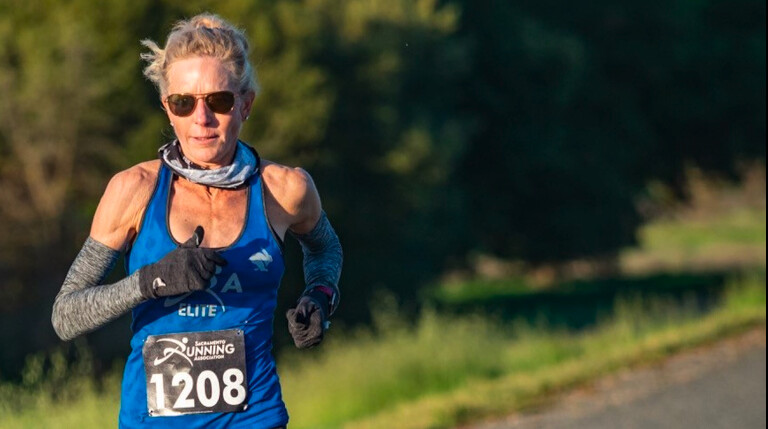
The big media coverage went to seemingly-unbeatable Eliud Kipchoge, who finished sixth at Boston, where Evans Chebet gained his third straight World Marathon Major victory in 12 months. At the London Marathon, Kelvin Kiptum ran 59:45 for the second half, en route to a course record 2:01:27, and Sifan Hassan demonstrated that she can win in the marathon as she has at multiple shorter distances.
But 75-year-old Jeannie Rice and 59-year-old Jenny Hitchings outran them all, on an Age-Gender performance basis, both setting new world records for their age groups. Rice’s 3:33:15 in Boston won’t count, since the Boston course is considered ineligible due to its significant downhill slope and point to point layout, which allows for a tailwind boost. Still, she beat the fastest 75-79 age-group male runner by more than 20 minutes, which has likely never happened before in a global marathon. And five weeks before Boston, at age 74, she ran 3:31:22 in the Tokyo Marathon.
A week after Boston, Hitchings ran 2:45:27 in London—a marathon world record for women in the 55-59 age division. Remarkably, she’s at the high end of that age range, as she’ll turn 60 in early July. Not only that, but it was her personal best marathon in 40 years of running.
Rice was born in South Korea and immigrated to the U.S. in her mid-30s. A retired real estate agent, she now divides her time between south Florida and Cleveland. Hitchings is a longtime resident of Sacramento, California, where she works as a middle-school cross-country coach and a private running coach.
Rice and Hitchings live on opposite coasts, but they have much in common. They’ve both been running for decades, both are extremely consistent in their training, and both log multiple 20-milers in their marathon buildups. Surprisingly, neither makes a particular effort to include hill training, a staple among other top marathon runners. Both are small and lean. Rice stands 5-foot-2 and weighs 96 pounds; Hitchings is 5-foot-4 and 100 pounds.
But Rice and Hitchings also present some stark contrasts. These differences carry an important message: There are many paths to marathon success, and the best senior runners understand this. Through their experience and wisdom, they’ve learned to focus on the positives and jettison the junk.
Here’s a look at some of the major contrasts between master marathon greats Jeannie Rice and Jenny Hitchings.
Both Rice and Hitchings had previously won age-group titles at Boston. Rice chose to return there in April for emotional reasons, as Boston marked her 40th anniversary of marathon running and her 130th marathon. Hitchings selected London for technical reasons. In 2021, she ran 2:45:32 at Boston. It would have been a record except for the point-to-point course prohibition. So this spring she opted for London’s record-eligible course.
Rice: “Boston has always been a special marathon for me,” said Rice. “My preparation wasn’t the best, as I ran the Tokyo Marathon in early March, and then did some traveling. But I wanted to have my Boston celebration, and I had quite a few running friends there with me.”
Hitchings: “London was on my marathon ‘bucket list’ anyway, and it gave me a great opportunity to set an age-group world record,” said Hitchings. “Since my 2:45 at Boston didn’t count, I figured I should take a crack at London while I was still in the age group.” [She will turn 60 in early July.]
Rice has always been self-coached. Hitchings, a running coach herself, has had a longterm coach-athlete relationship with Chicago-based Jenny Spangler. Spangler won the U.S. Olympic Trials Marathon in 1996 and ran a 2:32:39 marathon in 2003, after turning 40.
Rice: “I’ve been approached by people who wanted to coach me, but they seemed expensive and had other demands I didn’t like. I listen to what my friends do and what others are doing in training. I try to run 50 miles most weeks, and a bit more before my marathons. But I don’t actually follow a schedule. Mostly I just train the way I feel. I’m still running strong and beating records, so I must be doing something right.
“I know it’s possible that a coach could help me the way Gene Dykes’s coach helped him, but it’s also possible that things could go wrong. I like to decide my training according to how I feel each day.”
Hitchings: “I coach other runners, and I could certainly coach myself, but you know what they say about doctors who treat themselves: They have a fool for a patient. I think that can also apply to athletes who coach themselves. It’s just smarter to have someone looking over your shoulder, and adding some perspective.
“I’m one of those who’s often guilty of running too fast on my easy days, or getting excited and going too hard when I’m training with friends. Jenny [her coach] holds me accountable for those kinds of things. She has a great personal performance record that I respect a lot, and has been coaching for many years.
“It’s also important to me that she’s a female coach of my own age. She understands what I’m going through and dealing with in terms of female physiology.”
Both runners say they enjoy a relaxed morning cup of coffee before launching into their days. But Rice is up earlier, and often out the door quicker. Hitchings needs more time to be ready for a solid run.
Rice: “I like to get my run done early, so I have the whole day in front of me when I get back home at 7:30 A.M. or so. I’m usually running by 6 A.M. In Florida, where I spend my winters, that can be important for the cooler weather.
“But on days when I’m going 20 to 23 miles, I’ll get up at 3:30 A.M. and begin running at 4:30 A.M. I’ll go two hours on my own, and then join a local training group for their morning loop, which gives me another hour or so.”
Hitchings: “I coach a number of people who can roll right out of bed and start running. I’m not one of those. My favorite time to run is about 8 A.M. or 8:30 A.M. in the morning. I like my coffee first, and the morning newspaper, and I always make sure to get a light breakfast in my stomach. Since my favorite place to run is the American River Parkway, that gives me another 15 minutes of drive time before I get going.
“There have been times when I had to be a noontime runner, and that was OK, too. But 4 P.M. or 5 P.M.? That’s not going to happen. By that time of day, I’m too tired or depleted.”
This one is easy for Rice, who has never been injured except for a fall (and banged-up knee) in 2021 that cost her several weeks of running. Hitchings also considers herself relatively injury-free, but she has encountered an assortment of typical runner injuries through the years: Achilles tendinitis, piriformis pain, and surgery for Haglund’s deformity (a bony growth at the back of the heel resulting from mostly genetic causes).
Rice: “I go to the gym three times a week for a light strength workout, some pushups, and some stretching. But it’s not a serious session at all. I also golf for fun; I really enjoy golfing.”
Hitchings: “I try to do light weight work as much as I can, and I ride my bike 20-30 miles a week outdoors, and do Peloton indoors. Recently, I added Pilates once a week to improve my strength and mobility.
“Also, Jenny and I have agreed to take one hard running day out of my weekly schedule. I used to do speed work of some kind on Tuesday and Thursday, and a long weekend run. Now I’m down to speed on Wednesday, and a weekend long run that often has some tempo-pace segments.”
While both are clearly fit, Rice and Hitchings say they enjoy a wide variety of foods, and have no particular restrictions in their diets. Both enjoy wine drinking. Hitchings admits to a sweet tooth, too, but desserts are not a problem for Rice.
Rice: “Breakfast is usually oatmeal with fruit and nuts. At lunch and dinner, I enjoy a green salad with some sort of seafood or fish on top. I’ve never liked sweets and don’t crave them, but I love cheese and nuts. That’s my big downfall—cheese and nuts. The only supplements I take are calcium with vitamin D, B-12, and magnesium.”
Hitchings: “I eat ‘clean,’ a well-balanced diet with an emphasis on carbs. I simply don’t feel good if I eat heavy, creamy, or fried foods. I get most of my vitamins and minerals from real foods, though recently I’ve added Athletic Greens to my routine.
“When I’m in heavy marathon training, I find it hard to maintain my weight, so I’ll have some protein shakes and maybe one chocolate bar, muffin, or pastry per day. I’ve got a drawer full of vitamins, calcium, collagen, and iron supplements, but I never seem to stick with any for long. It’s just too much.”
While realistic about their futures, neither Rice nor Hitchings sound the least bit intimidated by the unwritten future. Despite aging, both are driven to perform. They hope to keep running hard and fast, and chasing age-group records. Both plan to run the Chicago Marathon on October 8, as it will be the site of this year’s Abbott World Marathon Majors Wanda Age Group Championships.
Rice: “Getting faster at 75 is almost impossible, but this year I’m going to run a few road miles to work on my speed. I’ve won my age group in every World Marathon Major but London, so I want to get back to London in the next several years. I want to run the Sydney Marathon, the Ho Chi Minh City Marathon, and, of course, I must run the Seoul Marathon in the country where I was born.”
Hitchings: “I’m running faster at 60 than I’ve ever run in my life. My time in London was literally my lifetime best, and I’ve been running a long time. Sometimes I get asked, ‘When are you going to stop running?’ My answer is always: ‘Why would I stop?’ I’m still getting faster, and I’m still enjoying it.”
Rice, though 15 years older, feels the same. It’s fun winning major marathons, of course, especially when she beats most men her age. In local and regional races, she challenges herself to finish as high as possible in the masters division against females three decades younger (and sometimes wins outright).
“I love competition,” she says. “I’m motivated to train hard, and I’m excited about setting more records as long as I can. Maybe into my 80s.”
Running is about finish times, sure, but it’s even more about attitude. Find the goal that’s right for you, and go after it. This is the approach both Rice and Hitchings have followed successfully, and neither plans to change course now, no matter how many candles adorn their next birthday cake.
Both are on a shared mission, and they’d like others to join them. As Hitchings says: “I think if we keep a positive attitude and motivation, we can go out there and do much more than people think. It’s important to show others that we can defy the way aging has been defined for us for so long.”
(06/24/2023) ⚡AMPby Outside Online
Former University of Oregon runner wins World Series of Poker event
Former University of Oregon track and field runner Chris Brewer has hit the jackpot, winning over $5 million and a prestigious golden bracelet at the 2023 World Series of Poker (WSOP). From the track to the poker table, Brewer won a high-roller No-Limit Hold’em event with a substantial $250,000 buy-in, with some luck on the river (final card).
Brewer had his back against the wall when his opponent, Russia’s Artur Martirosyan, raised him with ace-king. Brewer re-raised, pushing his chips all-in, which set up a bad beat for the ages that worked out in Brewer’s favour, netting $5.2 million for the win. Watch below.
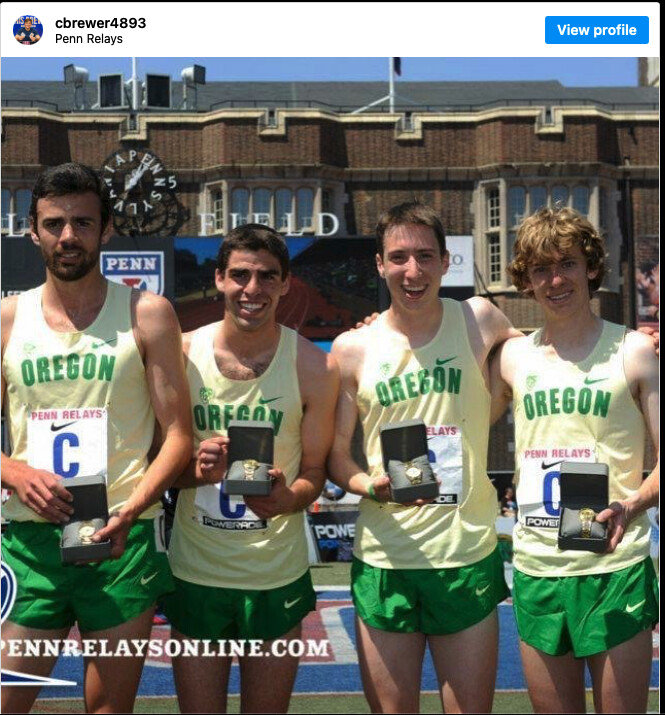
Brewer, 30, ran for the University of Oregon Ducks cross-country and track and field program for five years and was a teammate to renowned athletes like Australian Olympian Jessica Hull, 17-time NCAA champion Edward Cheserek and American 25 km record holder Parker Stinson. During his collegiate career, Brewer held bests of 3:43.97 over 1,500m and 4:06 for the mile. When he graduated from Oregon with a degree in mathematics in 2016, he took a break from running and found success playing online poker.
In a 2021 interview with Pokernews, Brewer was asked if he credits his card-playing success to his running background, resulting in an all-time quote:
“Running is much harder than poker. You have to put in way more effort. Anything I’ve accomplished in poker is easy compared to waking up in the morning and running 15 miles,” replied Brewer. “When you’re a runner, you have to be mindful of your diet and sleep. Poker is a different ballgame—I sacrificed many years to pursue running. So if I have to fold a hand, it’s no big deal. I never felt anxious playing poker. Running races, on the other hand, gave me plenty of anxiety.”
Although Brewer may not see many similarities between the two, it is evident that the discipline and dedication he acquired from running have translated into his poker success.
(06/24/2023) ⚡AMPby Running Magazine
Canadian Olympian Julie-Anne Staehli gives old running shoes a new purpose
Canadian distance runner and Olympian Julie-Anne Staehli is renowned for her success in the 5,000m, but she has also made a profound impact through a project that’s close to her heart.The ReRun Shoe Project originated in 2016 during a local road race in Kingston, Ont., when Staehli and her friend, Kurtis Marlow, realized the number of shoes they accumulate each year. This gave her the idea of repurposing shoes to enable others in their physical activity. Staehli explains, “The project started with a personal donation to a local youth sports organization, which sparked the idea of repurposing shoes to make a difference in the community. With no local organization dedicated to donating lightly used shoes on a regular basis, we took the initiative to create The ReRun Shoe Project.”The primary objective of ReRun is to collect lightly used running shoes that are no longer suitable for running but that could be worn by those without access to expensive gear. By reducing the number of unused shoes and donating them to local organizations, ReRun aims to provide shoes with another purpose and enhance the lives of others.“Most of the recipients of shoes are elementary school and college students, but we have also built a network with organizations like Big Brothers and Big Sisters to ensure the shoes reach those who need them the most,” says Staehli.Julie-Anne Staehli: Run Your Way” — Canadian Running Magazine
Having grown up in the small town of Lucknow, Ont., Staehli feels personally connected to this initiative; she received her first pair of spikes through a donation. “Making physical activity more accessible and witnessing the impact, regardless of who receives those donations, is truly meaningful,” she says.
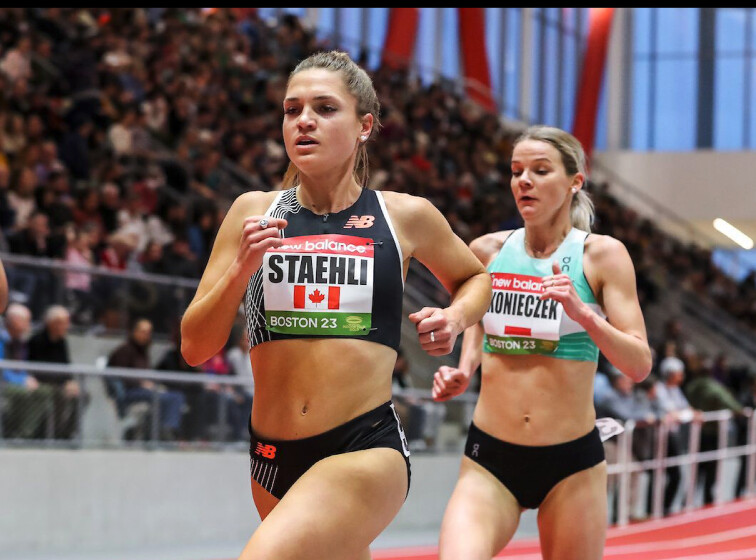
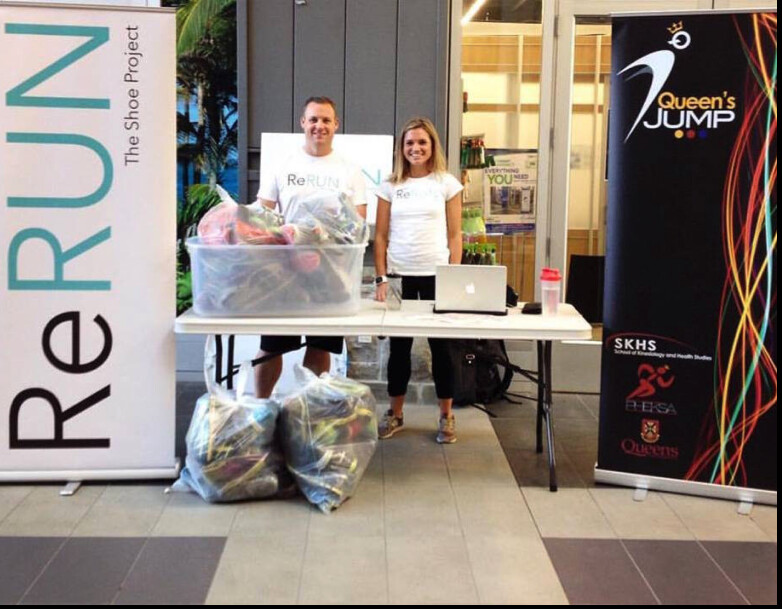
Staehli takes pride in the project’s meticulous selection process, accepting lightly used shoes with good soles that are still suitable for walking or other activities. Its mission is to ensure the shoes find their way into deserving hands.A poignant moment for Staehli and Marlow that reinforced their commitment to the cause occurred at a women’s shelter in Kingston. Staehli recalls, “We donated hundreds of shoes, mainly adult sizes, and all the shoes disappeared within the hour. This highlights the immense need for shoes in our community.”
To date, ReRun has collected more than 5,500 pairs of shoes. The project has expanded to collect donations in three stores in Kingston, two stores in London and multiple locations in Edmonton and Calgary. ReRun serves as a remarkable example of how a simple idea and a dedication to giving back can create a lasting impact on communities.y providing shoes with a new lease on life, ReRun is taking strides to make physical activity more accessible—one step at a time.
(06/24/2023) ⚡AMPby Running Magazine





